
World Peace Newsletter - The greatest thing in life is internal peace, external peace and global peace!
Peace is the key ingredient to Happiness.
Peace within means peace without.

World Peace Newsletter - The greatest thing in life is internal peace, external peace and global peace!
Peace is the key ingredient to Happiness.
Peace within means peace without.
Learn Peace - Teach Peace - Share Peace!
PEACE 101, 201, 301 & 401 CURRICULUM
The following is a proposed curriculum / framework for peace education in primary schools and universities.
Since there does not currently seem to be many Share-Able, Open-Source peace training programs readily available on the world wide web this training program is merely a starting point and will need to be improved upon by motivated individuals, teaching professionals, NGO's and experts in the field of peace. The main goal of of this endeavor is to create a greater understanding of how peace will become a reality. The intention is to create an educational peace site where human history, human evolution, human achievement and human communication are discussed in relation to finding hope, harmony and a path to peace through training. If we can learn from the failures and successes of the past it will greatly improve our chances to reduce the incredible pain, death and destruction that war creates. The wisdom we can learn from this education and comprehension can lead us to a place where peace and prosperity coexist in a golden age.
The framework starts with an introduction of peace followed by a partial history of human civilization evolution prior to the modern world, showing how conflict has played a major part in our history. It also allows us to analyze the reasons for many of these conflicts, and the rise and fall of civilizations so that we can learn from them and hopefully not have to repeat the mistakes of the past which have lead to war.
Next is a discussion of peace processes and current peace levels and organizations in the world. By reviewing some of the past peace treaties it becomes apparent that many of the past conflicts have attempted to be resolved through negotiations and agreements, rather than by force alone. Many of these treaties were created after the conflicts were concluded, mainly to stop more pain and loss of loved ones in the future. Last, is a section on peace occupations and practicing and promoting peace in daily life.
As this website grows and develops it will hopefully become a useful resource with information and links to other peace organizations so that we can all benefit from the peace building efforts of citizens, companies, governments, NGO's and organizations across the planet.
This Peace Education 101 curriculum has also been posted to World Peace Newsletter . com
Introduction to Peace.
Peace definitions.
Types and locations of Peace.
Philosophy of peace in life.
Past and present peace makers.
Peace education agenda.
Using the arts to teach peace.
Introductory peace education through mindfulness, self awareness and interpersonal communications.
Peace 201: History of Humankind
The Ages of Humankind.
History of Human Civilization.
History of Human Achievement.
The Seven Wonders of the World.
History of Wars.
Deadliest Wars and Natural Disasters.
Brief Background of World Religions.
Peace processes and ways to facilitate peace.
Conflict resolution and transformation.
Online Peace programs.
Inner Peace, Enlightenment, Salvation and the End of Suffering.
Peace in countries and governments.
Peace organizations.
Peace awards.
Peace Treaties.
Practicing Peace in Real Life.
Teaching Peace.
Promoting Peace.
Peace Occupations.
The Hague Agenda for Peace and Justice for the 21st Century - Dec. 31, 2017
- Insist that peace education be made compulsory at all levels of the education system.
- Demand that education ministries systematically implement peace education initiatives at a local and national level.
- Call on development assistance agencies to promote peace education as a component of their teacher training and materials production.
BOOK 2: Learning to Abolish War - Sample Learning Units for Elementary, Middle and Secondary School
Peace Lessons from Around the World
Time to Abolish War - A Youth Agenda for Peace and Justice
UNESCO's Integrated Framework of Action on Education for Peace, Human Rights, and Democracy
United Nations Universal Declaration of Human Rights - Dec. 17, 2017
United Nations International Covenant on Civil and Political Rights
Available in many languages, the UN homepage has news, the week in review, focus issues, statistics, photos, radio, video and more.
Peace Operations Training Institute Courses - Dec. 17, 2017
This website offers courses online or with a textbook. Some are free and available in multiple languages. It is also interesting just to see the numerous courses offered in the various fields relating to peace keeping, humanitarian efforts and security operations. Each course has a 10-30 page pdf preview that you can view prior to purchasing.
Peace Operations Training Institute Security Training Manual
This 28 page pdf manual (Lesson 1) was developed for UN workers in the field but also has useful information for classroom education.
Cultivating Peace education materials website - Dec. 17, 2017
This Canadian organization offers pdf manuals, handouts and videos for peace educators.
Mindfulness - Minds Incorporated - Dec. 16, 2017
"Mindfulness means to pay attention to the present moment, with intention, in a non-judgmental way. It is a practice of awareness and observation." - Jon Kabat-Zinn
This simple practice gives us the ability to respond, rather than impulsively react to any event or circumstance in our lives. With a better understanding of the inner workings of our minds and bodies, we learn to make decisions from a place of strength, wisdom, and compassion. As these "mindful moments" add up, they allow us to feel a greater sense of peace in our daily lives and help us connect with ourselves and others in a more positive way.
Mindfulness creates space, changing impulsive reactions to thoughtful responses.
United States Institute of Peace: Educator Toolkits for High School & Middle School Classrooms - Dec. 12, 2017
This webpage has links to the pdf manuals in English, Spanish, French and Arabic. You can click on the two links below to go directly to the english version pdf manuals.
United States Institute of Peace: Peace Clubs, Contests and additional resources for Students
"The World Peace Game" by John Hunter - Dec. 5, 2017
The World Peace Game is a hands-on political simulation that gives players the opportunity to explore the connectedness of the global community through the lens of the economic, social, and environmental crises and the imminent threat of war. The goal of the game is to extricate each country from dangerous circumstances and achieve global prosperity with the least amount of military intervention. As nation teams, students will gain greater understanding of the critical impact of information and how it is used.
United States Intstitute of Peace, Peacebuilding Program - Dec. 4, 2017
Bond Events: Dramatic climate changes involving / contributing to migrations and civilization collapses / creations - Dec 3, 2017
Facebook Page "Peace Education" created in June 2014. Thanks to all for helping the community grow to 400,000 by December 2016. Peace be with us all.
Facebook Page @ Facebook.com/Education4Peace - Click Here 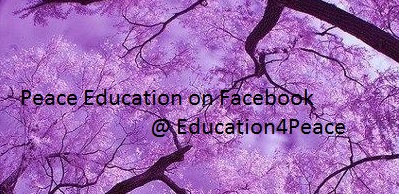
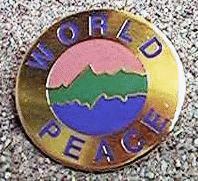
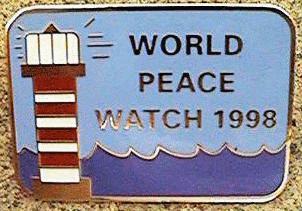
1) Introduction to Peace.
2) Peace Definitions.
3) Types and Locations of Peace.
4) Philosophy of Peace in Life.
5) Past and Present Peace Makers.
6) Peace Education Agenda.
7) Using the Arts to Teach Peace.
8) Introductory Peace Education through Mindfulness, Self Awareness and Interpersonal Communications.
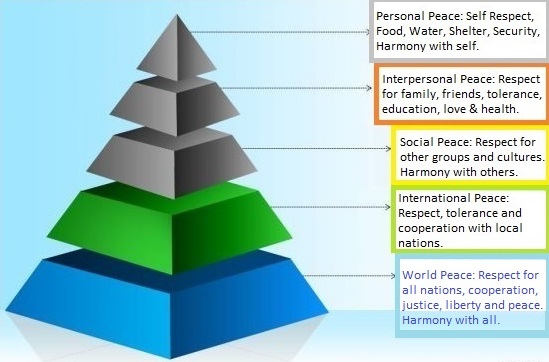 1) Introduction to Peace:
1) Introduction to Peace: Peace is not merely the absence of war and hatred (negative peace / cold war) but also the presence of cooperation, compassion and worldwide justice (positive peace / hot peace).
"The term 'peace' originates most recently from the Anglo-French pes, and the Old French pais, meaning 'peace, reconciliation, silence, agreement' (11th century). But, Pes itself comes from the Latin pax, meaning "peace, compact, agreement, treaty of peace, tranquility, absence of hostility, harmony." The English word came into use in various personal greetings from around 1300 CE as a translation of the Hebrew word shalom, which, according to Jewish theology, comes from a Hebrew verb meaning 'to be complete, whole'. Although 'peace' is the usual translation, however, it is an incomplete one, because 'shalom,' which is also cognate with the Arabic 'salaam', has multiple other meanings in addition to peace, including justice, good health, safety, well-being, prosperity, equity, security, good fortune, and friendliness. At a personal level, peaceful behaviors are kind, considerate, respectful, just, and tolerant of others' beliefs and behaviors tending to manifest goodwill.
In many languages, the word for peace is also used as a greeting or a farewell, for example the Hawaiian word aloha, as well as the Arabic word salaam. In English the word peace is occasionally used as a farewell, especially for the dead, as in the phrase rest in peace.
Wolfgang Dietrich in his research project which led to the book The Palgrave International Handbook of Peace Studies (2011) maps the different meanings of peace in different languages and from different regions across the world. Later, in his Interpretations of Peace in History and Culture (2012), he groups the different meanings of peace into five peace families: Energetic/Harmony, Moral/Justice, Modern/Security, Postmodern/Truth, and Trans-rational, a synthesis of the positive sides of the four previous families." - Wikipedia
2) Peace definitions:
Peace is a vastly greater concept than the lack of war, violence, poverty and inner turmoil. Peace is the combination of bodily peace, family peace, local peace, national peace, inner peace and world peace. Accordingly, true peace must begin with food, water, nutrition and health care for both rich and poor alike. Next, peace training starts with the family and in our education systems. Peace needs to surround us in the form of local safety and security which is best achieved through communication and negotiation with neighbors to attain mutual trust and respect for one another. Governments and state leaders can assist in the peace process by creating and encouraging/enforcing moral and ethical standards, thus promoting justice, liberty, freedom, ethnic and religious tolerance, and constructive relations with all nations.
Inner peace may be the most important key to peace because through love (both of self and humankind), faith, compassion, hope, kindness, self-esteem, gratitude and wisdom (self-cultivation), peace will spread to those around you. World peace is achieved by combining all the "peaces" together to create hot peace, as opposed to cool peace (which is also very important); inner tranquility and freedom from hostility, anger, hatred, revenge, prejudice.
Hot peace is the absolute presence of worldwide justice, freedom, cooperation, unity, (working with both friends and enemies), education, negotiation, mutual respect, sharing, compassion, kindness, happiness, joy, equanimity, human dignity and harmony with nature, animals and mother earth. World Peace is merely an unsolved puzzle waiting for loving people to put the "peaces" together. Through love, World Peace not only becomes possible, peace becomes inevitable.
Just a few of the benefits of human beings working together to create peace for all will be reduced poverty, crime, war, hate, injustice, pollution, global warming, etc. The greatest benefit is living in a world where love, caring and compassion become the standard on this beautiful planet.
"Peace is a lack of conflict and freedom from fear of violence between heterogeneous social groups. Benevolent leaders throughout history have shown restraint establishing regional peace and economic growth through peace treaties that resulted from deescalating conflicts and multilateral and bilateral peace talks. Commonly understood as the absence of war or violent hostility, peace often involves compromise, and therefore is initiated with thoughtful active listening and communication to enhance and create genuine mutual understanding.
Because peaceful behavior can result from calm or happy emotional states, people are sometimes understood to "feel peaceful." Deescalating conflicts therefore can involve reducing or improving emotions through compliments and generosity. Small gestures of generosity that are reciprocated are sometimes followed with even more gestures. Benevolent generosity can eventually become a pattern that is a lasting basis for improved relations. Peace talks often start without preconditions and preconceived notions because they are more than just negotiating opportunities. They place attention on peace in a way that itself is influential. Peace talks are sometimes also uniquely important learning opportunities." - Wikipedia
3) Types & locations of peace:
1) Inner.
2) Family.
3) School.
4) Work place.
5) Community.
6) State.
7) Nation.
8) Continent.
9) Planet.
Consider the importance of peace at each of these "locations". How would you order these in importance in achieving peace?
"Wishing to order well their States, they first regulated their families.
Wishing to regulate their families, they first cultivated their persons.
Wishing to cultivate their persons, they first rectified their hearts.
Wishing to rectify their hearts, they first sought to be sincere in their thoughts.
Wishing to be sincere in their thoughts, they first extended to the utmost their knowledge.
Such extension of knowledge lay in the investigation of things.
Things being investigated, knowledge became complete.
Their knowledge being complete, their thoughts were sincere.
Their thoughts being sincere, their hearts were then rectified.
Their hearts being rectified, their persons were cultivated.
Their persons being cultivated, their families were regulated.
Their families being regulated, their States were rightly governed.
Their States being rightly governed, the entire world was at peace."
- Confucious
It is important for peace to be ingrained in children from the very beginning. In the home, in the classroom, in the community and in religious practices. Peaceful children tend to grow up to be peaceful, happy adults. When children are exposed to prejudice, bigotry, anger, hatred and fear of other cultures and peoples, it is very hard for them to break away from these pre-dispositions when they become young adults.
4) Philosophy of peace in life:
What is the Meaning of life? Why are we here? Where are we going? Are we growing and evolving? Are we happy and fulfilled? Are we peaceful?
Additional philosophical discussions concerning: ethics, morals, values, logic, perception, philosophies, greater good, retribution, justice, negotiation, collaboration, etc....
Are these universal or subject to local, national, racial, political or religious affiliations or educational upbringing?
Can they be easily changed?
A change in perception leads to a change in attitude, which leads to a change in behavior, which leads to a change in the world.
What are the key values people hold most dear in life? How would you rank them?
Things such as Love, Respect, Friendship, Belonging, Justice, Freedom ....
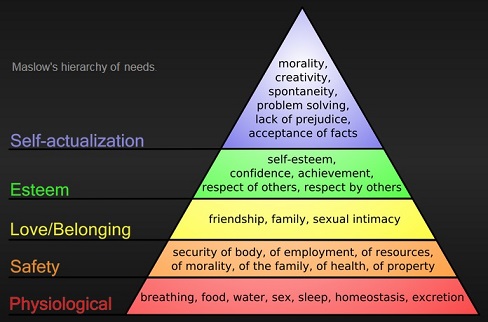
Here are just a few; Mother Teresa, Gandhi, Dalai Lama, [Nelson Mandela, Desmond Tutu (anti-apartheid)] Lao Tsu, Confucious, Buddha, Jesus, Muhammed, Sri Gupta, Martin Luther King (civil rights), [Abraham Lincoln, William Wilberforce, Harriet Beecher Stowe, Harriet Tubman (abolitionists)], [Susan B. Anthony, Shirin Ebadi, Malala Yousafzai (women's rights)], Florence Nightingale (founder of modern nursing), Thich Nhat Hanh, Sri Chinmoy, Prem Rawat, Kofi Annan, ....
"If we have no peace, it is because we have forgotten that we belong to each other. I was once asked why I don't participate in anti-war demonstrations. I said that I will never do that, but as soon as you have a pro-peace rally, I'll be there." - Mother Teresa
"Our ability to reach unity in diversity will be the beauty and the test of our civilization."
"If we are to teach real peace in this world, and if we are to carry on a real war against war, we shall have to begin with the children."
Relationships are based on four principles: respect, understanding, acceptance and appreciation."
"We but mirror the world. All the tendencies present in the outer world are to be found in the world of our body. If we could change ourselves, the tendencies in the world would also change. As a man changes his own nature, so does the attitude of the world change towards him. - Mahatma Gandhi
"As people alive today, we must consider future generations: a clean environment is a human right like any other. It is therefore part of our responsibility toward others to ensure that the world we pass on is as healthy, if not healthier, than we found it. We must recognize that the suffering of one person or one nation is the suffering of humanity. That the happiness of one person or nation is the happiness of humanity." - Dalai Lama
"Education is the most powerful weapon which you can use to change the world."
"I like friends who have independent minds because they tend to make you see problems from all angles." - Nelson Mandela
"Do your little bit of good where you are; it's those little bits of good put together that overwhelm the world."
"Differences are not intended to separate, to alienate. We are different precisely in order to realize our need of one another."
"If you are neutral in situations of injustice, you have chosen the side of the oppressor. If an elephant has its foot on the tail of a mouse, and you say that you are neutral, the mouse will not appreciate your neutrality."
"My father always used to say, 'Don't raise your voice. Improve your argument.' Good sense does not always lie with the loudest shouters, nor can we say that a large, unruly crowd is always the best arbiter of what is right." - Desmond Tutu
"Let us pick up our books and our pens. They are our most powerful weapons. One child, one teacher, one book and one pen can change the world." - Malala Yousafzai
"The doorways to the realm of heaven (Brahma) are right here on earth and they are four in number: we enter the highest heavenly abodes through loving kindness (metta), compassion (karuna), sharing joy (muditha), and equanimity (upekkha). It is through service in this world, not by abandoning this world, that we attain to heavenly realms or spiritual fulfillment." - Buddha
"I have just three things to teach: simplicity, patience, compassion. These three are your greatest treasures. Simple in actions and thoughts, you return to the source of your being. Patient with both friends and enemies, you accord with the way things are. Compassionate toward yourself, you reconcile all beings in the world." - Lao Tsu, Tao Te Ching: 67
"Do you think you can enter the garden of bliss without facing the trials and pains of those entering before you?" - Muhammad
"Blessed are the peacemakers, for they shall be called the children of God. Peace I leave with you, My peace I give to you; not as the world gives do I give to you. Let not your heart be troubled, neither let it be afraid." - Jesus
"It is not possible to be in favor of justice for some people and not be in favor of justice for all people."
"Those who love peace must learn to organize as well as those who love war."
"Every man must decide whether he will walk in the light of creative altruism or the darkness of destructive selfishness. This is the judgment. Life's most persistent and urgent question is, What are you doing for others?" - Martin Luther King, Jr.
"Those who deny freedom to others deserve it not for themselves."
"Whenever I hear anyone arguing for slavery, I feel a strong impulse to see it tried on him personally."
"Fourscore and seven years ago, our fathers brought forth on this continent a new nation, conceived in liberty, and dedicated to the proposition that all men are created equal." - Abraham Lincoln
6) Peace education agenda: (from Hague Appeal for Peace)
A youth agenda for peace and justice:
In order to combat the culture of violence that pervades our society, the coming generation deserves a radically different
education, one that does not glorify war but educates for peace and nonviolence and international cooperation.
The Hague Appeal for Peace seeks to launch a worldwide campaign to empower people at all levels with the
peacemaking skills of mediation, conflict transformation, consensus-building and non-violent social change.
The Peace Education Network of the British National Peace Council suggests the following approach to understanding education for peace. Values and attitudes for peace education:
a) Respect for others regardless of race,
gender, age, nationality, class, sexuality,
appearance, political or religious belief,
physical or mental ability.
b) Empathy and willingness to
understand the views of others from
their standpoint.
c) A belief that individuals and groups of
people can make for positive change.
d) Appreciation of and respect for
diversity.
e) Self-esteem and accepting the intrinsic
vale of oneself.
f) Commitment to social justice, equity
and nonviolence.
g) Concern for the environment and
understanding of our place in the
ecosystem.
h) Commitment to equality.
Aims of peace education:
i) To understand the nature and origins
of violence and its effects on both victim
and perpetrator.
j) To create frameworks for achieving
peaceful, creative societies.
k) To sharpen awareness about the
existence of unpeaceful relationships
between people and within and
between nations.
l) To investigate the causes of conflicts
and violence embedded within
perceptions, values and attitudes of
individuals as well as within social and
political structures of society.
m) To encourage the search for
alternative or possible nonviolent skills.
n) To equip children and adults with
personal conflict resolution skills.
What is peace education?
The peace education we deserve includes human rights, development and environmental education. Human security and disarmament issues, reconciliation, conflict prevention/ resolution training, critical media awareness, gender studies, non-violence and international relations are all part of peace education. The methodology of peace education encourages critical thinking and prepares students to act on their convictions.
A definition of Peace Education:
Teaching and learning about the values, attitudes and forms of behaviour that reflect respect for life, for human beings and their dignity, and for all human rights, the rejection of violence in all its forms and commitment to the principles of freedom, justice, solidarity, tolerance and understanding among peoples and between groups and individuals.
Peace education does not simply mean learning about
conflicts and how to resolve them peacefully. It should also
involve learning methods which are participatory and
encourage young people to express their own ideas and
cooperate with each other to achieve common goals.
- National Peace Council, UK
7) Peace education through creativity/art/problem solving:
Peace education not only needs to be taught in the head but also in the heart.
Using the arts and through creativity and emotion, peace can be integrated into our soul in ways that words and logic can not do alone.
Depending on the age group, the following activities can be helpful:
Coloring.
Drawing.
Finger Painting.
Paper Mache.
Collage.


8) Introductory Peace education through Mindfulness, Self Awareness and Interpersonal Communications:
"Peace education is the process of acquiring the values, the knowledge and developing the attitudes, skills and behaviors to live in harmony with oneself, with others and with the natural environment." - Wikipedia
The following information comes from PeaceAlliance.org :
Social and Emotional Learning: Teaches self awareness, empathy, impulse control, motivation and social skills. Social and emotional learning is the process through which children and adults acquire and effectively apply the knowledge, attitudes and skills necessary to understand and manage emotions, set and achieve positive goals, feel and show empathy for others, establish and maintain positive relationships, and make responsible decisions. This approach is based on the understanding that the best learning emerges in the context of supportive relationships that make learning challenging, engaging and meaningful.
Communication Circles & Dialogues: This works well right from the start. Children of elementary age start the day in a circle with their teacher. Everyone gets to hear each other and have space to share what is happening in their lives. Perhaps a death in the family, a birth, someone in the hospital, divorce, fight with a friend or sibling. Despite the trauma, people are expected to behave and appear normal. Discovering that other people in the group, whether this is a youth circle or an adult circle, is beneficial and helps with empathy, understanding and personal bonding.
Restorative Justice with trained facilitator: This is when an offense has taken place involving one or more persons, such as bullying, fighting or public humiliation. All parties impacted by that situation come together and each is pre-interviewed. It is essential that the offender is willing to take responsibility and make things better. Victims must agree as well. Both victim and offender are invited to bring support people with them.
Mindfulness/Meditation: Mindfulness is a simple but powerful technique to focus attention, manage emotions, handle stress, and resolve conflicts. This allows people to make better decisions in stressful moments, rather than only in retrospect and can provide a much more positive social environment with fewer conflicts that would require attention. It addresses anger management, amygdala hijacking (15 seconds of rage, seeing red, can cause damage to your life for days, weeks, months or years to come). In heated situations, people are taught to try and keep calm so they can apply one of lifes most valuable lessons: Learn to respond verses react. Our basic human instinct is to react (fight or flight) but with training we can learn to use our higher consciousness and develop wiser responses to non life threatening situations.
* Peacebuilding is a broad field that covers a wide spectrum of approaches beyond what we focus on in these five cornerstones. Our focus is primarily on those tools that directly improve the basic ways we relate and communicate with one another enhancing greater cooperation. We advocate for policies, legislation and systems needed to move the work of peacebuilding forward. We welcome the work of all peace advocates and diverse peacebuilding organizations. Our hope is to align our intentions and collective peacebuilding actions for a brighter future. - peacealliance.org TOP OF SITE / Table of Contents
1) The Ages of Humankind.
2) History of Human Civilization.
3) Migration Routes.
4) The Trade Roads, Water Routes and Highways of Developing Civilizations.
5) History of Human Achievement.
6) History of Wars.
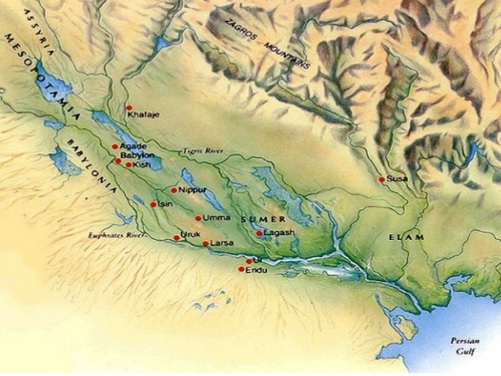 .
.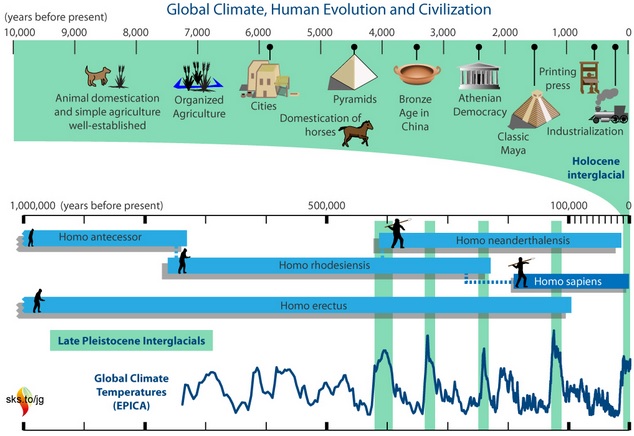 .
.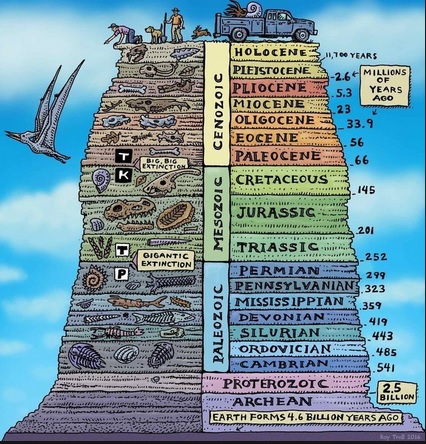
The following is a history / timeline of some of the major landmarks and events in humankind and civilization through the Middle Ages (1500's). Although possibly controversial and subject to debate (both the facts and the approximate dates) this information can facilitate discussion and contemplation about the achievements and mistakes from the past, present and future of humankind. Please understand that this information is not intended to offend those that do not agree with it. Science, politics and religion often have conflicting views of reality and it is this difference that helps to make the human experience so wonderful. These differences also play a major factor in the conflicts in the history timeline. Lastly, realize that history can be very ethnocentric. Viewed from different factions and points of view, the "facts" can be remembered and interpreted very differently. This is another key to negotiation and compromise; becoming tolerant and understanding the point of view of others (stepping into their shoes and discoverying empathy).
"Those who cannot remember the past are condemned to repeat it." - George Santayana
For those that have not been exposed to the history of humankind, it is fascinating to see the progression and reasons humankind has
transitioned from stone tools and controlling fire, to farming and the copper, bronze and iron ages, to the age of enlightenment and industrial
revolution, to the space age and now the information age.
Possibly the main point to learn from human history (thanks to the printing press and now the information age) is the amount of conflict and fighting that has
occurred and continues to be prevalent.
If we can use this knowledge to better understand the reasons for past and present conflicts and aggressions, perhaps we can find less
brutal and destructive methods for solving differences and more constructive and democratic ways of working together to create a "Golden Age" of
enlightenment, peace and prosperity. Let us use this information to evolve into a more peaceful civilization!
In reviewing the following history it is useful to categorize wars by their types:
Local (Tribal), National (Civil), International, Continental and Global (WWI, WWII).
Also try to determine the reasons why countries and peoples chose the war/terrorism they entered into, or the reasons they were attacked, such as: Economics (wealth/greed), power, land, access to rivers/oceans, security, energy and mineral resources, political, religious, idealogical, racial, ethnic and cultural differences, freedom from oppression, injustice, prestige (ego/superiority complex), prejudice and hatred, revenge, lack of respect, etc.
Lastly, consider the rise and fall, or movement of civilizations due to: Natural disasters (Meteors, Volcanos, Earthquakes, Tsunamis, Monsoons, Landslides ...), Climate change (Floods, Drought, Cold, Famine ...), Disease, Technological advances (Transporation: Camels, Elephants, Horses, Wagons, Boats, Automobiles, Ships, Airplanes ...), (Weapons: Swords, Bows and Arrows, Gunpowder, Canons, Bombs, Missiles, Nuclear weapons, etc), Communication and information (Smoke Signals, Mail (pony express), Newspapers, Telegraph, Radio, TV, Internet ...) and Cooperation and peace treaties (Negotations, uniting for a common cause or against a common enemy), etc.
The more we understand the reasons for war, the more likely we can find better solutions for peace.
We have plenty of books on the Art of War. For humankind to progress we need more education on the Art of Peace.
The following information comes predominantly from Wikipedia. For more details and references, please visit Wikipedia.com
TOP OF SITE / Table of Contents
These ages are subject to debate and tend to overlap as geographic regions enter and exit these periods sometimes due to climate change and as discovery, transportation and trade provide access to materials and technology.
The Early Stone Age (Paleolithic / Glacial); 2.6 Million - 20,000 BCE [Hunting, Gathering]
The Middle Stone Age (Mesolithic / Inter-Glacial): 20,000 - 5000 BCE [Transition period]
The New Stone Age (Neolithic / Post-Glacial): 10,000 - 2000 BCE [Farming, Herding]
The Copper Age: 4500 - 3000 BCE
The Bronze Age: 3400 - 600 BCE
The Iron Age: 1300 BCE - 500 CE
The Dark Ages: 300-900 CE
The Middle Ages: 500-1500 CE
The Age of Discovery: 1400-1650 CE
The Age of Enlightenment: 1700-1800 CE
The Industrial Revolution: 1700-1900 CE
The Modern Era: 1700-1900 CE
The Machine Age: 1900-1945 CE
The Oil Age: 1901-Present
The World War Age: 1914-1945 CE
The Atomic Age: 1945-Present
The Cold War Age: 1945-1989 CE
The Space Age: 1957-Present
The Information (Digital / Computer) Age: 1975-Present
The Social Age: 2000-Present
In review of theses ages, what can we learn from the transition periods and what was happening around the world during these ages? How much did discovery, cooperation, trading, sharing of knowledge and conflict affect both the timing and duration of these ages?
By analyzing the history of civilization below, some of these questions can be answered in greater detail.
Pre-20,000 BCE: Paleolithic Age - The Old Stone Age [Glacial Period]. Low sea levels allow migration. Stone tools and fire developed.
Around 20,000 - 5,000 BCE: Mesolithic Age - Middle Stone Age. The transitional phase to agricultural life.
10,000 BCE - 2000 BCE: Neolithic Age - New Stone Age. [Interglacial period]. Farming and herding become common.
Neolithic life was achieved by regions as the Glacial period ended 11,700 BP (Before Present). Sea levels rose by approximately 35 meters as warming began, allowing farming and herding. There were still periods of freezes as witnessed by Bond events (discussed in detail below).
Neolithic life first began in Mesopotamia (the cradle of civilization) about 10,000 BCE; in China 10,000 - 8000 BCE; in Greece 7000 BCE; in India 5000 BCE; and Britain in 3000 BCE. It was chiefly characterized by agriculture and stock breeding, grinding stones and pottery.
4500 BCE to 500 CE: Ancient History - The Copper Age, Bronze Age and Iron Age.
In some early civilizations of the world, a Copper Age followed the Neolithic Age, prior to the Bronze Age.
The Bronze Age refers to a period in human cultural development when the most advanced metalworking included techniques for smelting copper and tin from naturally-occurring outcroppings of copper ores, and then combining
those ores to cast bronze. Copper/tin ores are rare, as reflected in the fact that there were no tin bronzes in western Asia before 3000 BCE.
The Iron Age was the stage in the development of any people in which tools and weapons whose main ingredient was iron. The adoption of this material often coincided with other changes in societies often including differing agricultural practices, religious beliefs and artistic styles. Prior to obtaining this technology, the only iron tools and jewelry came from meteorites.
Hunters and Gatherers (Paleolithic / Mesolithic Ages - Pre 10,000 BCE) to Farmers and Herders (Neolithic Age - 10,000 to 3000 BCE) to Kings and Emperors (Copper, Bronze and Iron Ages - 4500 BCE to 500 CE) to Franks, Huns and Vikings (Migration / Dark Ages - 300 to 900) to Caliphates and Knights (Middle / Medieval Ages - 500 to 1500) to Sailers and Explorers (Age of Discovery - 1400 to 1650) to Presidents, Democracies and Inventors (Modern / Industrial Age - 1700 to present) to Generals and Soldiers (World War Age - 1914 to 1945) to Nuclear Bombs and Rockets (Atomic and Space Age - 1945 to present) to Global Communication and Sharing of Information (Digital / Social Age - 1975 to present).
Human history timeline:
750,000 BCE: The 'Master Hand-Axe' was found embedded in an exposed stratigraphic sequence in a sinkhole at Kathu Pan in the Northern Cape, South Africa, and dated by association with tooth-plates of the extinct Elephas Reckii Reckii, or Reck's Elephant.
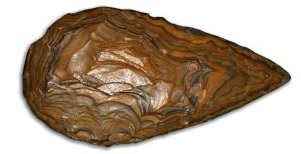 . .
. .
50,000 BCE: Second migration from Africa as people left the tropics to explore the Middle East and south central Asia and later North Asia, Europe and beyond. 38,000 BCE: Earliest ivory carving "Venus of Hohle Fels" and 28,000 BCE, ceramic pottery "Venus of Willendorf".
30,000 BCE: Chauvet cave paintings of horses, deer, rhinos and bulls in Lascaux, Southwestern France.
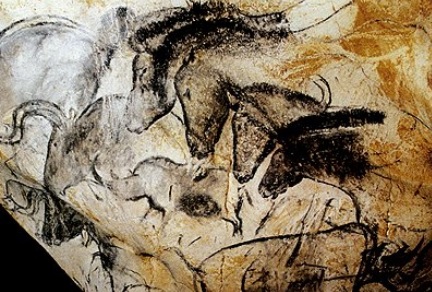 . .
. .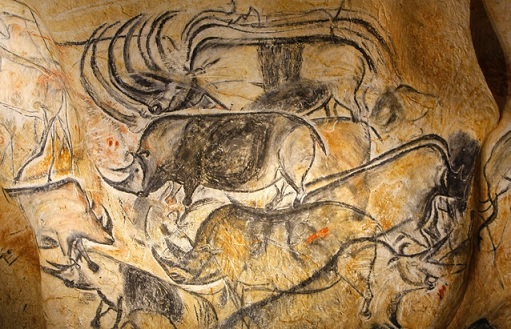
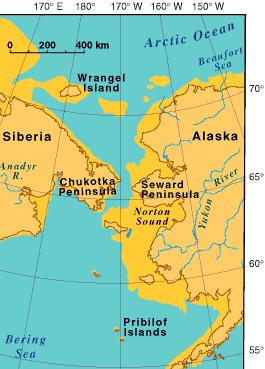
11,000 BCE: Five round, stone-built towers at Tell Qaramel near Allepo, Syria, in the Fertile Crescent (Cradle of civilization). Technological advances made in the region include the development of writing, glass, the wheel, agriculture, and the use of irrigation.
10,000 BCE: Gobekli Tepe, An ancient city with the world's oldest known megaliths. More than 200 pillars in about 20 circles in rencik, Sanliurfa Province, Turkey.
9700 BCE: Halocene post glacial period begins (11,700 BP - Before Present) with the end of glacial era and dramatic rise in global temperature causing rising sea levels (35 meters) as glaciers melted. This marks the start of the shift from nomadic hunters and gatherers to community based farmers and herders.
9100 BCE: Bond event 8 - The "Younger Dryas" freeze was the most recent and longest of several interruptions to the gradual warming of the Earth's climate since the severe Last Glacial Maximum, about 27,000 to 24,000 calendar years BP (before present). The change was relatively sudden, taking place in decades, and it resulted in a decline of 2 to 6 degrees Celsius and advances of glaciers and drier conditions over much of the temperate northern hemisphere. It is thought to have been caused by a decline in the strength of the Atlantic meridional overturning circulation, which transports warm water from the Equator towards the North Pole, in turn thought to have been caused by an influx of fresh cold water from North America to the Atlantic. A Bond event is a major or significant change in the climate, particularly in the northen hemisphere. (more Bond event information below in 2200 BCE, a 4.2 kiloyear Bond event)
8500 BCE: Estimated date that the mammoth (left in image) and the North American mastadon went extinct.

8000 BCE: First settlement at Jericho, Palestine established.
7400 BCE: Bond event 6 - correlates with the Erdalen event of increased glacier activity in Norway, as well as with a cold event in China.
6800 BCE: Large settlement established at Catal Huyuk, Turkey.
6200 BCE: Bond event 5 - correlates with the 8.2 kiloyear event (6200-6000 BCE). In climatology, the 8.2 kiloyear event was a sudden decrease in global temperatures which lasted for the next two to four centuries. Milder than the Younger Dryas cold spell before it, but more severe than the Little Ice Age about 500 years ago. Drier conditions were notable in North Africa, and East Africa suffered five centuries of drought. In West Asia, especially Mesopotamia, the 8.2 kiloyear event was a 300 year aridification and cooling episode, which may have provided the natural force for Mesopotamian irrigation agriculture and surplus production, which were essential for the earliest formation of classes and urban life.
The event may have been caused by a large meltwater pulse from the final collapse of the Laurentide ice sheet of northeastern North America, most likely when the glacial lakes Ojibway and Agassiz suddenly drained into the North Atlantic Ocean. Sea levels rose an estimated 1.2 meters. The same type of action produced the Missoula floods that created the Channeled Scablands of the Columbia River basin. The meltwater pulse may have affected the North Atlantic thermohaline circulation, reducing northward heat transport in the Atlantic and causing significant North Atlantic cooling.
6000 BCE: First settled cultures in Europe's Danube basin.
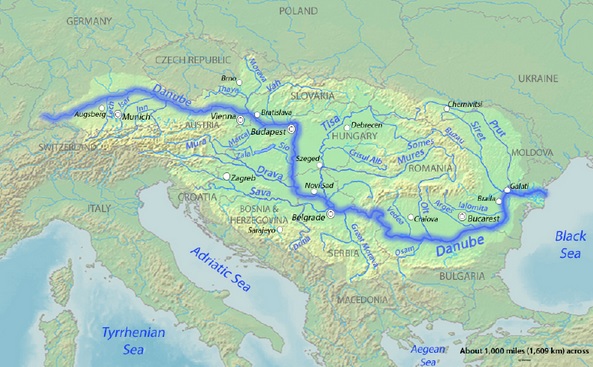
5000 BCE: Hunter-gatherers become herders in the Indus Valley region of Afghanistan, Pakistan and NW India.
4500 BCE: Start of the Copper Age with cast tools and weapons, a factor leading to urbanization in Mesopotamia.
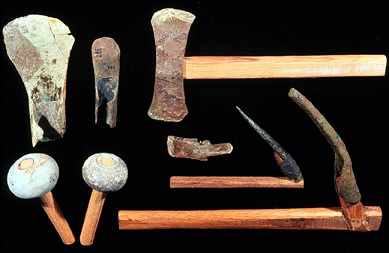
4000 BCE: Evidence of written language in Europe.
3900 BCE: Bond event 4 - correlates with the 5.9 kiloyear event when the Sahara became a desert again and starts a mass migration. Indus valley, Egyptian and Sumerian civilizations may have been accelerated due to this climate change event.
3500 BCE: The first cities developed in southern Mesopotamia.
3400 BCE: Start of the Bronze Age.
 . .
. .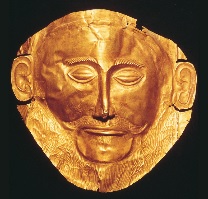
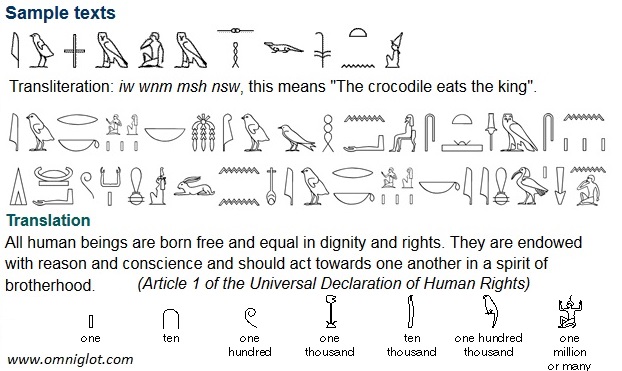
3200 BCE: Sumerian cuneiform writing system developed.
3200 BCE: Newgrange built in Ireland.
3200 BCE: Cycladic civilization in Greece.
3200 BCE: Norte Chico civilization begins in Peru.
3200 BCE: Rise of Proto-Elamite Civilization in Iran.
3200 BCE: Meteoric iron has been used by humans since at least 3200 BCE.
3100 BCE: Skara Brae is constucted, a stone-built Neolithic settlement in Scotland.
3100 BCE: Early dynastic period (1st and 2nd dynasty) of Egypt starts with the first Pharaoh, Narmer for some egyptologists, Hor-Aha for others, (also known as Menes), corresponding to the unification of Upper and Lower Egypt. Mephis is founded.
3000 BCE: Egyptian calendar created at the Kom Ombo Temple based on the Moon cycle.

3000 BCE: Cucuteni-Trypillian culture in Romania and the Ukraine.
3000 BCE: Jiroft civilization begins in Iran.
3000 BCE: First known use of papyrus by Egyptians.
3000 BCE: Urak becomes the largest settlement in the world in Pakistan.
3000 BCE: Domestication of alpacas and llamas, root crops grown in the Andes.
2800 BCE: Kot Diji phase of the Indus Valley Civilization begins.
2800 BCE: Three Sovereigns and Five Emperors period in China.
2700 BCE: Minoan Civilization ancient palace city Knossos reach 80,000 inhabitants.
2700 BCE: Rise of Elam in Iran.
2700 BCE: The Old Kingdom begins in Egypt (3rd through 6th dynasty).
2600 BCE: Oldest known surviving literature: Sumerian texts from Abu Salabikh, including the Instructions of Shuruppak and the Kesh temple hymn.
2600 BCE: Mature Harappan phase of the Indus Valley civilization (in present-day Pakistan and India) begins.
2600 BCE: Emergence of Maya culture in the Yucatan Peninsula.
2560 BCE: King Khufu completes the Great Pyramid of Giza.
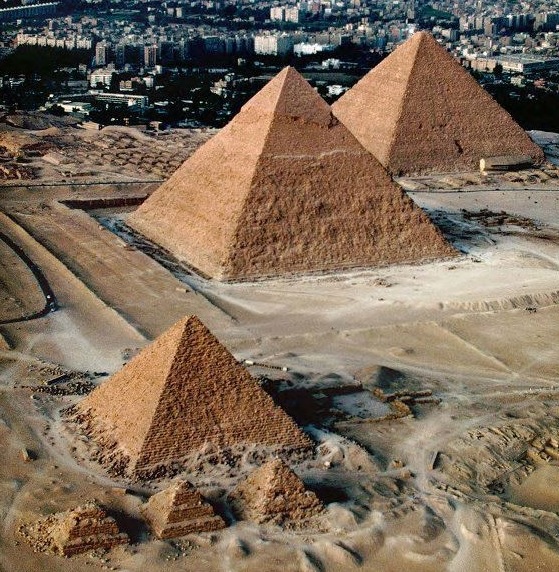 . .
. . 
2300 BCE: Sargon of Agade conquers Mesopotamia, Akkadian Empire is founded.
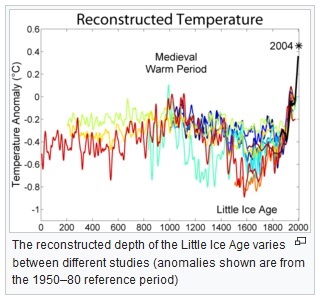
2200 BCE: Completion of Stonehenge in Wiltshire, England.
 . .
. .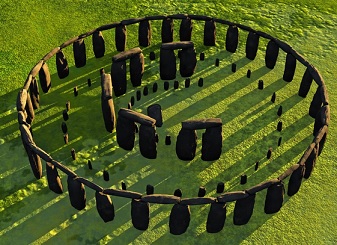
2000 BCE: Believed birth year of Abraham in Ur of the Chaldeans, Mesopotamia, who is the father of Abrahamic Religions which as of the 21st Century AD are adhered to by more than 50% of humanity.
2000 BCE: Indo-European people settle in Greece, Minoan palaces are built on Crete.
2000 BCE: The spice trade developed throughout South Asia and Middle East with cinnamon and black pepper, and in East Asia with herbs and pepper. Domestication of the horse.
 . .
. .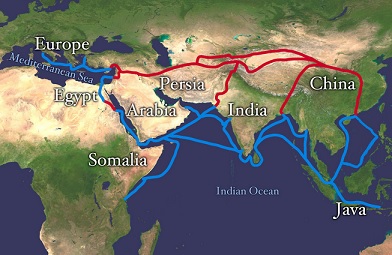
1800 BCE: Alphabetic writing emerges. Its first origins can be traced back to a Proto-Sinaitic script developed in Ancient Egypt.
1800 BCE: The development of iron smelting was traditionally attributed to the Hittites of Anatolia of the Late Bronze Age. It was believed that they maintained a monopoly on iron working, and that their empire was based on that advantage.
1700 BCE: Indus Valley Civilization comes to an end but is continued by the Cemetery H culture, a Bronze Age culture in the Punjab region of what is now Pakistan and north-western India.
1700 BCE: The beginning of Poverty Point Civilization in North America, a mound-building group of indigenous peoples who inhabited the area of the lower Mississippi Valley and surrounding Gulf coast.
1700 BCE: Hammurabi of Babylon establishes the first legal code.
1600 BCE: Minoan civilization on Crete is destroyed by the volcanic eruption of Santorini island.
1600 BCE: Mycenaean civilization begins in Greece.
1600 BCE: The beginning of Shang Dynasty in China, evidence of a fully developed Chinese writing system.
1600 BCE: Beginning of Hittite dominance of the Eastern Mediterranean region. Babylon destroyed by the Hittites.
1500 BCE: Composition of the Rigveda is completed. The Rigveda is an ancient Indian collection of Vedic Sanskrit hymns. It is one of the four canonical sacred texts (sruti) of Hinduism known as the Vedas. The text is a collection of 1,028 hymns and 10,600 verses, organized into ten books (Mandalas).
1500 BCE: Egyptian Empire establishes the peak of their power under Thutmose I.
1400-400 BCE: Olmec civilization flourishes in Pre-Columbian Mexico, during Mesoamerica's Formative period.
1496 BCE: Traditional date for giving of the Ten Commandments to Moses at Mount Sinai ushering in monotheistic religion.
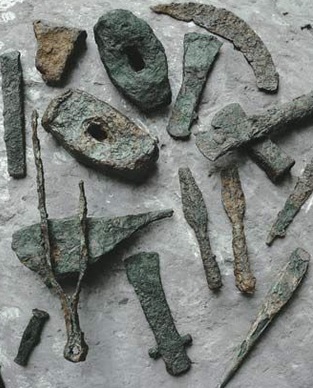 . .
. .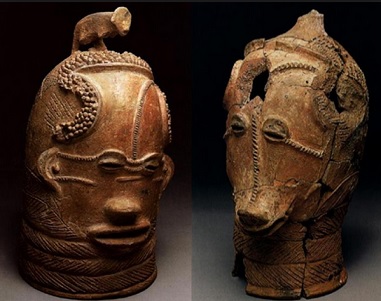
1200 BCE: The Hallstatt culture begins. The term "Hallstatt" is named after the town Hallstatt in Stiermarken, Austria and refers to an important central European culture of the early Iron Age centred on Austria and the Upper Danube area - which is strongly associated with the arrival of Celtic tribes from the steppes of southern Russia.
1190 BCE: Bronze Age collapse in Southwestern Asia and in the Eastern Mediterranean region.
1180 BCE: Disintegration of Hittite Empire.
1100 BCE: Use of Iron spreads.
1046 BCE: The Zhou force (led by King Wu of Zhou) overthrow the last king of Shang Dynasty; Zhou Dynasty established in China.
1000 BCE: The beginning of the Kingdom of Israel.
900 BCE: First Greek city States founded.
890 BCE: Approximate date for the composition of the Iliad and the Odyssey, using the Bronze age collapse for main subject matter.
800 BCE: Rise of Greek city-states.
776 BCE: First recorded Olympic Games.
753 BCE: Founding of Rome.
747 BCE: Start of the Nubian dynasty of the Pharaohs.
745 BCE: Tiglath-Pileser III becomes the new king of Assyria. He starts conquering neighboring countries, (Babylon, Egypt) and turns Assyria into an empire.
728 BCE: Rise of the Median Empire, the first Iranian dynasty corresponding to the northeastern section of present-day Iran, Northern-Khvarvarana and Asuristan (now known as Iraq), and South and Eastern Anatolia. The inhabitants, who were known as Medes, and their neighbors, the Persians, spoke Median languages that were closely related to Aryan (Old Persian). Historians know very little about the Iranian culture under the Median dynasty, except that Zoroastrianism as well as a polytheistic religion was practiced, and a priestly caste called the Magi existed.
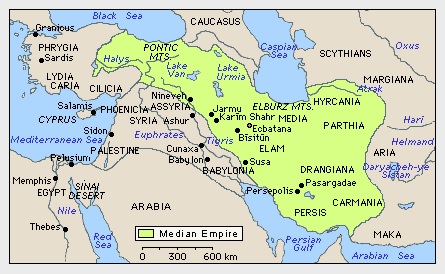
700 BCE: The construction of Marib Dam in Arabia Felix (Yemen). It was one of the engineering wonders of the ancient world and a central part of the South Arabian civilization.
660 BCE: Purported date of the accession of Jimmu, the mythical first Emperor of Japan.
653 BCE: Rise of Persian Empire.
612 BCE: An alliance between the Babylonians, Medes, and Scythians succeeds in destroying Nineveh and causing subsequent fall of the Assyrian empire.
600 BCE: First recorded map of the world, Babylonian Imago Mundi.
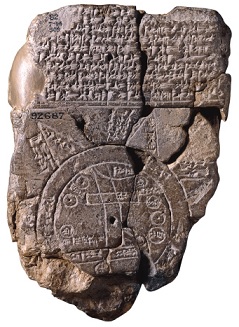
600 BCE: Pandyan kingdom in South India.
600 BCE: Sixteen Maha Janapadas ("Great Realms" or "Great Kingdoms") emerge in India.
600 BCE: Evidence of writing system appear in Oaxaca used by the Zapotec civilization. The Zapotec civilization was an indigenous pre-Columbian civilization that flourished in the Valley of Oaxaca in Mesoamerica.
599 BCE: Lord Mahavira, the 24th and last Jain Tirthankara (spiritual teacher) of Jainism was born. His name means "fully enlightened teacher". He was born Prince Vardhamana to King Siddhartha and Queen Trishala of the Ikshvaku Dynasty in Ksatiryakundagrama, India.
586 BCE: Destruction of the First Temple in Jerusalem (Solomon's Temple) by the Babylonians. Jewish captivity.
563 BCE: Siddhartha Gautama (Buddha), founder of Buddhism is born as a prince of the Shakya tribe, which ruled parts of Magadha.
551 BCE: Confucius, also known as Kong Qui or K'ung Fu-tzu, was born in present-day Qufu, Shandong Province, China. He is the author of The Analects and founder of Confucianism.
550 BCE: Foundation of the Persian Empire by Cyrus the Great.
546 BCE: Cyrus the Great overthrows Croesus King of Lydia.
544 BCE: Magadha rose into prominence under the rule of Bimbisara who belonged to the Haryanka dynasty. Magadha was an ancient Indian kingdom in southern Bihar, and was counted as one of the sixteen Mahajanapadas (Sanskrit: "Great Countries") of ancient India. Magadha played an important role in the development of Jainism and Buddhism, and two of India's greatest empires, the Maurya Empire and Gupta Empire, originated in Magadha.
539 BCE: The Fall of the Babylonian Empire and liberation of the Jews by Cyrus the Great.
529 BCE: Death of Cyrus.
525 BCE: Cambyses II of Persia conquers Egypt.
512 BCE: Darius I (Darius the Great) of Persia, subjugates eastern Thrace and annexes Libya, Macedonia submits voluntarily. Persian Empire at largest extent.
509 BCE: Expulsion of the last King of Rome, founding of Roman Republic.
508 BCE: Democracy instituted in Athens, Greece.
500 BCE: Completion of Euclid's Elements. The Elements (Ancient Greek: Stoicheia) is a mathematical treatise consisting of 13 books attributed to the ancient Greek mathematician Euclid in Alexandria, Ptolemaic Egypt. Euclid's Elements form one of the most beautiful and influential works of science in the history of humankind. Its beauty lies in its logical development of geometry and other branches of mathematics.
500 BCE: Panini standardizes the grammar and morphology of Sanskrit in the text Ashtadhyayi. Panini was a revered scholar in Hinduism and considered as the father of Indian linguistics. Pa?ini likely lived in the northwest Indian subcontinent during the Mahajanapada era.
500 BCE: Pingala, a younger brother of Panini, was a well-recognized Jain mathematician. Although not strictly a mathematician but a musical theorist, he is credited with first using the binary numeral system in the form of short and long syllables, making it similar to Morse code. He and his contemporary Indian scholars used the Sanskrit word sunya to refer to zero or void. He is also credited with discovering the "Pascal triangle" and the binominal coefficient. Basic concepts of the Fibonacci numbers have also been described by Pingala.
499 BCE: King Aristagoras of Miletus incites all of Hellenic Asia Minor to rebel against the Persian Empire, beginning the Greco-Persian Wars.
490 BCE: Greek city-states defeat Persian invasion at Battle of Marathon.
483 BCE: Death of Gautama Buddha.
480 BCE: Persian invasion of Greece by Xerxes; Battles of Thermopylae and Salamis.
480 BCE: Aruga Nigeria flourishes as an iron working Center.
479 BCE: Death of Confucius.
475 BCE: Warring States period begins in China as the Zhou king became a mere figurehead; China is annexed by regional warlords.
470 BCE: Birth of Socrates.
465 BCE: Murder of Xerxes.
458 BCE: The Oresteia by Aeschylus, the only surviving trilogy of ancient Greek plays, is performed.
449 BCE: The Greco-Persian Wars end.
447 BCE: Building of the Parthenon at Athens started.

431 BCE: Beginning of the Peloponnesian war between the Greek city-states, Sparta and Athens.
429 BCE: Sophocles's play Oedipus Rex is first performed.
427 BCE: Birth of Plato.
424 BCE: Nanda dynasty comes to power.
404 BCE: End of the Peloponnesian War.
400 BCE: Zapotec culture flourishes around city of Monte Albon.
399 BCE: Death of Socrates 390 BCE: A tribe of Gauls destroy Rome.
384 BCE: Birth of Aristotle.
359 BCE: Reign of Philip of Macedonia begins.
343 BCE: The Samnite wars established Rome as the dominant power in Italy.
336 BCE: Alexander the Great, tutored by Aristotle, becomes King of Macedonia at age 20 after his father King Philip's assassination.
331 BCE: Alexander the Great defeats Darius III of Persia in the Battle of Gaugamela, completing his conquest of Persia.
326 BCE: Alexander the Great defeats Indian king Porus in the Battle of the Hydaspes River.
323 BCE: Death of Alexander the Great in Babylon, Iraq of 10 day fever after banquet, possibly being poisened.
321 BCE: Chandragupta Maurya overthrows the Nanda Dynasty of Magadha.
320 BCE: Alexander's Empire breaks up as his Generals seize territory.
305 BCE: Chandragupta Maurya seizes the satrapies of Paropanisadai (Kabul), Aria (Herat), Arachosia (Qanadahar) and Gedrosia (Baluchistan)from Seleucus I Nicator, the Macedonian satrap of Babylonia, in return for 500 elephants.
300 BCE: Sangam literature period in the history of ancient southern India (known as the Tamilakam).
300 BCE: Chola Empire in South India.
300 BCE: Construction of the Great Pyramid of Cholula (Teotihuacan), the world's largest pyramid by volume, begins in Cholula, Puebla, Mexico. The Great Pyramid of Giza built in 2560 BCE Egypt stands 146.5 meters, Cholula is 91.5 meters taller.

264 BCE: The first Punic War between Rome and Carthage.
261 BCE: Kalinga war.
250 BCE: Rise of Parthia (Ashkonion), the second native dynasty of ancient Persia.
232 BCE: Death of Emperor Ashoka; Decline of the Mauryan Empire.
230 BCE: Emergence of Satavahanas in South India.
221 BCE: Qin Shi Huang unifies China, end of Warring States period; marking the beginning of Imperial rule in China which lasts until 1912. Construction of the Great Wall by the Qin Dynasty begins.
220 BCE: Around this date Eratosthenes (276-194 BCE) develops an improved map based on Alexander the Great's campaigns and incorporate parallels and meridians, attesting to his understanding of the spherical nature of the earth. The world is no longer flat.
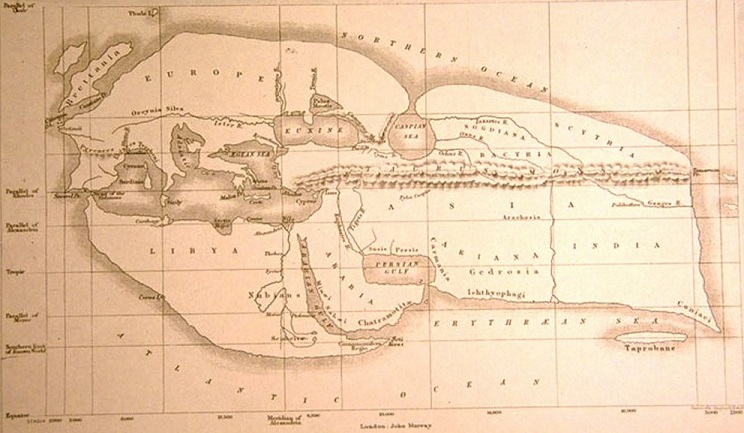
207 BCE: Kingdom of Nan Yueh extends from Canton to North Viet Nam.
206 BCE: Han Dynasty established in China civil war, after the death of Qin Shi Huang; China in this period officially becomes a Confucian state and opens trading connections with the West, i.e. the Silk Road.
202 BCE: Carthage defeated by Rome. Scipio Africanus defeats Hannibal at Battle of Zama, marking the end of the Second Punic War.
200 BCE: El Mirador, largest early Maya city, flourishes.
200 BCE: The city of Teotihuacan is founded in southern Mexico.
200 BCE: Paper is invented in China.
200 BCE: Chera dynasty in South India.
185 BCE: Shunga Empire founded.
185 BCE: Mauryan Dynasty collapses.
167 BCE: Jewish Maccabees revolt against rulers.
149-146 BCE: Third Punic War between Rome and Carthage. War ends with the complete destruction of Carthage, allowing Rome to conquer modern day Tunisia and Libya.
146 BCE: Roman conquest of Greece.
142 BCE: Judea independent then conquered by Rome.
121 BCE: Roman armies enter Gaul for the first time.
120 BCE: Chinese Imperial University founded.
111 BCE: First Chinese domination of Viet Nam in the form of the Nanyue Kingdom.
100 BCE: Chola dynasty rises in prominence.
100 BCE: The Moche State comes into being in coastal Peru.
80 BCE: The city of Florence is founded.
54 BCE: Ceasar invades Britain but is pulled away due to revolt in Gaul (modern day France).
49 BCE: Caesar invades Italy.
49 BCE: Roman civil War between Julius Caesar and Pompey the Great.
44 BCE: Julius Caesar murdered by Marcus Brutus and others; End of Roman Republic; beginning of Roman Empire.
40 BCE: Roman conquest of Egypt.
27 BCE: Formation of Roman Empire: Octavius is given titles of Princeps and Augustus by Roman Senate - beginning of Pax Romana. Formation of influential Praetorian Guard to provide security to Emperor.
18 BCE: Three Kingdoms period begins in Korea. The temple of Jerusalem is reconstructed.
6 BCE: Roman succession: Gaius Caesar and Lucius Caesar groomed for the throne.
4 BCE: Widely accepted date for birth of Jesus Christ.
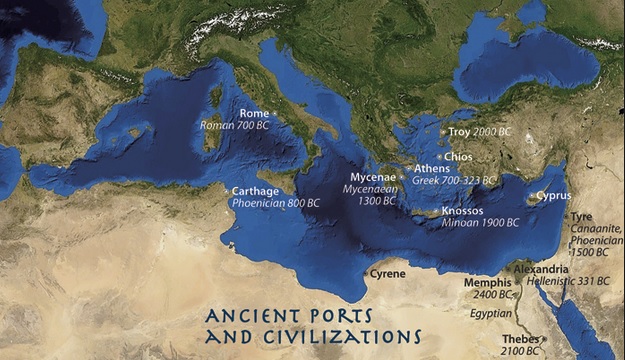
9: Battle of the Teutoburg Forest, the Imperial Roman Army's bloodiest defeat.
14: Death of Emperor Augustus (Octavian), ascension of his adopted son Tiberius to the throne.
30: Crucifixion of Jesus Christ. Christ Ministries begin, as recorded in the Gospel.
37: Death of Emperor Tiberius, ascension of his nephew Caligula to the throne. Caligula was considered to be somewhat "mad" and self- centered.
40: Rome conquers Morocco.
41: Emperor Caligula is assassinated by the Roman senate. His uncle Claudius succeeds him.
43: Rome invades Britain.
54: Emperor Claudius dies and is succeeded by his grand nephew Nero.
68: Emperor Nero commits suicide, prompting the Year of the four emperors in Rome.
70: Destruction of Jerusalem by the armies of Titus.
79: Destruction of Pompeii by the volcano Vesuvius.
98: After a two-year rule, Emperor Nerva dies of natural causes, his adopted son Trajan succeeds him.
100: The Aeolipile, a simple steam turbine is recorded by Hero of Alexandria.
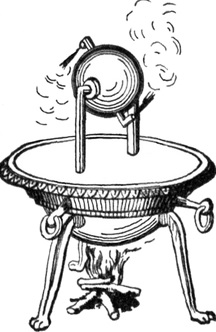
117: Trajan dies of natural causes. His adopted son Hadrian succeeds him. Hadrian pulls out of Iraq and Armenia.
126: Hadrian completes the Pantheon in Rome.
133: Hadrian's defensive wall across Northern Britain is completed to keep the Scots out.
138: Hadrian dies of natural causes. His adopted son Antoninus Pius succeeds him.
161: Death of Antoninus Pius. His rule was the only one in which Rome did not fight in a war.
192: Kingdom of Champa in Central Viet Nam.
200: The Buddhist Srivijaya Empire established in Maritime Southeast Asia.
207: Beginning of the collapse of Roman Imperial rule.
220 - 590: Three Kingdoms period begins in China after the fall of the Han Dynasty, bringing constant warfare and nomad invasions.
226: Fall of the Parthian Empire and Rise of the Sassanian Empire.
238: Defeat of Gordian III (238-244), Philip the Arab (244-249), and Valerian (253-260), by Shapur I of Persia.
280: Emperor Wu established Jin Dynasty providing a temporary unity of China after the devastating Three Kingdoms period.
285: Diocletian becomes emperor of Rome and splits the Roman Empire into Eastern and Western Empires.
285: Diocletian begins a large-scale persecution of Christians.
292: The capital of the Roman empire is officially moved from Rome to Mediolanum (modern day Milan).
301: Diocletian's edict on prices.
313: Edict of Milan declared that the Roman Empire would tolerate all forms of religious worship.
320: Foundation of the Gupta Empire by Sri Gupta. The peace and prosperity created under the leadership of the Guptas enabled the pursuit of scientific and artistic endeavors. This period is called the Golden Age of India.
325: Constantine I organizes the First Council of Nicaea: the first general council of the Christian church.
330: Constantinople is officially named and becomes the capital of the eastern Roman Empire.
330: King Ezana of Axum converts to Christianity (modern day Ethiopia). Tradition claims Axum as the alleged resting place of the Ark of the Covenant and the purported home of the Queen of Sheba.
335: Samudragupta becomes emperor of the Gupta empire.
337: Emperor Constantine I dies, leaving his sons Constantius II, Constans I, and Constantine II as the emperors of the Roman empire.
350: Constantius II is left sole emperor with the death of his two brothers.
350: Indian Traders and refugees established Kingdom of Funan around the Mekong Delta.
354: Birth of Augustine of Hippo.
361: Constantius II dies, his cousin Julian succeeds him.
378: Battle of Adrianople, Roman army is defeated by the Germanic tribes.
380: Roman Emperor Theodosius I declares the Arian faith of Christianity heretical.
395: Theodosius I outlaws all religions other than Catholic Christianity.
397: The council that formed a decision on the books of the Bible took place at Carthage.
400: Highland Maya fall to the lowland city of Teotihuacan. Begins the decline of Maya culture in some parts of the highlands.
405: St. Jerome finished the Vulgate. The Christian Gospel is translated into Latin.
406: Romans are expelled from Britain. Vandals Suevi and Alans invade Gaul.
407: Visigoths and other Germanic tribes cross into Roman-Gaul for the first time.
410: Rome is sacked by Alaric, King of the Visigoths, starting the decline of the Western Roman Empire.
415: Germanic tribes enter Spain.
429: Vandals enter North Africa from Spain for the first time 439: Vandals have conquered the land stretching from Morocco to Tunisia by this time.
455: Genseric, King of the Vandals sack Rome, capture Sicily and Sardinia, considered by some historians to mark the "end of the Roman Empire".
455: Skandagupta repels an Indo-Hephthalite attack on India.
458: Anglo-Saxon migrations to Britain begins. Slavs raid and settle in the Balkans.
476: Romulus Augustus, last Western Roman Emperor is forced to abdicate by Odoacer, a chieftain of the Germanic Heruli, marking the symbolic end of the Western Roman Empire. Odoacer returns the imperial regalia to Eastern Roman Emperor Zeno in Constantinople in return for the title of dux of Italy.
476: Most frequently cited date for the end of Ancient History and the starting point of the Middle Ages.
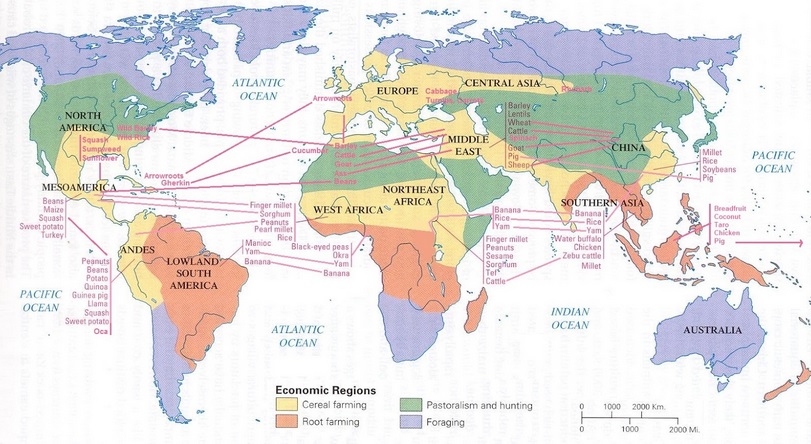
500 CE to 1500 : The Middle Ages
500: Tikal becomes the first great Maya city. Significant cultural exchange between the Maya of Tikal and the citizens of Teotihuacan.
500: Battle of Mons Badonicus. The West Saxon advance is halted by Britons in England. Chiefly known today for the supposed involvement of King Arthur but because of the limited number of sources, there is no certainty about the date, location, or details of the fighting.
507: The Franks under Clovis defeat the Visigoths in the Battle of Vouille. The Visigoths retreated into Spain.
524: Boethius writes his Consolation of Philosophy.It has been described as the single most important and influential work in the West on Medieval and early Renaissance Christianity.
525: Dionysius Exiguus publishes the Dionysius Exiguus' Easter table. This initiated the Anno Domini era, used for the Gregorian and Julian calendars.
526: The Great Antioch Earthquake. 250,000 perish. When Justinian I assumed the Byzantine throne the year after the earthquake he spent lavishly on rebuilding the city. Its location made Antioch a key strategic bulwark of the Eastern Roman Empire against the Persian threat from the east. It was to little avail, however, as just a dozen years later it was sacked by the Persians.
527: Justinian I becomes Eastern Roman Emperor and begins expansion of imperial territory retaking Rome from the Ostrogoths.
529: Justinian I publishes the Code of Civil Law. This compiled centuries of legal writings and imperial pronouncements into three parts of one body of law.
529: Benedict of Nursia founds monastery at Monte Cassino. The first of twelve monasteries founded by Saint Benedict.
532: Nika Riots in Constantinople. Nearly half the city being burned or destroyed and tens of thousands of people killed.
550: End of Chinese silk monopoly.
533: Byzantines, under Belisarius, retake North Africa from the Vandals. Vandal kingdom ends and the Reconquest of North Africa is completed.
535-554: Gothic War in Italy as a part of Justinian's Reconquest. Byzantines retook Italy but crippled the Byzantine economy and left Italy unable to cope against the oncoming Lombards.
539: Persians, under Khosru, declared war on Byzantium on the premise that Justinian had violated the peace treaty, however, it is more likely that Khosru wanted to take advantage of Byzantium having most of its troops stationed in the now conquered western provinces, instead of waiting for a strengthened Byzantium to invade Persia.
545: Justinian I paid Khosru 2000 pounds of gold for a five year truce.
563: Saint Columba founds mission in Iona. Constructed an abbey which helped convert the Picts to Christianity until it was destroyed and raided by the Vikings in 794.
568: The Kingdom of the Lombards is founded in Italy. Survived in Italy until the invasion of the Franks in 774 under Charlemagne.
570: Khosru, on the request of the Himyarites of southwest Arabia, sent an army to free them from the Abyssinians. 570: Muhammad is born. Professed receiving revelations from a god, which were recorded in the Qur'an, the basis of Islamic theology, in which he is regarded as the last of the sent prophets.
572: Justin II, the successor to Justinian, having had an alliance with the Abassinians, declares war on Khosru and the Himyarites.
575: Justin II abdicates the throne after defeat, and Tiberius, the new emperor, made a three year peace. Byzantium, in these three years, organized a massive army, and on learning this, Khosru invaded in order to prevent a Byzantine attack. The two armies met at Melitene in 578, and Khosru suffered his first defeat due to his poor health and later died in 579.
577: The West Saxons continue their advance at the Battle of Deorham. Led to the permanent separation of Cornwall, England from Wales.
581-618: Sui Dynasty in China. China unified once again during this period for the first time in almost 400 years.
590: Gregory the Great becomes Pope. The missionary work reached new levels during his pontificate, revolutionized the way of worship for the Catholic Church (Gregorian Chants), liturgy, etc., and was soon canonized after his death.
597: Augustine arrives in Kent. Christianization of England (Anglo-Saxons) begins.
598-668: Massive Chinese (Sui and Tang) invasions against Korean Goguryeo.Contributed to the fall of the Sui Dynasty, and Goguryeo fell under the forces of the Tang and Silla.
600: Deliberate fires set for unknown reasons destroy major buildings in Teotihuacan. Destroys the Teotihu.
602-629: Last great Roman-Persian War. Long conflict leaves both empires exhausted and unable to cope with the newly united Arab armies under Islam in the 630's.
604-609: Grand Canal in China is fully completed. Its main role throughout its history was the transport of grain to the capital.
610: Muhammad experiences his first vision, starts writing the Qur'an.
618-907: Tang Dynasty in China. The essential administrative system of this dynasty lasts for 286 years.
622: Muhammad flees Mecca for Medina marking the birth of Islam and designated as the first year of the Islamic Calendar, as Anno Hegirae.
627: Battle of Nineveh. The Byzantines, under Heraclius, crush the Persians.
632: Death of Muhammad. By this point, all of Arabia is Muslim.
632-668: Establishment and expansion of Old Great Bulgaria. The demise of Old Great Bulgaria lead to the founding of the First Bulgarian Empire and Volga Bulgaria by the sons of Kubrat.
632: Accession of Abu Bakr as first Caliph. Though the period of his caliphate was not long, it included successful invasions of the two most powerful empires of the time, Roman & Persian.
633: Battle of Heavenfield. Northumbrian army under Oswald defeat Welsh army.
636: Arabs overrun Syria and Palestine.
638: Jerusalem captured by the Arab army, mostly Muslims, but with contingents of Syrian Christians.
641: Battle of Nehawand. Muslims conquer Persia.
643: Arab Army led by 'Amr ibn al-'As takes Alexandria.
645: In Japan, the Soga clan falls. This initiates a period of imitation of Chinese culture, The Nara period begins a year later.
650: Slav occupation of Balkans complete.
650: The city-state Xochicalco is founded by the Olmeca-Xicallanca. Becomes an important cultural and commercial center.
650: Persians develop the panemone windmill used to grind grain and transport water, consisting of a wall, with slits, surrounding a vertical axle containing four to eight fabric sails. Also used were light wood sails.

663: Synod of Whitby. Roman Christianity triumphs over Celtic Christianity in England.
668: Ends of the Three Kingdoms period in Korea. Established a Unified Silla which led to the North South States Period 30 years later.
674: First Arab siege of Constantinople fails. First time Islamic armies defeated, forestalling Islamic conquest of Europe.
680: Battle of Karbala begins rift between Sunni and Shia Muslims.
681: Establishment of the Bulgarian Empire, a country with great influence in the European history in the Middle Ages.
685: Battle of Dun Nechtain. Picts defeat Northumbrians, whose dominance ends.
687: Battle of Tertry. Established Pepin of Herstal as mayor over the entire realms of Neustria and Austrasia, which further dwindled Merovingian power.
698: Arab army takes Carthage. End of Byzantine rule in North Africa.
698: North South States Period begins in Korea. Silla and Balhae coexisted in the south and north of the peninsula, respectively, until 926.
700: Period of the Pueblo cultures of Native American people in the southwestern United States.
711: Umayyad conquest of Hispania (Spain) under Tarik. Begins a period of Muslim rule within in the Al-Andalus (with various portions of Iberian peninsula) until nearly the end of the Fifteenth Century.
718: Second Arab attack on Constantinople, ending in failure. The combined Byzantine-Bulgarian forces stop the Arab threat in Southeastern Europe.
726: Iconoclast movement begun in the Byzantine Empire under Leo III. This was opposed by Pope Gregory II, and an important difference between the Roman and Byzantine churches.
732: Battle of Tours. Charles Martel halts Muslim advance. Significant moment that led to the forming of the Carolingian Empire for the Franks, and halted the advancement of the Moors in southwestern Europe.
735: Death of Bede. Bede was later regarded as "the father of English history.
750: Beginning of Abbasid Caliphate. Would become the longest lasting caliphate, until 1519 when conquered and annexed into the Ottoman Empire.
750: Overthrow of the Puma Rod Dynasty by the Abbasids.
751: Pepin the Short founds the Carolingian dynasty.
754: Pepin promises the Pope central Italy. This is arguably the beginning of the temporal power of the Papacy.
755: Abd-al-Rahman I founds the Umayyad emirate at Cordoba.
768: Beginning of Charlemagne's reign, becomes the sole ruler of the Frankish Kingdom.
774: Charlemagne conquers the Lombard Kingdom of Italy.
778: Battle of Roncevaux Pass.
786: Accession of Harun al-Rashid to the Caliphate in Baghdad.
793: The Vikings invade western and eastern Europe and were mainly from Denmark, Norway and Sweden.
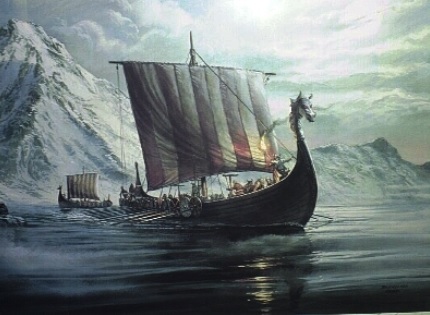 . .
. .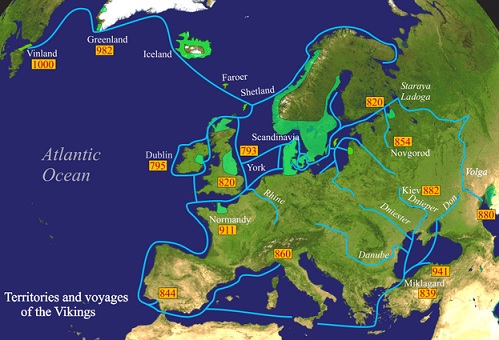
794: Heian period in Japan. Considered to be the last classical period of History of Japan. Chinese influence was at its strongest during this era in Japan.
795: Death of Offa. Marks the end of Mercian dominance in England.
800: Carolingian empire reaches it peak, Charlemagne is crowned Holy Roman Emperor by Pope Leo III. With his crowning, Charlemagne's kingdom is officially recognized by the Papacy as the largest in Europe since the fall of the Roman Empire.
800: Gunpowder is invented. Kingdom of Ghana prospers based on salt trade.
814: Death of Charlemagne. Would be a factor towards the splitting of his empire almost 30 years later.
825: Battle of Ellandun. Egbert defeats Mercians. Wessex becomes the leading kingdom of England.
827: Muslims invade Sicily. First encounter of attempts to conquer Byzantine Sicily, until the last Byzantine outpost was conquered in 965.
840: Muslims capture Bari and much of southern Italy.
843: Division of Charlemagne's (Carolingian) Empire between his grandsons with the Treaty of Verdun. Sets the stage for the founding of the Holy Roman Empire and France as separate states.
843: Kenneth McAlpin becomes king of the Picts and Scots, creating the Kingdom of Alba.
862: Viking state in Russia founded under Rurik, first at Novgorod, then Kiev.
864: Christianization of Bulgaria.
866: Fujiwara period in Japan. Would become the most powerful clan during the Heian period in Japan for around three centuries.
866: Viking Great Army arrives in England. Northumbria, East Anglia, and Mercia were overwhelmed.
868: Earliest known printed book in China with a date.
871: Alfred the Great assumes the throne, the first king of a united England. He defended England from Viking invaders, formed new laws and fostered a rebirth of religious and scholarly activities.
872: Harold Fairhair becomes King of Norway.
874: Iceland is settled by Norsemen.
882: Kievan Rus' is established. Would be sustained until the Mongol invasion of Rus' over four and a half centuries, despite peaking during the middle 11th century during the reign of Yaroslav the Wise.
885: Arrival of the disciples of Saints Cyril and Methodius in Bulgaria. Creation of the Cyrillic script; in the following decades the country became the cultural and spiritual centre of the whole Eastern Orthodox part of the Slavic World.
886: Vikings attack Paris.
890: Final breakup of the Carolingian empire.
893: Emperor Simeon I becomes ruler of the First Bulgarian Empire in the Balkans. Golden age of the First Bulgarian Empire (896-927). The Cyrillic alphabet was developed in the Preslav Literary School and Ohrid Literary School.
896: Arpad and the Magyars are present in Pannonia.
899: Death of Alfred the Great.
900: Lowland Maya cities in the south collapse. Signifies the end of the Classic Period of Maya history. The Maya in northern Yucatan continue to thrive.
907: Tang Dynasty ends with Emperor Ai deposed. The Five Dynasties and Ten Kingdoms period in China commences.
910: King Edward the Elder of England, son of King Alfred, defeats the Northumbrian Vikings at the Battle of Tettenhall; they never raid south of the River Humber again.
910: Cluny Abbey is founded by William I, Count of Auvergne. Cluny goes on to become the acknowledged leader of Western Monasticism. Cluniac Reforms initiated with the abbey's founding.
911: The Viking Rollo and his tribe settle in what is now Normandy by the terms of the Treaty of Saint-Clair-sur-Epte, founding the Duchy of Normandy.
916: Cities established on East African Coast.
917: Battle of Anchialus. Simeon I the Great defeats the Byzantines. Recognition of the Imperial Title of the Bulgarian rulers.
919: Henry the Fowler, Duke of Saxony elected German King. First king of the Ottonian Dynasty. Henry I considered the founder and first king of the medieval German state.
925: The first King of Croatia (rex Croatorum), Tomislav (910-928) of the Trpimirovic dynasty was crowned. Tomislav united Croats of Dalmatia and Pannonia into a single Kingdom, and created a sizeable state.
927: King Aethelstan the Glorious unites the heptarchy of The Anglo-Saxon nations of Wessex, Sussex, Essex, Kent, East Anglia, Mercia and Northumbria founding the Kingdom of England.
927: According to Theophanes Continuatus (The Continuer of Theophanes's Chronicle) - Tomislav of Croatia defeated Bulgarian army of Tsar Simeon I under Duke Alogobotur, in battle of the Bosnian Highlands. Bulgarian expansion to the west was stopped.
927: Death of Simeon I the Great. Recognition of the Bulgarian Patriarchate, the first independent National Church in Europe.
929: Abd-ar-Rahman III of the Umayyad dynasty in al-Andalus (part of the Iberian peninsula) takes the title of Caliph or ruler of the Islamic world. Beginning of the Caliphate of Cordoba (929-1031).
936: Wang Geon unified Later Three Kingdoms of Korea.
938: Ngo Quyen won the battle of Bach Dang against Chinese Southern Han army. This event marked the independence of Vietnam after 1000 years under Chinese colony.
955: Battle of Lechfeld. Otto the Great, son of Henry the Fowler, defeats the Magyars. This is the defining event that prevents the Hungarians from entering Central Europe.
960: Mieszko I becomes duke of Polans. First historical ruler of Poland and de facto founder of the Polish State.
960: Song Dynasty begins after Emperor of Taizu usurps the throne from the later Zhou, last of the Five Dynasties. A 319-year period of Song rule (Northern & Southern combined) reunites China.
961: Fire lance in Song Dynasty China, developed first with a tube of bamboo and later with a metal tube that shot a weak gunpowder blast of flame and shrapnel, its earliest depiction is a painting found at Dunhuang. Fire lance is the earliest firearm in the world and one of the earliest gunpowder weapons.
Fireworks first appear in China during the Song Dynasty (960-1279), in the early age of gunpowder.
 . .
. .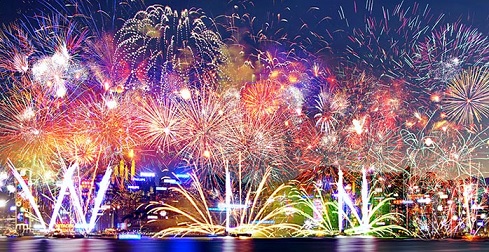
963-964: Otto deposes Pope John XII who is replaced with Pope Leo VIII. Citizens of Rome promise not to elect another Pope without Imperial approval.
965-967: Mieszko I of Poland and his court embrace Christianity, which becomes national religion.
969: John I Tzimiskes and Nikephoros II are executed. Sultane of Rums are proclaimed.
976: Death of John I Tzimiskes; Basil II (his co-emperor) takes sole power. Under Basil II zenith of the power of Eastern Empire after Justinian.
978: Al-Mansur Ibn Abi Aamir becomes de facto ruler of Muslim Al-Andalus. Peak of power of Moorish Iberia under "Almanzor".
981: Basil II (called "Bulgar Slayer") begins final conquest of Bulgaria by Eastern Empire. Conquest finished by 1018.
985: Eric the Red, exiled from Iceland, begins Scandinavian colonization of Greenland.
987: Succession of Hugh Capet to the French Throne. Beginning of Capetian Dynasty.
988: Volodymyr I of Kiev embraces Christianity, which becomes national religion.
989: Peace and Truce of God formed. The first movement of the Catholic Church using spiritual means to limit private war, and the first movement in medieval Europe to control society through non-violent means.
1001: Leif Ericson is to settle during the winter in present-day Canada at L'Anse aux Meadows. Ericson is to be the first European to settle in the Americas during the Norse exploration of the Americas.
1008: The Umayyad emirate at Cordoba collapes into civil war.
1014: Danes conquered England.
1016: King Canute the Great becomes King of England after the death of Edmund Ironside, with whom he shared the English throne. He also rules Norway and Denmark. Danes become kings of England for the next 26 years before the last rise of the Anglo-Saxons before the Norman Conquest.
1018: The Byzantines under Basil II conquer Bulgaria after a bitter 50-years struggle. Concludes the Byzantine conquest of Bulgaria.
1021: The Tale of Genji, written by Murasaki Shikibu, is completed sometime before this date. It is sometimes called the world's first novel, the first modern novel, the first psychological novel or the first novel still to be considered a classic.
1037: The Great Seljuk Empire is founded by Tughril Beg. Would be a major force during the first two Crusades, and an antagonist to the Byzantine Empire over the next century.
1047: Normans conquer southern Italy and Sicily.
1049: Pope Leo IX ascends to the papal throne. Leo IX was the pope that excommunicated Patriarch of Constantinople, Michael Cerularius (who also excommunicated Leo), which caused the Great Schism.
1050: The astrolabe, an ancient tool of navigation, is first used in Europe. Early tool of marine navigators, astrologers, astronomers.
1054: The East-West Schism which divided the church into Western Catholicism and Eastern Orthodoxy. Tensions will vary between the Catholic and Orthodox churches throughout the Middle Ages.
1060: The Almohads established as a power on the coast of North Africa.
1066: William the Conqueror, Duke of Normandy, invades England and becomes King after the Battle of Hastings. End of Anglo-Saxon rule in England and start of Norman lineage.
1067: Pope Gregory VII elevated to the papal throne. This begins a period of church reform.
1071: The Seljuks under Alp Arslan defeat the Byzantine army at Manzikert. The Normans capture Bari, the last Byzantine possession in southern Italy. Beginning of the end of Byzantine rule in Asia Minor.
1075: Dictatus Papae in which Pope Gregory VII defines the powers of the pope. Peak of the Gregorian Reform, and an immense factor in the Investiture Controversy.
1077: Holy Roman Emperor Henry IV walks to Canossa where he stands barefoot in the snow to beg forgiveness of the Pope for his offences, and admitting defeat in the Investiture Controversy. This helps establish Papal rule over European heads of state for another 450 years.
1077: The Construction of the Tower of London begins. The tower of London was the ultimate keep of the British Empire.
1086: The compilation of the Domesday Book, a great land and property survey commissioned by William the Conqueror to assess his new possessions. This is the first such undertaking since Roman times.
1088: University of Bologna is formed. It is the oldest university in Europe.
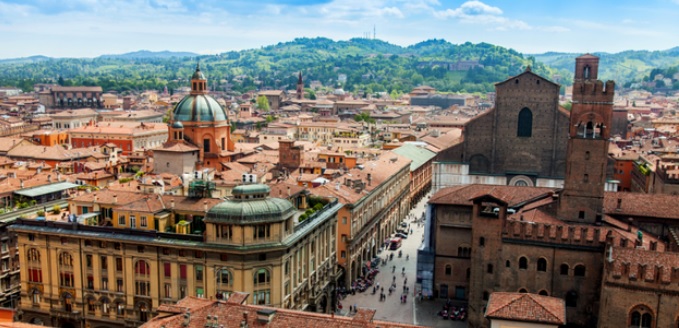
1098: The Cistercian Order is founded. Was a return to the original observance of the Rule of St. Benedict.
1098: Crusaders take Antioch.
1099: Crusaders take Jerusalem.
1102: Kingdom of Croatia and Kingdom of Hungary formed a personal union of two kingdoms united under the Hungarian king.
1106: Henry I of England defeats his older brother Robert Curthose, duke of Normandy, at the Battle of Tinchebrai, and imprisons him in Devizes castle; Edgar Atheling and William Clito are also taken prisoner. This victory made a later struggle between England and the rising Capetian power in France inevitable.
1107: Through the Compromise of 1107, suggested by Adela, the sister of King Henry, the Investiture Struggle in England is ended.This compromise removed one of the points of friction between the English monarchy and the Catholic Church.
1109: In the Battle of Naklo, Boleslaus III Wrymouth defeats the Pomeranians. Polish access to the sea is re-established.
1109: In the Battle of Hundsfeld, Boleslaus III Wrymouth defeats Emperor Henry V. German expansion to the centre of Europe is stopped.
1116: The Byzantine army defeats the Turks at Philomelion. The Turks abandon the entire coastal area of Anatolia and all of western Anatolia.
1117: The University of Oxford is founded, the oldest university in the United Kingdom.
1118: The Knights Templar are founded to protect Jerusalem and European pilgrims on their journey to the city. Becomes the most recognizable, and impactful military orders during the Crusades.
1119: Mariner's compass (wet compass) in Song Dynasty China: The earliest recorded use of magnetized needle for navigational purposes at sea is found in Zhu Yu's book Pingzhou Table Talks of 1119 (written from 1111 to 1117).
The typical Chinese navigational compass was in the form of a magnetic needle floating in a bowl of water.
1120: Angkor Wat (Khmer: "Capital Temple") is a temple complex in Cambodia and the largest religious monument in the world. It was originally constructed as a Hindu temple of god Vishnu for the Khmer Empire, gradually transforming into a Buddhist temple towards the end of the 12th century.
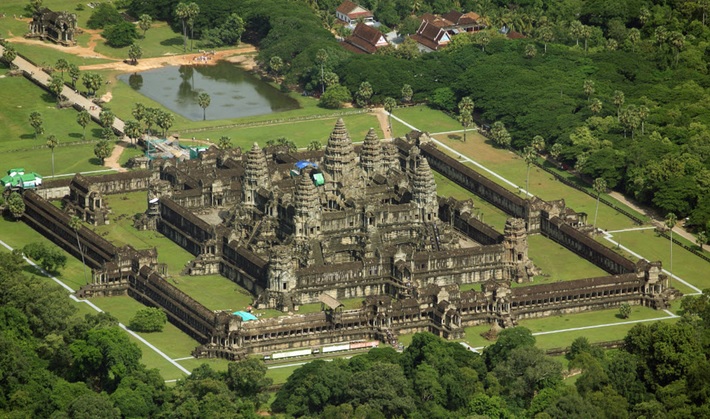
1122: The Concordat of Worms was drawn up between Emperor Henry V and Pope Calixtus II. This concordat ended the investiture struggle, but bitter rivalry between emperor and pope remained.
1123: The First Lateran Council followed and confirmed the Concordat of Worms.
1125: Lothair of Supplinburg, duke of Saxony, is elected Holy Roman Emperor instead of the nearest heir, Frederick of Swabia. This election marks the beginning of the great struggle between the Guelfs and the Ghibellines.
1125-1127: Jingkang Incident. The Jurchen soldiers sack Kaifeng, bringing an end to the Northern Song Dynasty in China; the Song moves further south and makes Lin'an their new capital.
1130: Roger II is crowned King of Sicily, a Royal title given him by the Antipope Anacletus II. This coronation marks the beginning of the Kingdom of Sicily and its Mediterranean empire under the Norman kings, which was able to take on the Holy Roman Empire, the Papacy, and the Byzantine Empire.
1135: The Anarchy begins in England. This will mark a 19-year period of Government strife and Civil War between the supporters of Stephen and Matilda, and end with the crowning of Matilda's son, Henry II, and beginning the Plantagenet dynasty.
1139: The Second Lateran Council declared clerical marriages invalid, regulated clerical dress, and punished attacks on clerics by excommunication. Enforces the major reforms that Gregory VII began to heavily campaign for several decades earlier.
1147-1149: The Second Crusade was in retaliation for the fall of Edessa, one of the first Crusader States founded in the First Crusade. It was an overall failure. This was the first Crusade to have been led by European kings.
1150: Ramon Berenguer IV, Count of Barcelona, married Queen Petronilla of Aragon. They had been betrothed in 1137. This marriage gave the Kingdom of Aragon access to the Mediterranean Sea, creating a powerful kingdom which expanded to control many of the Mediterranean lands.
1152: The Synod of Kells-Mellifont established the present diocesan system of Ireland and recognized the primacy of Armagh. This synod marks the inclusion of the Irish Church into mainstream European Catholicism.
1158: The Hanseatic League is founded. This marks a new period of trade and economic development for northern and central Europe.
1163: The first cornerstone is laid for the construction of Notre Dame de Paris.
1166: Stefan Nemanja united Serbian territories, establishing the Medieval Serbian state. This marks the rise of Serbia which will dominate the Balkans for the next three hundred years. Allies of Serbia at this moment become the Hungarian Kingdom and the Republic of Venice.
1171: King Henry II of England lands in Ireland to assert his supremacy and the Synod of Cashel acknowledges his sovereignty. With his landing, Henry begins the English claim to and occupation of Ireland which would last some seven and a half centuries.
1174: King William I of Scotland, captured in the Battle of Alnwick by the English, accepts the feudal lordship of the English crown and does ceremonial allegiance at York. This is the beginning of the gradual acquisition of Scotland by the English.
1175: Honen Shonin (Genku) founds the Jodo shu (Pure Land) sect of Buddhism. This event marks the beginning of the Buddhist sectarian movement in Japan.
1176: At the Battle of Legnano, the cavalry of Frederick Barbarossa is defeated by the infantry of the Lombard League. This is the first major defeat of cavalry by infantry, signaling the new role of the bourgeoisie.
1179: The Third Lateran Council limits papal electees to the cardinals alone, condemns simony, and forbids the promotion of anyone to the episcopate before the age of thirty.
1183: The final Peace of Constance between Frederick Barbarossa, the pope, and the Lombard towns is signed. The various articles of the treaty destroyed the unity of the Empire and Germany and Italy underwent separate developments.
1183: The Taira clan are driven out of Kyoto by Minamoto Yoshinaka. The two-year conflict which follows ends at the Battle of Dan no Ura.
1184: Pope Lucius III issues the papal bull Ad Abolendam. This bull set up the organization of the medieval inquisitions.
1185: Windmills are first recorded.
1185: Uprising of Asen and Peter. The reestablishment of the Bulgarian Empire.
1185: At the Battle of Dan no Ura, Minamoto Yoshitsune annihilates the Taira clan. The elimination of the Taira leaves the Minamoto the virtual rulers of Japan and marks the beginning of the first period of feudal rule known as the Kamakura Period.
1186: The future emperor Henry VI marries Constance of Sicily, heiress to the Sicilian throne. This marriage shifts the focus of the Guelphs/Ghibelline struggle to Sicily and marks the ruin of the House of Hohenstaufen.
1187: Saladin recaptures Jerusalem. Would lead to the Third Crusade.
1189: Richard I ascends the throne of England. His heavy taxation to finance his European ventures created an antipathy of barons and people toward the crown, but his being absent enabled the English to advance in their political development.
1189�1192: The Third Crusade follows upon Saladin's uniting the Muslim world and recapturing Jerusalem. Despite managing to win several major battles, capturing Cypress, the Crusaders did not recapture Jerusalem.
1192: Minamoto no Yoritomo is appointed Sei-i Taishogun, or shogun for short. He is the first of a long line of military dictators to bear this title. The institution would last until 1913.
1193: Muhammad bin Bakhtiyar Khilji sack and burn the university at Nalanda. This is the beginning of the decline of Buddhism in India.
1193: The first known merchant guild.
1199: Europeans first use of compasses which allows advances in exploration, maritime trade and warfare. The familiar mariner's dry compass uses a pivoting needle suspended above a compass-card in a glass box.

1204: Sack of Constantinople during the Fourth Crusade. Considered to be the beginning of the decline of the Byzantine Empire.
1205: Battle of Adrianople. The Bulgarians under Emperor Kaloyan defeat Baldwin I. Beginning of the decline of the Latin Empire.
1206: Genghis Khan was elected as Khagan of the Mongols and the Mongol Empire was established. The Mongols would conquer much of Eurasia, changing former political borders.
1208: Pope Innocent III calls for the Albigensian Crusade which seeks to destroy a rival form of Christianity practiced by the Cathars.
1209: The University of Cambridge is founded.
1209: Founding of the Franciscan Order. One of the more significant orders in the Roman Catholic church, founded by Saint Francis of Assisi.
1212: Spanish Christians succeed in defeating the Moors in the long Reconquista campaigns, after the Battle of Las Navas de Tolosa. By 1238, only the small southern Emirate of Granada remained under Muslim control.
1215: The Magna Carta is sealed by John of England. This marks one of the first times a medieval ruler is forced to accept limits on his power, and is now considered to be one of the first declarations of universal human rights.
1215: Fourth Lateran Council. Dealt with transubstantiation, papal primacy and conduct of clergy. Proclaimed that Jews and Muslims should wear identification marks to distinguish them from Christians.
1216: Papal recognition of the Dominican Order.
1219: Serbian Orthodox Church becomes autocephalous under St. Sava, its first Archbishop.
1227: Genghis Khan dies. His kingdom is divided among his children and grandchildren: Empire of the Great Khan, Chagatai Khanate, Mongolian Homeland, and the Blue Horde and White Horde (Which would later become the Golden Horde).
1230: The Mali Empire of West Africa grows around the upper Niger inland delta.
1237�1240: Mongol invasion of Rus' resumes. Causes the split of Kievan Rus' into three components (present day Russia, Ukraine, Belarus, greatly effects various regions of raided lands in other parts of Europe; Golden Horde formed. Mongol control permits travel over much of Asia.
1248: Louie IX leads seventh crusade to Egypt.
1257: Founding of the University of Paris.
1257: Provisions of Oxford forced upon Henry III of England. This establishes a new form of government-limited regal authority.
1258: Siege of Baghdad. Mongols (the Ilkhanate) ensure control of the region; Generally considered the end of the Islamic Golden Age.
1258: The first Mongol invasion of Vietnam. The Mongol army was defeated by emperor Tran Thai Tong.
1260: Mamluks expel Mongols from Levant region. (Cyprus, Egypt, Iraq, Israel, Jordan, Lebanon, Palestine, Syria, and Turkey)
1261: Byzantines recapture Constantinople. Latin Empire Falls.
1270: Louie IX dies besieging Tunis on the eighth Crusade.
1272-73: The Ninth Crusade occurs. Considered to be the Last Major Crusade to take place in the Holy Land.
1273: Rudolph I of Germany is elected Holy Roman Emperor. This begins the Habsburg de facto domination of the crown that lasted until is dissolution in 1806.
1274: Thomas Aquinas' work, Summa Theologica is published, after his death. Is the main staple of theology during the Middle Ages.
1279: Battle of Yamen. Marks the end of the Song Dynasty in China, and all of China is under the rule of Kubla Khan as the emperor, creating a new Chinese dynasty, the Yuan.
1281: Japanese repel Mongol invasion.
1282: Sicilian Vespers. Sicilians massacre Angevins over a six-week period, after a Frenchman harassed a woman. Would mark a two decade period of war and peace treaties mainly between Aragon, Sicily, and the Angevins.
1283: First regulated Catalan Courts. Presided by king Peter III of Aragon for the whole Principality of Catalonia, it became in one of the first parliamentary bodies that banned the royal power to create legislation unilaterally.
1285: The second Mongol invasion of Vietnam. The Mongol army was defeated by emperor Tran Nhan Tong and general Tran Hung Dao.
1286: The first form of eyeglasses were produced in Italy by monks or craftsmen in Pisa (or perhaps Venice). This invention allowed people with vision problems and elderly people with fading eyesight to live happier and more productive lives.
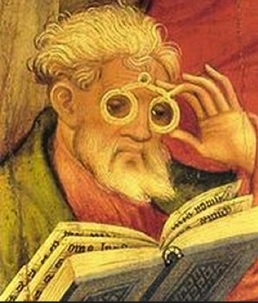
1290: The city of Great Zimbabwe becomes a center of trade and East Africa.
1296: Edward I of England invades Scotland, starting the First War of Scottish Independence.
1297: The Battle of Stirling Bridge. William Wallace emerges as the leader of the Scottish resistance to England.
1298: Marco Polo publishes his tales of China, along with Rustichello da Pisa. A key step to the bridging of Asia and Europe in trade.
1299: The Ottoman Empire is founded by Osman I. Becomes longest lasting Islamic Empire, lasting over 600 years into the 20th century.
1302: Crusaders expelled from the Holy Land.
1305: William Wallace is executed for treason.
1307: The Knights Templar are rounded up and murdered by Philip the Fair of France, with the backing of the Pope. Hastens the demise of the order within a decade.
1307: Beginning of the Babylonian Captivity of the Papacy during which the Popes moved to Avignon. Begins a period of over seven decades of the Papacy outside of Rome that would be one of the major factors of the Western Schism.
1310: Dante publishes his Divine Comedy. Is one of the most defining works of literature during the Late Middle Ages, and among the most recognizable in all of literature.
1314: Battle of Bannockburn. Robert the Bruce restores Scotland's de facto independence.
1325: The Mexica found the city of Tenochtitlan. This would later be the epicenter and capital of the Aztec Empire until the Siege of Tenochtitlan 200 years later.

1333: Emperor Go-Daigo returns to the throne from exile, and begins the Kenmu restoration. The Kamakura Shogunate comes to an end, and the Kenmu Restoration only lasts a few years before the Ashikaga Shogunate begins.
1337: The Hundred Years' War begins. England and France struggle for a dominating position in Europe and their region. The war will span through three/four different war periods within a 116-year period.
1346: Battle of Crecy. English forces led by Edward III and Edward, the Black Prince defeat the French forces of Philip VI despite being outnumbered at least 4 to 1, with the longbow being a major factor in favor of England. Also considered to be the beginning of the end of classic chivalry.
1347: The Black Death ravages Europe for the first of many times. An estimated 20% - 40% of the population is thought to have perished within the first year. The first of many concurrences of this plague, this was believed to have wiped out as many as 50% of Europe's population by its end.
1347: The University of Prague is founded. It is the oldest Czech and German-Speaking University in the world.
1360: End of Crusades in the Middle East.
1362: Sultan Murad begins conquest of the Balkans.
1368: The fall of the Yuan Dynasty. Its remnants, known as Northern Yuan, continued to rule Mongolia. The breakup of the Mongol Empire, which marked the end of Pax Mongolica. Ming Dynasty rises in China.
1370: Tamerlane establishes the Timurid Dynasty. During this 35-year period, Tamerlane would ravage his fellow Islamic states such as the Golden Horde and the Delhi Sultanate in order to accomplish his goal of a restored Mongol Empire.
1377: Papacy returns to Rome.
1378: The Western Schism during which three claimant popes were elected simultaneously. The Avignon Papacy ends.
1380: Prince Dmitry Donskoy of Moscow led a united Russian army to a victory over the Mongols in the Battle of Kulikovo.
1380: Chaucer begins to write The Canterbury Tales. Chaucer's greatest work, and one of the foundations towards the formation of the Modern English language.
1381: Peasants' Revolt in England. Quickest-spread revolt in English history, and the most popular revolt of the Late Middle Ages.
1381: The Bible is translated into English by John Wycliffe. First print published in English (Vulgate).
1386: The University of Heidelberg is founded. It is the oldest university in Germany.
1389: Battle of Kosovo in Serbia. This was in many respects the decisive battle between the Turks, led by Sultan Murat, and Christian army, led by the Serbs and their duke Lazar. The battle took place in Kosovo, the southern province of the Medieval Serbian Empire. After this battle Turkish empire continued to spread over the Balkans, to finally reach Vienna.
1392: Joseon Dynasty founded in Korea. Becomes longest reigning Korean dynasty.
1396: The Battle of Nicopolis. The last great Crusade fails. Bulgaria was conquered by the Ottomans.
1397: The Kalmar Union is formed. Queen Margaret I of Denmark unites the Denmark, Sweden, and Norway, and lasts until 1523.
1399: Richard II abdicates the throne to Henry of Bolingbroke, who becomes Henry IV of England. End of Plantagenet Dynasty, beginning of the Lancaster lineage of kings.
1400: Bond event 0 - roughly correlates with the Little Ice Age (1400-1850 CE) and caused large migrations of Europeans around the world. The change in climate also caused massive droughts in India, weakening the already weak Mughal empire setting the stage for chaos and eventual European colonization.
1402: Battle of Ankara. Bayfuezid I is captured by Tamerlane's forces, causing the interregnum of the Ottoman Empire.
1405: Chinese Naval Expeditions of Southeast Asia and the Indian Ocean (to Eastern Africa) begins, under the leadership of Zheng He. This will be the first of seven of the Ming Dynasty-sponsored expeditions, lasting until 1433.
1409: Ladislaus of Naples sells his "rights" on Dalmatia to the Venetian Republic for 100,000 ducats. Dalmatia would with some interruptions remain under Venetian rule for nearly four centuries, until 1797.
1415: Kingdom of Portugal conquers Ceuta. Beginning of the Portuguese Empire. Beginning of the Age of Discovery.
1415: Battle of Agincourt. Henry V and his army defeat a numerically superior French army, partially because of the newly introduced English longbow. The turning point in the Hundred Years' War for 15th Century England that lead to the signing of the Treaty of Troyes signed 5 years later, making Henry V of England heir to the throne of France.
1417: The Council of Constance ends. The Western Schism comes to a close, and elects Pope Martin V as the sole pope.
1419: Hussite Wars begins after 4 years after the death of Jan Hus in central Europe, dealing with the followers of Jan Hus and those against them. Although the war was a stalemate (ended around 1434), it was another factor that[clarification needed] between the Catholics and Protestants before the Protestant Reformation.
1428: Itzcoatl, the fourth Mexica king in Tenochtitlen, allied with Texcoco and Tlacopan, defeats Azcapotzalco. Signifies the birth of the Aztec Empire and the start of an aggressive expansion lasting 90 years. Itzcoatl and his men began burning historic hieroglyphic books of conquered states, rewriting history with the Mexica at its center.
1429: Joan of Arc lifts the siege of Orleans for the Dauphin of France, enabling him to eventually be crowned at Reims. The battle at Orl�ans is the first of many which ultimately drive the English from continental Europe.
1431: Trial and execution of Joan of Arc. Death of the woman who helped turned the Hundred Years' War in favor of the French over the past two years.
1434: The Medici family rises to prominence in Florence. This ushers in a period of significance of the Medici's, such as bankers, popes, queens (regents) and dukes, throughout Europe (mainly Italy, especially the Florentine Republic), over the next three centuries.
1438: Prince Cusi Yupanqui becomes the first Inca emperor. Inca civilization begins expanding and the Inca Empire is born.
1439: Johannes Gutenberg invents the printing press based on existing screw presses. The printing press spread within several decades to over two hundred cities in a dozen European countries. The arrival of mechanical movable type printing introduced the era of mass communication, which permanently altered the structure of society. The relatively unrestricted circulation of information and (revolutionary) ideas transcended borders, captured the masses in the Reformation and threatened the power of political and religious authorities. The sharp increase in literacy broke the monopoly of the literate elite on education and learning and bolstered the emerging middle class.
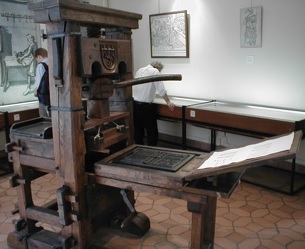
1442: Battle of Szeben. Third significant victory for the Hungarian forces led by Janos Hunyadi over the Ottoman forces.
1444: Battle of Varna. Final battle of the Crusade of Varna; Ottomans are victorious over the Hungarian-Polish armies, and Wladyslaw III of Poland dies.
1453: Constantinople falls to the Ottoman Turks. End of the Byzantine Empire (or Eastern Roman Empire to some); Constantinople becomes capital of Ottoman Empire.
1453: The Hundred Years' War ends. England's once vast territories in France is now reduced to only Calais, which they eventually lose control of as well.
1455: Battle of St. Albans. Traditionally marks the beginning of the War of the Roses.
1456: Siege of Belgrade. Major Ottoman advances are halted for 7 decades, last major victory for Hunyadi.
1459: Smederevo falls under the Turks. Marks the end of the Medieval Serbian Empire.
1461: The Empire of Trebizond falls to the Ottoman Turks. Last Roman outpost to be conquered by the Ottomans.
1467-1477: Onin War takes place in Japan. First of many significant civil wars between shogunates that would continue for another century during the Muromachi period.
1469: Guru Nanak founds Sikh religion.
1475: The Khanate of Crimea is conquered and made a vassal state by Ottoman Empire. Venice is defeated and the Ottoman Empire becomes master of the Aegean Sea.
1480: Russia (Muscovy) achieved independence from the Tartars.
1485: Thomas Malory composes Le Morte d'Arthur, perhaps the best-known work of Arthurian literature in English.
1485: Battle of Bosworth Field. Richard III dies in battle, and Henry Tudor becomes king of England; last shift of Houses/kingship during the War of the Roses.
1487: Battle of Stoke. Marks end of the War of the Roses.
1492: Reconquista ends. Marks end of Moorish/Muslim rule within Iberian Peninsula; Unification of Spain and Portugal, respectively.
1492: Christopher Columbus reaches the New World (Caribbean). Age of Discovery into the New World begins.
1494: Spain and Portugal sign the Treaty of Tordesillas and agree to divide the World outside of Europe between themselves. Pope's ruling will lead to the division of Brazil and Spanish America, as well as the formation of the Spanish Philippines and Portuguese colonies in India and Africa.
1494-1559: Beginning of the Italian Wars between France and the Habsburgs. Italian Wars will eventually lead to the downfall of the Italian city-states.
1495: Emperor Charles V rules Spains, Germany and South America.
1497: Vasco da Gama begins his first voyage from Europe to India and back. He was the first European to sail directly to Eastern Asia from Europe.
1497: John Cabot surveys Newfoundland Coast.
1499: Ottoman fleet defeats Venetians at the Battle of Zonchio.The first naval battle that used cannons in ships.
End of the Middle Ages, beginning of the Modern Era
1503: The Mona Lisa is a half-length portrait painting by the Italian Renaissance artist Leonardo da Vinci that has been described as "the best known, the most visited, the most written about, the most sung about, the most parodied work of art in the world."
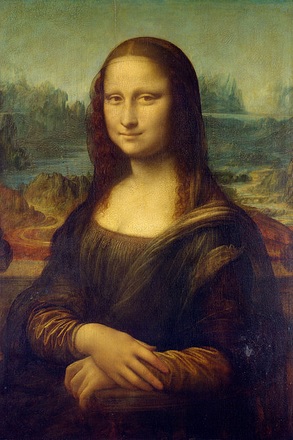 . .
. .
It is regarded by historians as the century in which the rise of the West occurred. During the 16th century, Spain and Portugal explored the world's seas and opened worldwide oceanic trade routes. Large parts of the New World became Spanish and Portuguese colonies, and while the Portuguese became the masters of Asia's and Africa's Indian Ocean trade, the Spanish opened trade across the Pacific Ocean, linking the Americas with Asia.
This era of colonialism established mercantilism as the leading school of economic thought, where the economic system was viewed as a zero-sum game in which any gain by one party required a loss by another. The mercantilist doctrine encouraged the many intra-European wars of the period and arguably fueled European expansion and imperialism throughout the world until the 19th century or early 20th century.
In Europe, the Protestant Reformation gave a major blow to the authority of the papacy and the Roman Catholic Church. European politics became dominated by religious conflicts, with the groundwork for the epochal Thirty Years' War being laid towards the end of the century. In Italy, Luca Pacioli published the first work ever on accounting and Galileo Galilei made the first thermometer. In England, the Italian Alberico Gentili wrote the first book on public international law and divided secularism from canon law and Roman Catholic theology.
In the Middle East, the Ottoman Empire continued to expand, with the Sultan taking the title of Caliph, while dealing with a resurgent Persia. Iran and Iraq were caught by major popularity of the once-obscure Shiite sect of Islam under the rule of the Safavid dynasty of warrior-mystics, providing grounds for a Persia independent of the majority-Sunni Muslim world.
China evacuated the coastal areas, because of Japanese piracy. Japan was suffering a severe civil war at the time.
Mughal Emperor Akbar extended the power of the Mughal Empire to cover most of the South Asian sub continent. His rule significantly
influenced arts, and culture in the region.
Copernicus proposed the heliocentric universe, which was met with strong resistance, and Tycho Brahe refuted the theory of celestial
spheres through observational measurement of the 1572 appearance of a Milky Way supernova. These events directly challenged the long-held
notion of an immutable universe supported by Ptolemy and Aristotle, and led to major revolutions in astronomy and science. It was later supported by Galileo Galilei, an Italian polymath: astronomer, physicist, engineer, philosopher, and mathematician, who played a major role in the scientific revolution of the seventeenth century.
- Wikipedia
Thus in the 1500's we found out that the earth is not the center of the universe, which was a blow to our ethnocentric human nature. Much later we discovered we are on a tiny, but beautiful planet in the arm of Orion in our Milky Way galaxy, orbiting a black hole. How many billions of galaxies exist in our universe, we have not quite determined. There is also speculation that there may be other universes out there. We still have much to learn. That is part of the beauty of being human.)
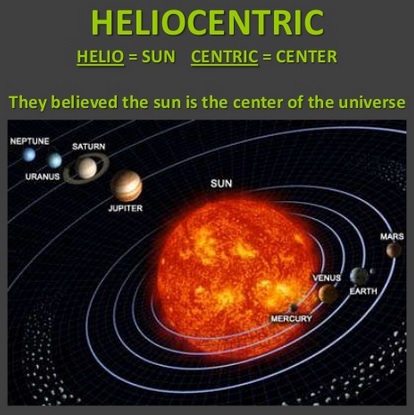

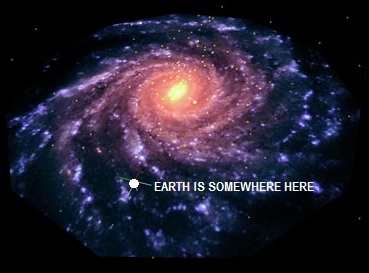
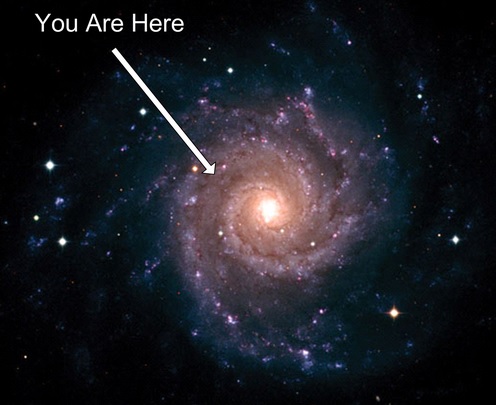
The United East India Company, (Dutch: Verenigde Oostindische Compagnie; VOC), referred to by the British as the Dutch East India Company was originally established as a chartered company in 1602, when the Dutch government granted it a 21-year monopoly on the Dutch spice trade. A multinational company, it is also often considered to be the world's first truly transnational corporation. In the early 1600s, the VOC became the first company in history to issue bonds and shares of stock to the general public. In other words, the VOC was officially the first publicly traded company of the world, because it was the first company to be ever actually listed on an official stock exchange. As the first historical model of the quasi-fictional concept of the megacorporation, the VOC possessed quasi-governmental powers, including the ability to wage war, imprison and execute convicts, negotiate treaties, strike its own coins, and establish colonies.
With its pioneering institutional innovations, the company played a crucial role in business, socio-politico-economic, and financial history of the world. In the early modern period, the VOC was also the driving force behind the rise of corporate globalization, corporate identity, corporate social responsibility, corporate governance, corporate finance, and financial capitalism. As a transcontinental employer, the VOC was an early pioneer of outward foreign direct investment at the dawn of modern capitalism. The company was considered by many to be the first major and the most successful corporation in history.
In the Islamic world, the Ottoman, Safavid Persian and Mughal empires grew in strength. In Japan, Tokugawa Ieyasu established the Edo period at the beginning of the century, starting the isolationist Sakoku policy that was to last until the 19th century. In China, the collapsing Ming Dynasty was challenged by a series of conquests led by the Manchu warlord Nurhaci, which were consolidated by his son Hong Taiji and finally consummated by his grandson, the Shunzi Emperor, founder of the Qing Dynasty.
European politics were dominated by the Kingdom of France of Louis XIV, where royal power was solidified domestically in the civil war of the Fronde. The semi-feudal territorial French nobility was weakened and subjugated to the power of an absolute monarchy through the reinvention of the Palace of Versailles from a hunting lodge to a gilded prison, in which a greatly expanded royal court could be more easily kept under surveillance. With domestic peace assured, Louis XIV caused the borders of France to be expanded. It was during this century that English monarch became a symbolic figurehead and Parliament was the dominant force in government - a contrast to most of Europe, in particular France.
By the end of the century, Europeans were aware of logarithms, electricity, the telescope and microscope, calculus, universal gravitation, Newton's Laws of Motion, air pressure and calculating machines due to the work of the first scientists of the Scientific Revolution, including Galileo Galilei, Johannes Kepler, Rene Descartes, Pierre Fermat, Blaise Pascal, Robert Boyle, Christiaan Huygens, Antonie van Leeuwenhoek, Robert Hooke, Isaac Newton, and Gottfried Wilhelm Leibniz. It was also a period of development of culture in general (especially theater, music, visual arts and philosophy).
- Wikipedia
The Taj Mahal was designated as a UNESCO World Heritage Site in 1983 for being "the jewel of Muslim art in India and one of the universally admired masterpieces of the world's heritage". It was commissioned in 1632 by the Mughal emperor, Shah Jahan (reigned 1628-1658), to house the tomb of his favourite wife, Mumtaz Mahal.
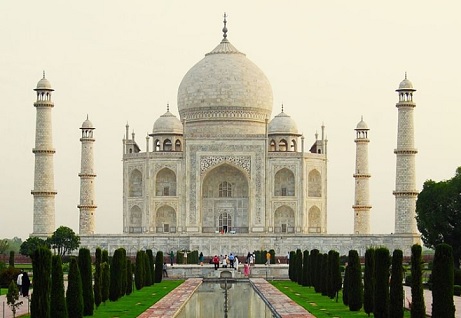
The majority of human history has been spent in Africa. It is believed that humans first left Africa about 70,000 years ago. The speculated reason for this first migration is due to climate change as the worst cold period in the last Ice Age hit the planet. Human population may have dropped to near extinction at 10,000 people. The second migration started around 50,000 years ago as people started leaving the tropics to explore the Middle East and south central Asia and later North Asia, Europe and beyond. Around 15 - 20,000 years ago a small group of Asian hunters began the trek from Siberia to the Americas as the Late Glacial Maximum in the north froze most of the earths water supply and decreased sea levels by as much as 300 feet. - National Geographic

14,500 BCE: It is believed that a small human population of at most a few thousand arrived in "Beringia" from eastern Siberia during the Last Glacial Maximum before expanding into the settlement of the Americas during the Late Glacial Maximum as the American glaciers blocking the way southward melted, but before the sea floor was once again covered by water about 11,000 BCE. Within about 1000 years after arriving into North America they reached South America.
Before European colonization, Beringia was inhabited by the Yupik peoples on both sides of the straits. This culture still remains in the region today along with others. In 2012, the governments of Russia and the United States announced a plan to formally establish "a transboundary area of shared Beringian heritage". Among other things this agreement would establish close ties between the Bering Land Bridge National Preserve and the Cape Krusenstern National Monument in the United States and the planned Beringia National Park in Russia.
During the last glacial period, enough of the earth's water became frozen in the great ice sheets covering North America and Europe to cause a drop in sea levels. For thousands of years the sea floors of many interglacial shallow seas were exposed, including those of the Bering Strait, the Chukchi Sea to the north, and the Bering Sea to the south. Other land bridges around the world have emerged and disappeared in the same way. Around 14,000 years ago, mainland Australia was linked to both New Guinea and Tasmania, the British Isles became an extension of continental Europe via the dry beds of the English Channel and North Sea, and the dry basin of the South China Sea linked Sumatra, Java, and Borneo to Indochina.
The last glacial period, commonly referred to as the "Ice Age", spanned 125,000-14,500 BCE and was the most recent glacial period within the current ice age, which occurred during the last years of the Pleistocene era. The Ice Age reached its peak during the Last Glacial Maximum, when ice sheets began advancing from 33,000 BCE and reached their maximum limits 26,500 BCE. Deglaciation commenced in the Northern Hemisphere approximately 19,000 BCE and in Antarctica approximately 14,500 BCE, which is consistent with evidence that glacial meltwater was the primary source for an abrupt rise in sea level 14,500 BCE and the bridge was finally inundated around 11,000 BCE. The fossil evidence from many continents points to the extinction of large animals, termed Pleistocene megafauna, near the end of the last glaciation.
Fossil evidence also indicates that mastodons probably disappeared from North America about 8,500 BCE as part of a mass extinction of most of the Pleistocene megafauna that is widely presumed to have been a result of human hunting pressure and a comet explosion over north America causing continental wild fires. The latest Paleo-Indians entered the Americas around 14,500 BCE and expanded to relatively large numbers around 11,000 BCE.
You've got the gold I need for my jewelry and I've got the silk you need for your beautiful clothing. How can we negotiate?
"Nowadays, if you need something, you go to the closest mall, shell out a few bucks and head home. Thousands of years ago, the process wasn't nearly as simple. If you or someone in your town didn't grow it, herd it or make it, you needed to abandon that desire or else travel for it, sometimes over great distances. For many towns, the effort of trade was too much. Those ancient towns make only rare appearances in our history books.
When the first civilizations did begin trading with each other about five thousand years ago, however, many of them got rich and did so quickly.
Trade was also a boon for human interaction, bringing cross-cultural contact to a whole new level.
Luxury goods
When people first settled down into larger towns in Mesopotamia and Egypt, self-sufficiency - the idea that you had to produce absolutely everything that you wanted or needed started to fade. A farmer could now trade grain for meat, or milk for a pot, at the local market, which was seldom too far away.
Cities started to work the same way, realizing that they could acquire goods they didn't have at hand from other cities far away, where the climate and natural resources produced different things. This longer-distance trade was slow and often dangerous, but was lucrative for the middlemen willing to make the journey.
The first long-distance trade occurred between Mesopotamia and the Indus Valley in Pakistan around 2500-3000 BCE, historians believe. Long-distance trade in these early times was limited almost exclusively to luxury goods like spices, textiles and precious metals. Cities that were rich in these commodities became financially rich, too, satiating the appetites of other surrounding regions for jewelry, fancy robes and imported delicacies.
It wasn't long after that trade networks crisscrossed the entire Eurasian continent, inextricably linking cultures for the first time in history.
City and Town developments
In the absence of proper roads, the most efficient way to transport goods from one place to another was by sea.
The first and most extensive trade networks were actually waterways like the Nile, the Tigris and the Euphrates in present-day Iraq and the Yellow River in China. Cities grew up in the fertile basins on the borders of those rivers and then expanded by using their watery highways to import and export goods.
The domestication of camels around 1000 BCE helped encourage trade routes over land, called caravans, and linked India with the Mediterranean. Like an ancient version of the Wild West frontier, towns began sprouting up like never before anywhere that a pit-stop or caravan-to-ship port was necessary. Many of the better-known satellite towns of Rome and Greece were founded this way, stretching those fabled empires further afield until their influences crossed continents.
Security, road maintenance, food and lodging along these routes also became important, thus allowing the towns to charge fees and duties for these services.
And in each of these places, foreign traders drank in port towns and shared stories and customs from back home, leaving more than just their parcels behind."
- livescience.com
3000 BCE: The Amber Road
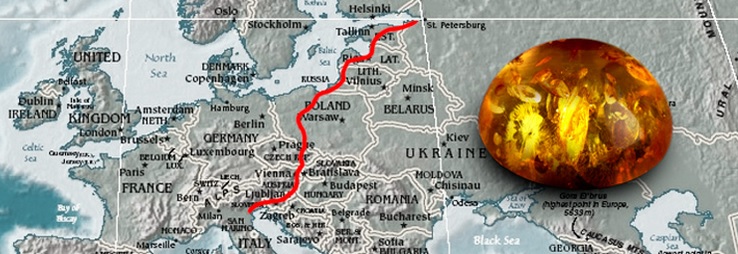
Large deposits of amber were formed under the Baltic Sea millions of years ago when forests covered the area. The amber washes ashore after storms, and can be harvested from the beaches which is how many local amber traders built their business. Amber was valued as a gem (beads) and also for its medicinal purposes.
From at least the sixteenth century BCE, amber was moved from Northern Europe to the Mediterranean area. The breast ornament of the Egyptian pharaoh Tutankhamen (1333-1324 BCE) contains large Baltic amber beads. Heinrich Schliemann found Baltic amber beads at Mycenae, as shown by spectroscopic investigation. The quantity of amber in the Royal Tomb of Qatna, Syria, is unparalleled for known second millennium BCE sites in the Levant and the Ancient Near East. Amber was sent from the North Sea to the temple of Apollo at Delphi as an offering. From the Black Sea, trade could continue to Asia along the Silk Road, another ancient trade route. In Roman times, a main route ran south from the Baltic coast through the land of the Boii (modern Czech Republic and Slovakia) to the head of the Adriatic Sea (modern Gulf of Venice).
The Old Prussian towns of Kaup and Truso on the Baltic were the starting points of the route to the south. In Scandinavia the amber road probably gave rise to the thriving Nordic Bronze Age culture, bringing influences from the Mediterranean Sea to the northernmost countries of Europe.
2500 BCE: The Tin Route
The Tin Route began due to the scattered nature of tin deposits around the world and its essential nature for the creation of bronze by mixing tin with copper. Thus tin trade played an important role in the development of cultures throughout ancient times. Archaeologists have reconstructed parts of the extensive trade networks of ancient cultures from the Bronze Age to modern times using historical texts, archaeological excavations, and trace element and lead isotope analysis to determine the origins of tin objects around the world.
The earliest sources of tin in the Early Bronze Age in the Near East are still unknown and the subject of much debate in archaeology. Possibilities include minor now-depleted sources in the Near East, trade from Central Asia, Sub-Saharan Africa, Europe, or elsewhere.
It is possible that as early as 2500 BCE, Erzgebirge had begun exporting tin, using the well established Baltic amber trade route to supply Scandinavia as well as the Mediterranean with tin (Penhallurick 1986, pp. 75-77). By 2000 BCE, the extraction of tin in Britain, France, Spain, and Portugal had begun and tin was traded to the Mediterranean sporadically from all these sources. Evidence of tin trade in the Mediterranean can be seen in a number of Bronze Age shipwrecks containing tin ingots such as the Uluburun off the coast of Turkey dated 1300 BCE which carried over 300 copper bars weighing 10 tons, and approximately 40 tin bars weighing 1 ton (Pulak 2001). While Sardinia does not appear to have much in terms of significant sources of tin, it does have rich copper and other mineral wealth and served as a centre for metals trade during the Bronze Age and likely actively imported tin from the Iberian Peninsula for export to the rest of the Mediterranean.
1400 BCE: Via Maris
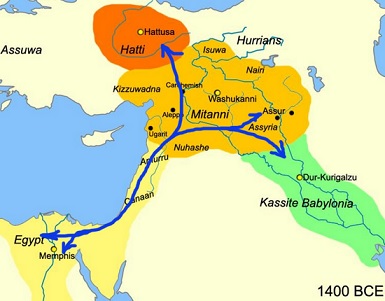
600 BCE: The Incense Trade Route
The Incense trade route or the Incense Road of Antiquity comprised a network of major ancient land and sea trading routes linking the Mediterranean world with Eastern and Southern sources of incense, spices and other luxury goods, stretching from Mediterranean ports across the Levant and Egypt through Northeastern Africa and Arabia to India and beyond. The incense land trade from South Arabia to the Mediterranean flourished between roughly the 7th century BCE to the 2nd century AD. The Incense Route served as a channel for the trading of goods such as Arabian frankincense and myrrh; Indian spices, precious stones, pearls, ebony, silk and fine textiles; and the Horn of African rare woods, feathers, animal skins, Somali frankincense, and gold.
The Egyptians had traded in the Red Sea, importing spices, gold and exotic wood from the "Land of Punt" and from Arabia. Indian goods were brought in Arabian and Indian vessels to Aden. Rawlinson identifies the long-debated "ships of Tarshish," as a Tyrian fleet equipped at Ezion-Geber that made several trading voyages to the east bringing back gold, silver, ivory and precious stones. These goods were transshipped at the port of Ophir.
According to one historian:
In the ancient period, it would seem that South Arabia and the Horn of Africa were the major suppliers of incense, while in modern times the commercial centre for the trade in gums has been Aden and Oman. Early ritual texts from Egypt show that incense was being brought to the upper Nile by land traders, but perhaps the most spectacular evidence of this trade is provided by the frescos dated to around 1500 BCE on the walls of the temple at Thebes commemorating the journey of a fleet that the Queen of Egypt had sent to the Land of Punt. Five ships are depicted in these reliefs, piled high with treasure, and one of them shows thirty-one small incense trees in tubs being carried on board."
500 BCE: The Salt Route (Via Salaria)
The Via Salaria, one of the oldest Roman roads in Italy, eventually ran from Rome (from Porta Salaria in the Aurelian Walls) to Castrum Truentinum (Porto d'Ascoli) on the Adriatic coast - a distance of 242 kilometres (150 mi). Salt was a precious commodity and was needed to flavor and preserve food and was used as an antiseptic. Easily harvested salt was a scarce in early times so areas rich in salt became important trading centers.
The Old Salt Route, about 100 kilometres (62 mi), was a medieval route in northern Germany, linking Luneburg (in Lower Saxony) with the port of Lubeck (in Schleswig-Holstein) around 956 AD, which required more salt than it could produce itself. Luneburg, first mentioned in the 10th century, grew rich on the salterns surrounding the town. Traders shipped salt via Lauenburg, to Lubeck, which supplied all the coasts of the Baltic Sea. Luneburg and its salt were major factors of power and wealth of the Hanseatic League. After a long period of prosperity, its importance declined after 1600. The last of the salt mines was closed in 1980, ending the thousand-year tradition.
In France, the salt route was longer than a portage between navigable streams. Salt unloaded at the ports of Nice and Ventimiglia could travel by two salt roads leading away from the coastal area, from Nice up the Vesubie valley, via Saint-Martin-Vesubie at the head of the valley, or from Ventimiglia inland through the Roya Valley, over the Col de Tende pass and into Piedmont.
In Ethiopia blocks of salt, called amoleh, were carved from the salt pans of the Afar Depression, especially around Lake Afrera, then carried by camel west to Atsbi and Ficho in the highland, whence traders distributed them throughout the rest of Ethiopia, as far south as the Kingdom of Kaffa.
Before the People's Republic of China annexed Tibet and closed the borders in the 1950s, salt trade between Nepal and Tibet crossed passes through the Himalayas such as the gorges of the upper Karnali and Gandaki rivers. Caravans of pack animals brought rice up from Nepal's Terai and lower hills in exchange for salt from dry lakes on the Tibetan Plateau.
322 BCE: The Grand Trunk Road
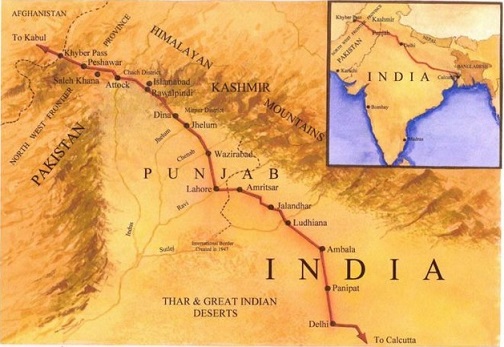
This highway has been associated with emperors Chandragupta Maurya and Sher Shah Suri, the latter became synonymous with this route due to his role in ensuring the safety of the travelers and the upkeep of the road. Emperor Sher Shah widened and realigned the road to other routes, and provided approximately 1700 roadside inns through his empire. These inns provided free food and lodgings to the travelers regardless of their status.
The British occupation of this road was of special significance for the British Raj in India. Bridges, pathways and newer inns were constructed by the British for the first thirty-seven years of their reign since the occupation of Punjab in 1849. The British followed roughly the same alignment as the old routes, and at some places the newer routes ran parallel to the older routes.
Vadime Elisseeff (2000) comments on the Grand Trunk Road:
"Along this road marched not only the mighty armies of conquerors, but also the caravans of traders, scholars, artists, and common folk. Together with people, moved ideas, languages, customs, and cultures, not just in one, but in both directions. At different meeting places - permanent as well as temporary - people of different origins and from different cultural backgrounds, professing different faiths and creeds, eating different foods, wearing different clothes, and speaking different languages and dialects would meet one another peacefully. They would understand one another's food, dress, manner, and etiquette, and even borrow words, phrases, idioms and, at times, whole languages from others."
120 BCE: The Silk Road or Silk Route
 - silkroutes.net
- silkroutes.netWhile the term is of modern coinage, the Silk Road derives its name from the lucrative trade in silk (and horses) carried out along its length, beginning during the Han dynasty (207 BCE - 220 CE). The Han dynasty expanded Central Asian sections of the trade routes around 114 BCE, largely through missions and explorations of the Chinese imperial envoy, Zhang Qian. The Chinese took great interest in the safety of their trade products and extended the Great Wall of China to ensure the protection of the trade route.
Trade on the Silk Road played a significant role in the development of the civilizations of China, the Goguryeo kingdom (Korea), Japan, the Indian subcontinent, Persia, Europe, the Horn of Africa and Arabia, opening long-distance political and economic relations between the civilizations. Though silk was certainly the major trade item exported from China, many other goods were traded, jade, spices, etc. as well as religions, syncretic philosophies, and various technologies. Diseases, most notably plague, also spread along the Silk Routes. In addition to economic trade, the Silk Road was a route for cultural trade among the civilizations along its network.
The main traders during antiquity included the Chinese, Arabs, Indians, Somalis, Syrians, Persians, Greeks, Romans, Georgians, Armenians, Bactrians, Turkmens, and (from the 5th to the 8th century) the Sogdians.
300 CE: Trans-Saharan trade route
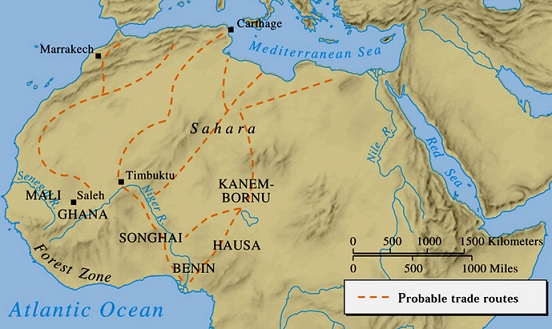
Trans-Saharan trade requires travel across the Sahara (north and south) to reach sub-Saharan Africa from the North African coast, Europe, to the Levant. While existing from prehistoric times, the peak of trade extended from the 8th century until the early 17th century.
The Sahara once had a very different environment. In Libya and Algeria, from at least 7000 BCE, there was pastoralism, herding of sheep and goats, large settlements and pottery. Cattle were introduced to the Central Sahara (Ahaggar) from 4000 to 3500 BCE. Remarkable rock paintings (dated 3500 to 2500 BCE), in places which are currently very dry, portray vegetation and animal presence rather different from modern expectations.
As a desert, Sahara is now a hostile expanse that separates the Mediterranean economy from the economy of the Niger basin. As Fernand Braudel points out that crossing such a zone (especially without mechanized transport) is worthwhile only when exceptional circumstances cause the expected gain to outweigh the cost and danger.
Trade, beginning around 300 CE, was conducted by caravans of camels. These camels would be fattened for a number of months on the plains of either the Maghreb or the Sahel before being assembled into a caravan. According to Ibn Battuta, the explorer who accompanied one of the caravans, the average size per caravan was 1,000 camels; some caravans were as large as 12,000. The caravans would be guided by highly paid Berbers who knew the desert and could ensure safe passage from their fellow desert nomads. The survival of a caravan was precarious and would rely on careful coordination. Runners would be sent ahead to oases so that water could be shipped out to the caravan when it was still several days away, as the caravans could not easily carry enough with them to make the full journey. In the middle of the 14th century Ibn Battuta crossed the desert from Sijilmasa via the salt mines at Taghaza to the oasis of Oualata. A guide was sent ahead and water was brought on a journey of four days from Oualata to meet the caravan.
Later, the powerful Saharan tribes, Berber in origin and later adapting to Muslim and Arab cultures, controlled the channels to western Africa by making efficient use of horse-drawn vehicles and pack animals. The Songhai engaged in a struggle against the Sa'di dynasty of Morocco over the control of the trans Saharan trade, resulting in damage on both sides and a weak Moroccan victory, further strengthening the uninvolved Saharan tribes. Struggles and disturbances continued till the 14th century, by which the Manda merchants were trading with the Hausa, between Lake Chad and the Niger.
600 CE: The Tea-Horse Road
For over a thousand years, the Ancient Tea Route was a trade link from Yunnan, one of the first tea-producing regions. This ancient route winds precipitously for over 6000 miles, through the Hengduan Mountains, a major tea-producing area of China, through Tibet and on to India. In addition to tea, the mule caravans carried salt. Both people and horses carried heavy loads, the tea porters sometimes carrying over 60-90 kg, which was often more than their own body weight in tea.
It is believed that it was through this trading network that tea (typically tea bricks) first spread across China and Asia from its origins in Pu'er county, near Simao Prefecture in Yunnan.
The route earned the name Tea-Horse Road because of the common trade of Tibetan ponies for Chinese tea, a practice dating back at least to the Song dynasty, (960-1279) when the sturdy horses were important for China to fight warring nomads in the north.
2000 CE: The Information Highway
You are on it now. The trade of information and culture continues but at a faster and easier rate.
2020 CE?: The Peace Highway
Hopefully soon with the advent of peace education being readily available to all, we can ride the peace train to paradise.
TOP OF SITE / Table of Contents
This timeline of historic inventions and developments is a chronological list of particularly important or significant technological inventions and the people who created the inventions.
The timeline of historic human achievement is important in relation to peace education for many reasons, but perhaps the most important is to understand how humans have progressed and how long it has taken us to understand and utilize newly discovered knowledge in order to improve our lives and longevity here on mother earth.
Although education has been part of the human condition since the beginning, peace education is relatively new. You may debate this claim but when reviewing history, war has been very natural and common, while peace has been elusive and tends to endure for only short periods of time (golden ages). This needs to change.
The vast majority of people want peace. Most people do not debate this fact. We just have not had the education, leadership and a clear understanding of the benefits of peace and elimination of war in order for humans to develop in this vastly important aspect for the continued success and progress of humanity. Now that the Art of Peace is starting to become part of the human condition, lasting peace can finally become a reality.
The true Age of Enlightenment has finally begun, thanks in large part to the Information Age appearing in the human civilization timeline. Some claim that Peace could not become a reality until we reached the Information Age. But now that we are finally there we can experience the Golden Age of Peace and Prosperity!
Note: Dates for inventions are often controversial. Inventions are often invented by several inventors around the same time, or may be invented in an impractical form many years before another inventor improves the invention into a more practical form. Where there is ambiguity, the date of the first known working version of the invention is used here. For more details and references, visit Wikipedia. This information provided thanks to Wikipedia.
Paleolithic Era: 2.6 Million - 20,000 BCE [Glacial Period]
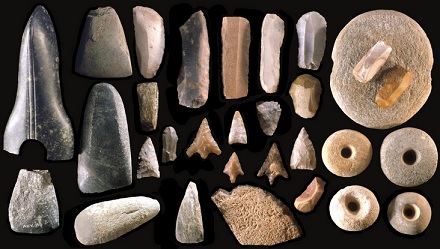

Mesolithic: 20,000 - 10,000 BCE Levant area. 10,000 - 5000 BCE NW Europe [Inter-Glacial Period]
14,000 BCE: Pottery in China.
13,000 BCE: Bullroarer (long distance communication whistle) in Ukraine.
11-10,000 BCE: Agriculture in the Fertile Crescent.
Neolithic: 10,000 - 5000 BCE Levant, 5000 - 2000 BCE NW Europe [Post-Glacial Period]
11-9,000 BCE: Domestication of sheep in Southwest Asia. (followed shortly by pigs, goats and cattle).
9-6,000 BCE: Domestication of rice in Southeast Asia.
9,000 BCE: Constructed stone monument - Gobekli Tepe, in Turkey.
8000-7500 BC: Proto-city - large permanent settlements, Jericho and Catalhoyok.
6500 BCE: Evidence of Lead smelting in Catalhoyok, in Turkey.
6000 BCE: Kiln in Mesopotamia (Iraq).
5000 BCE: Copper smelting in Serbia.
5000 BCE: Lacquer in China.
5000-4500 BCE: Rowing oars in China.
4400 BCE: Copper Sewing needle in Naqada, Egypt.
3630 BCE: Silk garments (sericulture) in China.
3500 BCE: Wheels in Mesopotamia and the Caucasus.
Bronze Age: 3300 - 600 BC
3200 BCE: Sailing in ancient Egypt.
3000 BCE: Writing - Cuneiform in Sumer, Mesopotamia (Iraq).
3000 BCE: Bronze in Mesopotamia.
3000 BCE: Papyrus in Egypt.
3000 BCE: Tin extraction in Central Asia.
3000 BCE: Comb in Persia.
2800 BCE: The Egyptians began trading salt (in the form of salted fish) to Middle Eastern societies like the Phoenicians.
2500 BCE: Docks in Ancient Egypt.
2000 BCE: Musical notation in Sumer.
2000 BCE: The spice trade developed throughout South Asia and Middle East by at least 2000 BCE with cinnamon and black pepper, and in East Asia with herbs and pepper.
2000 BCE: Chariot in Russia and Kazakhstan.
1700 BCE: Alphabet in Phoenicia (Modern Lebanon).
1500 BCE: Seed drill in Babylonia.
1500 BCE: Coins in Lebanon or Lydia.
1500 BCE: Scissors in Ancient Egypt.
Iron Age: 1200 BCE - 500 CE
1200 BCE: Sword in Ancient Egypt.
1000 BCE: Glass in Lebanon.
8th century BCE
750 BCE: False Teeth in Etruria.
750 BCE: Lenses in Ancient Greece.
750-700 BCE: Warship in Phoenicia (Modern Lebanon).
7th century BCE

6th century BCE
515 BC: Crane in Ancient Greece.
With the Greco-Roman trispastos ("three-pulley-crane"), the simplest ancient crane, a single man tripled the weight he could lift than with his muscular strength alone.
A wagonway called Diolkos across the Isthmus of Corinth in Ancient Greece.
5th century BCE
Crank motion (rotary quern) in Celtiberian Spain.
Cast iron in Ancient China: Confirmed by archaeological evidence, the earliest cast iron is developed in China by the early 5th century BCE during the Zhou Dynasty (1122-256 BCE), the oldest specimens found in a tomb of Luhe County in Jiangsu province.
Crossbow in Ancient China and Ancient Greece: In Ancient China, the earliest evidence of bronze crossbow bolts dates as early as the mid-5th century BC in Yutaishan, Hubei.
5th-4th century BC: Traction trebuchet (catapult where several soldiers pull on ropes simultaneously to launch projectiles, rocks) in Ancient China; appeared in the Mediterranean by the 6th century CE.
Before 421 BCE: Catapult in Ancient Greece (incl. Sicily) or Phoenician Carthage.
421 BCE: In Ancient Greece, the gastraphetes (belly-bow crossbow) is created.
480 BCE: Spiral stairs (Temple A) in Selinunte, Sicily.
400 BCE: Mirror in Lebanon.
4th century BCE
Gears in China.
350 BC: Greek hydraulic semaphore system, an optical communication system (fire/steam signals) developed by Aeneas Tacticus.
3rd century BCE
Canal lock (possibly pound lock) in Ancient Suez Canal under Ptolemy II (283-246 BCE) in Hellenistic Egypt.
Valve Tower Sluice in Sri Lanka.
Cam during the Hellenistic period, used in water-driven automata.
Water wheel and Liquid-driven escapement in Hellenistic kingdoms described by Philo of Byzantium (280 - 220 BCE).
Smoke signals were used first used in 200 BCE to send messages along the Great Wall of China.
Papermaking process in Han Dynasty China.
3rd-2nd century BCE: Blast furnace in Ancient China: The earliest discovered blast furnaces in China date to the 3rd and 2nd centuries BCE, although most sites are from the later Han Dynasty.
2nd century BCE
The earliest fore-and-aft rigs, sprit sails, appeared in the Aegean Sea on small Greek craft.
Paper in Han Dynasty China: Although it is recorded that the Han Dynasty (202 BCE - 220 CE) court eunuch Cai Lun (born 50-121 CE) invented the pulp papermaking process and established the use of new raw materials used in making paper, ancient padding and wrapping paper artifacts dating to the 2nd century BCE have been found in China, the oldest example of pulp papermaking being a map from Fangmatan, Gansu.
1st century BCE
Glass blowing discovered on the Lebanese coast.
Segmental arch bridge (e.g. Pont-Saint-Martin or Ponte San Lorenzo) in Italy, Roman Republic.
Arch dam (Glanum Dam) in Gallia Narbonensis, Roman Republic.
150 BCE Astrolabe invented in the Hellenistic world.
Before 71 BCE (possibly 3rd century BCE): Watermill (grain mill) by Greek engineers in Eastern Mediterranean.
Before 25 BCE: Reverse overshot water-wheel by Roman engineers in Rio Tinto, Spain.
1st century CE
The Aeolipile, a simple steam turbine is recorded by Hero of Alexandria.
2nd century
118: Wheelbarrow was found in a tomb at Chengdu, Sichuan province during Han Dynasty China.
132: Seismometer in Han Dynasty China, built by Zhang Heng. It is a large metal urn-shaped instrument which employed either a suspended pendulum or inverted pendulum acting on inertia, like the ground tremors from earthquakes, to dislodge a metal ball by a lever trip device.
Crankshaft in Augusta Raurica, Roman Empire.
Negative numbers in Han Dynasty China.
Law school in Beirut, Roman Empire.
3rd century
Woodblock printing is invented in Han Dynasty China at sometime before 220 CE. This made China become the world first print culture.
Crank and connecting rod (Hierapolis sawmill) in Asia Minor, Roman Empire.
Late 3rd - early 4th century: Turbine in Africa (province), Roman Empire.
4th century
Field mill in Ancient China, first mentioned in the Yezhongji, or 'Record of Affairs at the Capital Ye of the Later Zhao Dynasty' written by Lu Hui describing a field mill built by two engineers, Xie Fei and Wei Mengbian.
Fishing reel in Ancient China: In literary records, the earliest evidence of the fishing reel comes from a 4th-century AD work entitled 'Lives of Famous Immortals'.
347 AD: Oil Wells and Borehole drilling in China. Such wells could reach depths of up to 240 m (790-ft).
4th century: Stirrups in Ancient China: The first dependable representation of a rider with paired stirrups was found in China in a Jin dynasty tomb of about CE 322. The stirrup appeared to be in widespread use across China by CE 477.
4th-5th century: Paddle wheel boat in Roman Empire.
5th century
Horse collar in Southern and Northern Dynasties China: The horse collar as a fully developed collar harness is developed in Southern and Northern Dynasties China during the 5th century CE. The earliest depiction of it is a Dunhuang cave mural from the Chinese Northern Wei Dynasty, the painting dated to 477-499.
5th/6th century: Pointed arch bridge (Karamagara Bridge) in Cappadocia, Eastern Roman Empire.
6th century
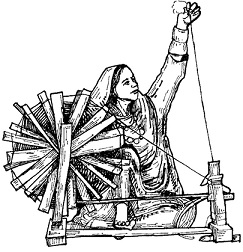
7th century
650 AD: Windmill in Persia.
672 AD: Greek fire in Constantinople, Byzantine Empire: Greek fire, an incendiary weapon likely based on petroleum or naphtha, is invented by Kallinikos, a Lebanese Greek refugee from Baalbek, as described by Theophanes. However, the historicity and exact chronology of this account is dubious, and it could be that Kallinikos merely introduced an improved version of an established weapon.
Banknote in Tang Dynasty China: The banknote is first developed in China during the Tang and Song dynasties, starting in the 7th century. Its roots are in merchant receipts of deposit during the Tang Dynasty (618-907), as merchants and wholesalers desire to avoid the heavy bulk of copper coinage in large commercial transactions.
Porcelain in Tang Dynasty China: True porcelain is manufactured in northern China from roughly the beginning of the Tang Dynasty in the 7th century, while true porcelain was not manufactured in southern China until about 300 years later, during the early 10th century.
8th century
725 AD: Mechanical clock in Tang Dynasty China by Yi Xing and Liang Lingzan.
9th century
9th century: Gunpowder in Tang Dynasty China: Gunpowder is, according to prevailing academic consensus, discovered in the 9th century by Chinese alchemists searching for an elixir of immortality. Evidence of gunpowder's first use in China comes from the Five Dynasties and Ten Kingdoms period (618�907). The earliest known recorded recipes for gunpowder are written by Zeng Gongliang, Ding Du, and Yang Weide in the Wujing Zongyao, a military manuscript compiled in 1044 during the Song Dynasty (960�1279).
Algebra in Syria.
University in Morocco.
Numerical zero in Ancient India: The concept of zero as a number, and not merely a symbol for separation is attributed to India. In India, practical calculations are carried out using zero, which is treated like any other number by the 9th century, even in case of division.
10th century
Fire lance in Song Dynasty China, developed with a tube of bamboo and later in metal that shot a weak gunpowder blast of flame and shrapnel, its earliest depiction is a painting found at Dunhuang. Fire lance is the earliest firearm in the world and one of the earliest gunpowder weapons.
Fireworks in Song Dynasty China: Fireworks first appear in China during the Song Dynasty (960-1279), in the early age of gunpowder.
Fireworks could be purchased from market vendors; these were made of sticks of bamboo packed with gunpowder.
Dry Docks in Song Dynasty China.
11th century
Ambulance by Crusaders in Palestine and Lebanon.
Early versions of the Bessemer process are developed in East Asia.
1088: Movable type in Song Dynasty China: The first record of a movable type system is in the Dream Pool Essays written in 1088, which attributes the invention of the movable type to Bi Sheng.
Koreans then invent metal-type movable printing.
In the 15th century, Johannes Gutenberg invents the modern movable type system in Europe.
12th century
1119: Mariner's compass (wet compass) in Song Dynasty China: The earliest recorded use of magnetized needle for navigational purposes at sea is found in Zhu Yu's book Pingzhou Table Talks of 1119 (written from 1111 to 1117).
The typical Chinese navigational compass was in the form of a magnetic needle floating in a bowl of water. The familiar mariner's dry compass which uses a pivoting needle suspended above a compass-card in a glass box is invented in medieval Europe no later than 1300.
13th century
Soap in Babylonia.
Rocket for military and recreational uses date back to at least 13th century China.
The earliest form of mechanical escapement, the verge escapement (clock gear) in Europe.
1275: Torpedo by Hasan al-Rammah.
1277: Land mine in Song Dynasty China: Textual evidence suggests that the first use of a land mine in history is by a Song Dynasty brigadier general known as Lou Qianxia, who uses an 'enormous bomb' (huo pao) to kill Mongol soldiers invading Guangxi in 1277.
Explosive bomb in Jin dynasty Manchuria: Explosive bombs are used in 1221 by the Jin dynasty against a Song Dynasty city. The first accounts of bombs made of cast iron shells packed with explosive gunpowder are documented in the 13th century in China and are called "thunder-crash bombs", coined during a Jin dynasty naval battle in 1231.
Hand cannon in Yuan Dynasty China: The earliest hand cannon dates to the 13th century based on archaeological evidence from a Heilongjiang excavation. There is also written evidence in the Yuanshi (1370) on Li Tang, an ethnic Jurchen commander under the Yuan Dynasty who in 1288 suppresses the rebellion of the Christian prince Nayan with his "gun-soldiers" or chongzu, this being the earliest known event where this phrase is used.
14th century
Early to Mid 1300s: Multistage rocket in Ming Dynasty China described in Huolongjing by Jiao Yu.
By at least 1326: Cannon in Ming Dynasty China.
Jacob's staff (pole, surveying tool used to measure angles in navigation or construction) invented by Levi ben Gerson.
Naval mine in Ming Dynasty China: Mentioned in the Huolongjing military manuscript written by Jiao Yu (14th to early 15th century) and Liu Bowen (1311-1375), describing naval mines used at sea or on rivers and lakes, made of wrought iron and enclosed in an ox bladder. A later model is documented in Song Yingxing's encyclopedia written in 1637.
15th century
Clock mainspring in Europe.
Rifle in Europe.
1420s: Brace in Flandres, Holy Roman Empire.
1439: Invention of the printing press with movable type by the German Johannes Gutenberg is widely regarded as the most influential event of the modern era.
1450s: The Arquebus (long gun supported on fork or tripod) is invented, possibly in Spain.
1480s: Mariner's astrolabe on Portuguese circumnavigation of Africa.
1494: Double-entry bookkeeping system codified by Luca Pacioli.
16th century
1551: Taqi ad-Din describes a simple steam turbine-like device used in steam jacks.
1560: Floating Dry Dock in Venice, Venetian Republic.
1569: Mercator Projection map created by Gerardus Mercator.
1589: William Lee invents the stocking frame (knitting machine).
1594: Captain John Davis invents the backstaff (navigational instrument that was used to measure the altitude of a celestial body).
1597: Revolver by Hans Stopler.
17th century

18th century

19th century

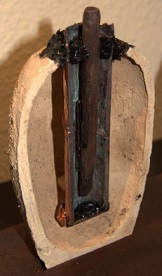
1850: Sir William Armstrong invents the hydraulic accumulator.
1852: Robert Bunsen is the first to use a chemical vapor deposition technique.
1852: Elisha Otis invents the safety brake elevator.
1852: Henri Giffard becomes the first person to make a manned, controlled and powered flight using a dirigible.
1853: Francois Coignet invents reinforced concrete.
1855: James Clerk Maxwell invents the first practical method for color photography, whether chemical or electronic.
1855: The Bessemer process for making steel is patented by Sir Henry Bessemer, with improvements made by others over the following years.
1856: Using the principle of vapour compression, James Harrison produces the world's first practical ice making machine and refrigerator in Geelong, Australia.
1856: William Henry Perkin invents Mauveine, the first synthetic dye.
1857: Heinrich Geissler invents the Geissler tube.
1859: Gaston Plant invents the lead acid battery, the first rechargeable battery.
1860: Joseph Swan produces carbon fibers.
1862: Alexander Parkes invents parkesine, also known as celluloid, the first man-made plastic.
1864: Louis Pasteur invents the pasteurization process.
1865: The Siemens-Martin process for making steel is invented by Carl Wilhelm Siemens and Pierre-mile Martin.
1865: Gregor Mendel publishes 'Versuche eber Pflanzenhybriden' ("Experiments on Plant Hybridization"), effectively founding the science of genetics, though the importance of his work would not be appreciated until later on.
1867: Dynamite, the first safely manageable explosive stronger than black powder, is invented by Alfred Nobel.
1872: Stainless steel is invented by J.E.T. Woods and J. Clark. Harry Brearley was the first to commercialize it.
1873: The rotary kiln is invented by Frederick Ransome.
1873: The Crookes radiometer is invented by the chemist Sir William Crookes as the by-product of some chemical research.
1873: Zenobe Gramme invents the first commercial electrical generator, the Gramme machine.
1874: Gustave Trouve invents the first metal detector.
1876: Four-stroke cycle invented by Nikolaus August Otto.
1876: A patent for the telephone is granted to Alexander Graham Bell. However, other inventors before Bell had worked on the development of the telephone and the invention had several pioneers.
1877: The first working phonograph is invented by Thomas Edison.
1878: Henry Fleuss is granted a patent for the first practical rebreather.
1879: Joseph Swan and Thomas Edison both patent a functional incandescent light bulb. Some two dozen inventors had experimented with electric incandescent lighting over the first three-quarters of the 19th century but never came up with a practical design. Swan's, which he had been working on his since the 1860s, had a low resistance so was only suited for small installations. Edison designed a high-resistance bulb as part of a large-scale commercial electric lighting utility.

20th century
1900s
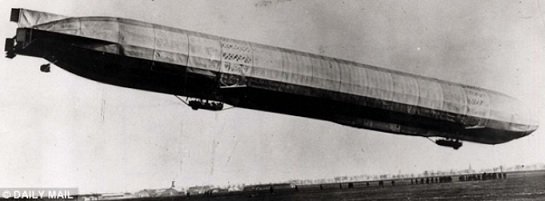
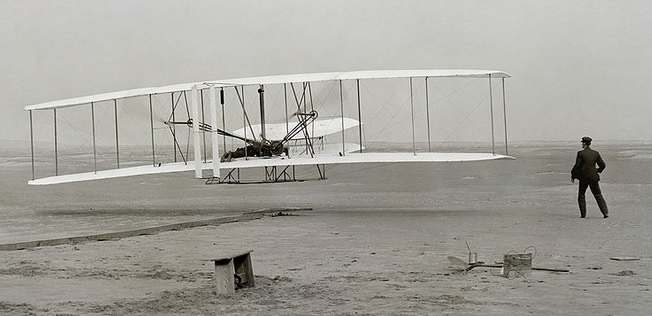
1910s
1911: The cloud chamber, the first particle detector, is invented by Charles Thomson Rees Wilson.
1915: The tank is invented by Ernest Swinton, although the British Royal Commission on Awards recognised a South Australian named Lance de Mole who had submitted a proposal to the British War Office, for a 'chain-rail vehicle which could be easily steered and carry heavy loads over rough ground and trenches' complete with extensive drawings in 1912. Additionally, an Austrian by the name of Gunther Burstyn designed a tank in 1911 and a Captain Levavasseur of the French army proposed a design in 1903.
1916: The Czochralski process, widely used for the production of single crystal silicon, is invented by Jan Czochralski.
1917: The crystal oscillator is invented by Alexander M. Nicholson using a crystal of Rochelle Salt although his priority was disputed by Walter Guyton Cady.
1920s
1925: The Fischer-Tropsch process is developed by Franz Fischer and Hans Tropsch at the Kaiser-Wilhelm-Institut for Kohlenforschung.
1925: By the 1920s, when amplification made television practical, Scottish inventor John Logie Baird employed the Nipkow disk in his prototype video systems. On 25 March 1925, Baird gave the first public demonstration of televised silhouette images in motion, at Selfridge's Department Store in London.
1926: The Yagi-Uda Antenna or simply Yagi Antenna is invented by Shintaro Uda of Tohoku Imperial University, Japan, assisted by his colleague Hidetsugu Yagi. The Yagi Antenna was widely used by the US, British, and Germans during World War II. After the war they saw extensive development as home television antennas.
1927: The quartz clock is invented by Warren Marrison and J.W. Horton at Bell Telephone Laboratories.
1928: Penicillin is first observed to exude antibiotic substances by Nobel laureate Alexander Fleming. Development of medicinal penicillin is attributed to a team of medics and scientists including Howard Walter Florey, Ernst Chain and Norman Heatley.
1928: Frank Whittle formally submitted his ideas for a turbo-jet engine. In October 1929, he developed his ideas further. On 16 January 1930 in England, Whittle submitted his first patent (granted in 1932).
1930s
1930: The Phase-contrast microscopy is invented by Frits Zernike.
1931: The electron microscope is invented by Ernst Ruska.
1933: FM radio is patented by inventor Edwin H. Armstrong.
1935: Nylon, the first fully synthetic fiber is produced by Wallace Carothers while working at DuPont.
1938: Z1 built by Konrad Zuse is the first freely programmable computer in the world.
1938, December: Nuclear fission discovered in experiment by Otto Hahn (Nazi Germany), coined by Lise Meitner (fled to Sweden from Nazi-occupied Austria) and Fritz Strassman (Sweden). The Manhattan Project, and consequently the Soviet atomic bomb project were begun based on this research, as well as the German nuclear energy project, although the latter one declined as its physicists were drafted into Germany's war effort.
1939: G. S. Yunyev or Naum Gurvich invented the electric current defibrillator.
1940s
1941: Polyester is invented by British scientists John Whinfield and James Dickson.
1942: The V-2 rocket, the world's first long range ballistic missile, developed in Nazi Germany during World War II.
July 1945: The atomic bomb is first successfully developed by the United States, the United Kingdom and Canada as a part of the Manhattan Project and swiftly deployed in August 1945 in the atomic bombings of Hiroshima and Nagasaki, effectively causing the end of World War II.
1946: Sir James Martin invents the ejector seat, inspired by the death of his friend and test pilot Captain Valentine Baker in an aeroplane crash in 1942.
1946: Percy Spencer is generally credited with inventing the modern microwave oven after World War II from radar technology developed during the war. Named the "Radarange", it was first sold in 1946.
1947: Holography is invented by Dennis Gabor.
1947: The transistor, used in almost all modern electronic products is invented in December 1947 by John Bardeen and Walter Brattain under the supervision of William Shockley. Subsequent transistors became steadily smaller, faster, more reliable, and cheaper to manufacture, leading to a revolution in computers, controls, and communication.
1947: Floyd Farris and J.B. Clark (Stanolind Oil and Gas Corporation) invents hydraulic fracturing technology.
1948: The first atomic clock is developed at the United States's National Bureau of Standards.
1948: Basic oxygen steelmaking is developed by Robert Durrer. The vast majority of steel manufactured in the world is produced using the basic oxygen furnace; in 2000, it accounted for 60% of global steel output.
1950s
1952: The float glass process is developed by Alastair Pilkington.
1951: First use of nuclear power to produce electricity for households in Arco, Idaho.
1952: The first thermonuclear weapon is developed by the United States of America.
1953: The first video tape recorder, a helical scan recorder, is invented by Norikazu Sawazaki.
1954: Invention of Solar Battery by Bell Telephone scientists, Calvin Souther Fuller, Daryl Chapin and Gerald Pearson capturing the sun's power. First practical means of collecting energy from the sun and turning it into a current of electricity.
1955: The hovercraft is patented by Christopher Cockerell.
1955: The intermodal container is developed by Malcom McLean.
1956: The hard disk drive is invented by IBM.
1957: The first PC used by one person and controlled by a keyboard, the IBM 610 is invented in 1957 by IBM.
1957: The first artificial satellite, Sputnik 1, is built and launched by the Soviet Union.
1958-59: Co-creation of the integrated circuit by Jack Kilby and Robert Noyce.

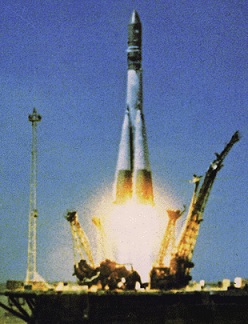
1960: The first functioning laser is invented by Theodore Maiman.
1961: The first human spaceflight was launched by the Soviet Union on 12 April 1961 as a part of the Vostok program, with cosmonaut Yuri Gagarin aboard.
1963: The first electronic cigarette is created by Herbert A. Gilbert. Hon Lik is often credited with its invention as he developed the modern electronic cigarette and was the first to commercialize it.
1966: The hand-held calculator was invented at Texas Instruments, Incorporated (TI).
1969: Apollo 11 was the spaceflight that landed the first two humans on the Moon.
Mission commander Neil Armstrong and pilot Buzz Aldrin, both American, landed the lunar module Eagle on July 20, 1969, at 20:18 UTC. Armstrong became the first to step onto the lunar surface six hours later on July 21 at 02:56:15 UTC; Aldrin joined him about 20 minutes later. They spent about two and a quarter hours together outside the spacecraft, and collected 47.5 pounds (21.5 kg) of lunar material to bring back to Earth. Michael Collins piloted the command module Columbia alone in lunar orbit while they were on the Moon's surface. Armstrong and Aldrin spent just under a day on the lunar surface before rendezvousing with Columbia in lunar orbit.
1969: ARPANET first deployed via UCLA, SRI, UCSB, and The University of Utah.
1970s

1980s



2000s


TOP OF SITE / Table of Contents
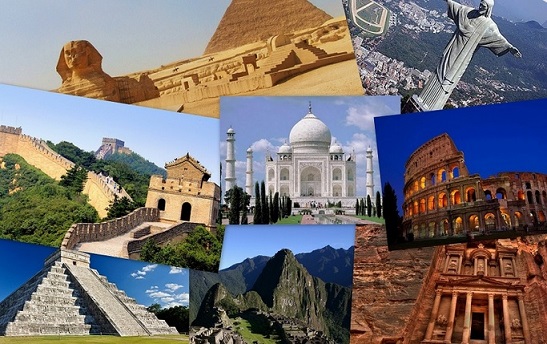
By Matt Rosenberg as viewed on Thoughtco.com, Updated March 03, 2017
The Seven Wonders of the World has historically been a listing of seven sites known to the Ancient Greeks as the most notable locales in their known world.
Since then, many have developed lists of the "modern" Seven Wonders of the World. The only list that really stands out and has stood the test of time for more than a decade is the Seven Wonders of the Modern World, developed by the American Society of Civil Engineers.
The Original Seven Wonders of the World:
The Colossus of Rhodes: A statue of the Greek sun god Helios. Built in the city of Rhodes in 280 BC, the nearly 100-foot-high statue was destroyed in an earthquake in 226 B.C.
The Great Pyramid of Giza: With construction that ended around 2560 B.C., the pyramid is the oldest of the original seven wonders. The massive structure still stands in Egypt.
The Hanging Gardens of Babylon: With little historical documentation, not much is known of the Hanging Gardens of Babylon. They may be mythical, they may have been built by king Nebuchadnezzar II around 600 B.C., or they may have been located in the Assyrian city of Nineveh by king Sennacherib around 700 B.C.
The Lighthouse of Alexandria: Built around 280 B.C., the Lighthouse of Alexandria stood around 400 feet tall and was the tallest building in the world for centuries. It was damaged by several earthquakes, and in 1480, its ruins were used to construct the Citadel of Qaitbay, a fortress that still stands on Pharos Island.
The Mausoleum at Halicarnassus: Located in today's Bodrum, Turkey, the Mausoleum at Halicarnassus was built as the tomb of Mausolus around 350 B.C. The structure was destroyed by a series of earthquakes between the 12th and 15th centuries.
The Statue of Zeus at Olympia: Built sometime around 435 B.C. by the Greek sculptor Phidias, the statue stood over 40 feet tall and represented Zeus on a cedar throne. The work was ornamented with gold and ivory. The statue was lost or destroyed sometime in the 5th century, although the exact nature of the work's loss remain unknown.
The Temple of Artemis at Ephesus: Located in eastern Turkey, the Temple of Artemis's age is unknown, for it was rebuilt several times. The third temple, and the one referenced by the Greeks as a wonder of the world, was constructed beginning in 323 B.C. The structure was destroyed by the Goths in 268 A.D.
The Seven Wonders of the Modern World:
Channel Tunnel: The 50 kilometer tunnel running under the English Channel to connect England to France.
CN Tower: The 533 meter-high needle-like tower in downtown Toronto, Canada. At the time of its construction in 1976, it was the tallest building in the world.
Empire State Building: The iconic skyscraper in Manhattan, New York City. The 102-story building was the tallest in the world from 1931 to 1970.
Golden Gate Bridge: San Francisco's iconic bridge first opened in 1937 and was the world's longest suspension bridge for nearly 30 years.
Itaipu Dam: Located on the border of Brazil and Paraguay, the Itaipu Dam is the second largest in the world for energy generation.
Netherlands North Sea Protection Works: A massive series of dams, levees, locks, and barriers that protect the low-lying Netherlands from the sea.
Panama Canal: Completed in 1917, the massive engineering project connects the Pacific and Atlantic oceans. A new and larger canal opened in 2016.
Seven Natural Wonders of the World:
In 1997, CNN announced a listing of the Seven Natural Wonders of the World:
Grand Canyon
The Great Barrier Reef
The Harbor at Rio de Janeiro
Mt. Everest
Northern Lights
Paricutin Volcano
Victoria Falls
The "New" Seven Wonders of the World:
On July 7, 2007 (7-7-07) an organization announced a "new" set of the Seven Wonders of the World based on online voting from around the world:
Chichen Itza, Mexico - Mayan City
Christ Redeemer, Brazil - Large Statue
The Great Wall, China
Machu Picchu, Peru
Petra, Jordan - Ancient City
The Roman Colosseum, Italy
The Taj Mahal, India
Ultimately, any list of the Seven Wonders of the World is subjective, based on the individual or group of individuals who developed the list. No one list is authoritative, even the original Ancient list. But looking at and learning from these lists and how they change over time can tell us a lot about our cultural values and accomplishments.
Other suggested lists include the 7 Wonders of the Medieval World:
Many of the structures on these lists were built much earlier than the Medieval Ages but were well known. Typically representative are:
Catacombs of Kom el Shoqafa
Colosseum
Great Wall of China
Hagia Sophia
Leaning Tower of Pisa
Porcelain Tower of Nanjing
Stonehenge
Other sites sometimes included on such lists:
Cairo Citadel
Cluny Abbey
Ely Cathedral
Taj Mahal
USA Today Newspaper's 7 Wonders chosen by 6 judges in 2006:
1 Potala Palace, Lhasa, Tibet, China
2 Old City of Jerusalem, Jerusalem
3 Polar ice caps, Polar regions
4 Papahanaumokuakea Marine National Monument, Hawaii, United States
5 Internet, Earth
6 Mayan ruins, Yucatan Peninsula, Mexico
7 Great Migration of Serengeti and Masai Mara, Tanzania and Kenya
8 Grand Canyon (viewer-chosen eighth wonder), Arizona, United States
7 Natural Wonders by CNN:
Aurora
Grand Canyon
Great Barrier Reef
Harbor of Rio de Janeiro
Mount Everest
Paracutin volcano
Victoria Falls
New7Wonders of the World In 2001 an initiative was started by the Swiss corporation New7Wonders Foundation to choose the New7Wonders of the World from a selection of 200 existing monuments. Twenty-one finalists were announced January 1, 2006. Egyptians were not happy that the only surviving original wonder, the Great Pyramid of Giza, would have to compete with the likes of the Statue of Liberty, the Sydney Opera House, and other landmarks, calling the project absurd. In response, Giza was named an honorary Candidate. The results were announced on July 7, 2007, in Lisbon, Portugal:
Great Wall of China, Since 7th century BC, China
Petra, c. 100 BC, Jordan
Christ the Redeemer, Opened October 12, 1931, Brazil
Machu Picchu, c. AD 1450, Peru
Chichen Itza, c. AD 600, Mexico
Colosseum, Completed AD 80, Italy
Taj Mahal, Completed c. AD 1648, India
Great Pyramid of Giza (Honorary Candidate), Completed c. 2560 BC, Egypt
New7Wonders of Nature (2007-11), a contemporary effort to create a list of seven natural wonders chosen through a global poll, was organized by the same group as the New7Wonders of the World campaign:
Iguazu Falls
Halong Bay
Jeju Island
Puerto Princesa Underground River
Table Mountain
Komodo Island
Amazon Rainforest
Seven Wonders of the Solar System:
In a 1999 article, Astronomy magazine listed the Seven Wonders of the Solar System. This article was later made into a video.
Enceladus, a moon of Saturn
The Great red spot of Jupiter
The Asteroid belt
The surface of the Sun
The Oceans of Earth
The Rings of Saturn
Olympus Mons on Mars
TOP OF SITE / Table of Contents
Past and present wars:Human society is continuously shaped by social, political, religious and technological developments. Some societies reject these developments and others embrace them. Normally, the rejection or acceptance is silent and smooth. At times, however, the process is violent and leads to conflict or revolution. According to Samuel Huntington, a revolution is a rapid, fundamental, and violent domestic change in the dominant values and myths of a society, in its institutions, social structure, leadership, and government activity and policies.
Timeline and civilizations/nations involved.
Study Questions - Reasons for each major war, atrocities committed, after effects, resolutions created, penalties imposed on perpetrators?
How has war shaped the history of humanity. What can we learn from past wars? Can wars be averted / shortened in the future?
Timeline of Wars - before 1BC:
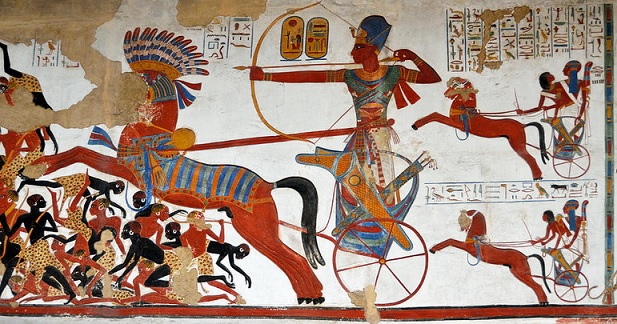
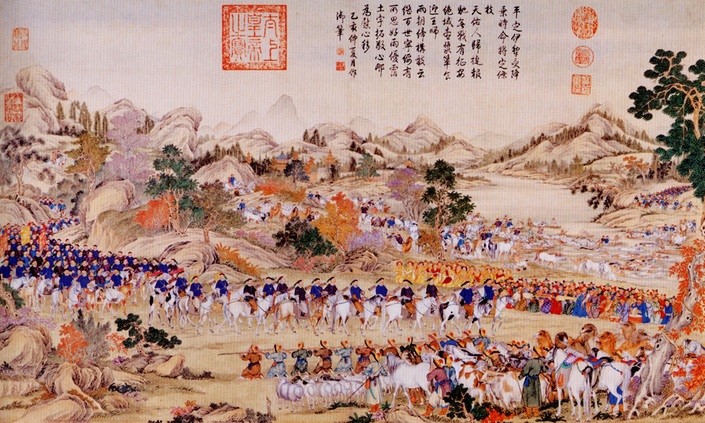
43 96 Roman conquest of Britain.
60 61 Boudica's Uprising.
184 205 Yellow Turban Rebellion.
533 534 Vandal War.
772 804 Saxon Wars.
Timeline of Wars: 1 - 1199 CE:
1066 1088 Norman conquest of England.
1096 1099 First Crusade.
1145 1149 Second Crusade.
1189 1192 Third Crusade.
Timeline of Wars - 1200 - 1299:
1202 1204 Fourth Crusade.
1206 1324 Mongol wars and conquests.
1213 1221 Fifth Crusade.
1215 1217 First Barons' War (England).
1248 1254 Seventh Crusade.
1270 1270 Eighth Crusade.
1271 1272 Ninth Crusade.
1296 1328 First War of Scottish Independence .
Timeline of Wars - 1300 - 1399:
1323 1328 Peasant revolt in Flanders.
1326 1332 Polish Teutonic War.
1337 1453 Hundred Years' War.
Timeline of Wars - 1400 - 1499:
1419 1434 Hussite Wars.
1425 1454 Wars in Lombardy.
1454 1466 Thirteen Years' War.
1455 1485 Wars of the Roses.
Timeline of Wars - 1500 - 1599:
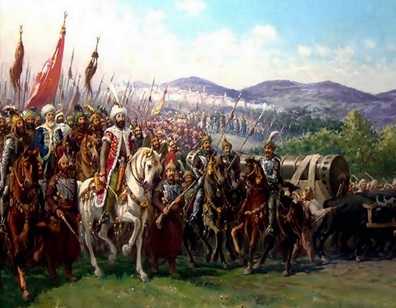
Timeline of Wars - 1600 - 1699:
1600 1611 Polish Swedish War.
1602 1661 Dutch Portuguese War.
1618 1648 Thirty Years' War.
1634 1638 Pequot War.
1635 1659 Franco-Spanish War.
1640 1701 Beaver Wars (Iroquois).
1642 1646 First English Civil War.
1648 1649 Second English Civil War.
1649 1651 Third English Civil War.
1652 1654 First Anglo-Dutch War.
1654 1660 Anglo-Spanish War.
1655 1655 Peach Tree War (Susquehannock).
1675 1676 King Philip's War.
1683 1699 Great Turkish War.
1688 1697 Nine Years' War including King William's War.
1689 1692 Jacobean Rising in Scotland.
Timeline of Wars - 1700 - 1799:
1700 1721 Great Northern War.
1711 1715 Tuscarora War.
1712 1716 First Fox War.
1715 1717 Yamasee War.
1721 1763 Chickasaw Wars.
1728 1733 Second Fox War.
1739 1748 War of Jenkins' Ear.
1744 1748 King George's War.
1754 1763 French and Indian War (Part of the Seven Years' War).
1756 1763 Seven Years' War.
1758 1761 Anglo-Cherokee War.
1763 1766 Pontiac's War.
1775 1783 American Revolutionary War.
1776 1794 Chickamauga Wars.
1779 1783 Anglo-Spanish War.
1785 1795 Northwest Indian War.
1789 1799 The French Revolution.
1791 1804 Haitian Revolution.
Timeline of Wars - 1800 - 1899:
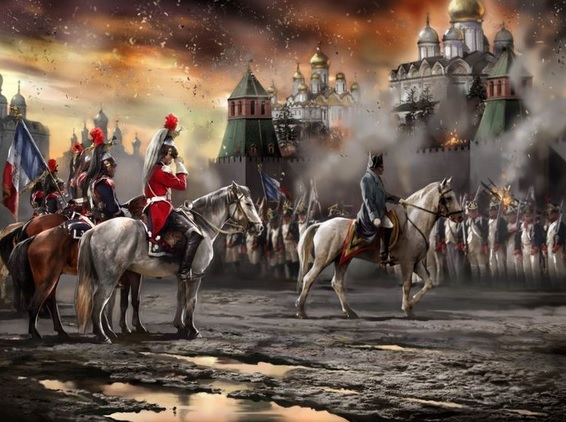
Timeline of Wars - 1900 - 1999:
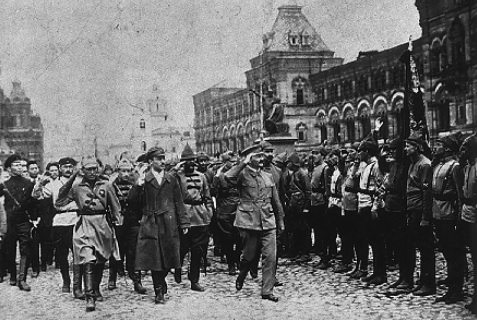

Timeline of Wars - 2000 - To Date:
2001 War in Afghanistan.
2003 2014 Iraq War.
2006 War in Somalia.
2008 2009 Gaza War.
2011 Syrian Civil War.
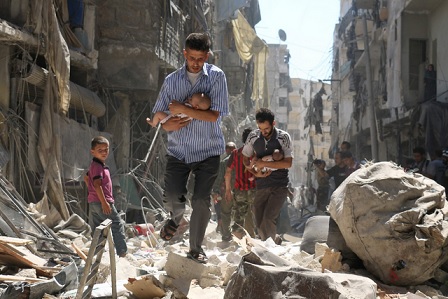
- Above timelines courtesy of Dates and Events.org - datesandevents.org/events-timelines/24-timeline-of-war.htm & Wikipedia.
TOP OF SITE / Table of Contents
These figures of one million or more possible deaths include the deaths of civilians from diseases, famine, etc., as well as deaths of soldiers in battle and massacres and genocide. Where only one estimate is available, it appears in both the low and high estimates. It is important to understand that natural disasters have caused incredibly large death tolls but have not been as devastatingly cruel as humans have been to each other.
Average estimate - Lowest estimate - Highest estimate - Event - Location - Start - End - Duration - Notes
74,330,344 - 65,000,000 - 85,000,000 - World War II - Worldwide - 1939 to 1945 - 6 years and 1 day
World War II casualties (includes worldwide Holocaust and concentration camps deaths). Estimates include the Second Sino-Japanese War.
44,721,360 - 20,000,000 - 100,000,000 - Taiping Rebellion - China - 1851 to 1864 - 14 years
Inspired by Hong Xiuquan; see also Dungan Revolt, a Muslim rebellion.
37,947,332 - 36,000,000 - 40,000,000 - Three Kingdoms War - China - 184 to 280 - 96 years
End of the Han dynasty
34,641,016 - 30,000,000 - 40,000,000 - Mongol conquests - Eurasia - 1206 to 1368 - 163 years
Mongol Empire, Destruction under the Mongol Empire
34,047,026 - 8,400,000 - 138,000,000 - European colonization of the Americas - Americas - 1492 to 1691 - 199 years
Death toll estimates vary due to lack of consensus as to the demographic size of the native population pre-Columbus
25,000,000 - 25,000,000 - 25,000,000 - Qing dynasty conquest of the Ming dynasty - China - 1618 to 1683 - 65 years
Qing dynasty
20,770,000 - 20,770,000 - 20,770,000 - Dungan Revolt - Gansu and Shaanxi, China - 1862 to 1877 - 15 years
Du Wenxiu Rebellion
18,384,776 - 13,000,000 - 36,000,000 - An Lushan Rebellion - China - 755 to 763 - 9 years
Medieval warfare
17,748,239 - 15,000,000 - 21,000,000 - World War I - Worldwide - 1914 to 1918 - 4 years, 3 months, 1 week
World War I casualties. Does not include worldwide Spanish flu deaths.
17,000,000 - 17,000,000 - 17,000,000 - Conquest of Timur - Central, East and South Asia - 1400s to 1500s - 35 years
Killed 5% of the world's population at the time.
8,000,000 - 8,000,000 - 11,692,000 - Chinese Civil War - China - 1927 to 1949 - 22 years
6,708,204 - 5,000,000 - 9,000,000 - Russian Civil War - Russia 1917 to 1921 - 5 years
Russian Revolution
8,000,000 - 3,000,000 - 11,500,000 - Thirty Years' War - Holy Roman Empire, Europe - 1618 to 1648 - 30 years
Initially a religious war between Catholics and Protestants, became a general European political war. It was one of the longest and most destructive conflicts in European history.
4,949,747 - 3,500,000 - 7,000,000 - Napoleonic Wars - Europe, Atlantic, Pacific and Indian Ocean - 1803 to 1815 - 13 years
Napoleonic Wars casualties
4,582,576 - 3,000,000 - 7,000,000 - Yellow Turban Rebellion - China - 184 to 205 - 22
Part of Three Kingdoms War
3,674,235 - 2,500,000 - 5,400,000 - Second Congo War - Democratic Republic of the Congo - 1998 to 2003 - 6 years
First Congo War
2,828,427 - 2,000,000 - 4,000,000 - French Wars of Religion - France - 1562 to 1598 - 37 years
Largely a religious war between Catholics and Huguenots (French Calvinist Protestants)
2,754,995 - 2,300,000 - 3,300,000 - Hundred Years' War - Western Europe - 1337 to 1453 - 116 years
Edwardian War (1337-1360), Caroline War (1369-1389), Lancastrian War (1415-53)
1,750,000 - 1,000,000 - 3,000,000 - Nigerian Civil War - Nigeria - 1966 to 1970 - 4 years
Ethnic cleansings of the Igbo people followed by Civil War.
1,750,000 - 1,000,000 - 3,000,000 - Crusades - Holy Land, Europe - 1095 to 1291 - 197 years
Christian military excursions against the Muslim conquests.
1,735,000 - 1,500,000 - 2,000,000 - Shaka's conquests - Southern Africa - 1816 to 1828 - 13 years
Ndwandwe-Zulu War
1,735,000 - 1,500,000 - 2,000,000 - War in Afghanistan - Afghanistan - 1979 to 2000 - 22 years
Soviet-Afghan War, Taliban era estimates through 1999 (2M) and 2000 (1.5M and 2M).
1,549,193 - 800,000 - 3,000,000 - Vietnam War - Southeast Asia - 1955 to 1975 - 21 years
Cold War and First Indochina War
1,520,691 - 1,250,000 - 1,850,000 - Punic Wars - Mediterranean - 264 to 146 BCE - 118 years
Carthage, Roman Republic
1,414,214 - 1,000,000 - 2,000,000 - Second Sudanese Civil War - Sudan - 1983 to 2005 - 23 years
First Sudanese Civil War
1,341,641 - 1,200,000 - 1,500,000 - Warring States period - China - 475 to 221 BCE - 255 years
1,200,000 - 1,200,000 - 1,200,000 - Korean War - Korean Peninsula - 1950 to 1953 - 4 years
Categorized as part of the Cold War.
1,095,445 - 600,000 - 2,000,000 - Soviet-Afghan War - Afghanistan - 1980 to 1988 - 9 years
Sometimes categorized as a proxy war during the Cold War.
1,000,000 - 1,000,000 - 1,000,000 - Japanese invasions of Korea - Korea - 1592 to 1598 - 7 years
1,000,000 - 890,000 - 1,000,000 - Du Wenxiu Rebellion - China - 1856 to 1873 - 18 years
1,000,000 - 500,000 - 2,000,000 - Mexican Revolution - Mexico, United States - 1911 to 1920 - 10 years
Includes Pancho Villa's raids and the Columbus Raid.
948,683 - 900,000 - 1,000,000 - Gallic Wars - France - 58 - 50 BCE - 9 years
Roman Empire
800,000 - 650,000 - 1,000,000 - American Civil War - Southeastern United States - 1861 to 1865 - 4 Years
United States civil war, abolishment of slavery.
724,569 - 350,000 - 1,500,000 - Algerian War - Algeria - 1954 to 1962 - 7 Years, 4 Months, 2 Weeks, and 4 Days
707,107 - 500,000 - 1,000,000 - Spanish Civil War - Spain - 1936 to 1939 - 4 years
600,000 - 300,000 - 1,200,000 - Paraguayan War - South America - 1864 to 1870 - 7 years
Military history of South America, Francisco Solano Lopez and Luis Alves de Lima e Silva, Duke of Caxias.
585,423 - 272,000 - 1,260,000 - War on Terror - Worldwide 2001 to 2013 - 12 years
Includes Iraq War, War in Afghanistan (2001-present), and War in North-West Pakistan.
564,041 - 289,220 - 1,100,000 - Iran-Iraq War - Iran-Iraq border - 1980 to 1988 - Over 8 Years
Iran claims: 123,220 Killed in Action + 11,000 civilians, Iraq claims: 105,000 Killed in Action + 50,000 in Kurdish Genocide. Others claim 600,000 Iranians killed and 500,000 Iraqis
279,285 - 26,000 - 3,000,000 - Bangladesh Liberation War - East Pakistan - 1971 to 1971 - 1 year
See Bangladeshi Genocide casualties.
Rank - Death toll (estimate) - Event - Location - Date
1. 1,000,000-4,000,000 - 1931 China floods - China - July 1931
2. 900,000-2,000,000 - 1887 Yellow River flood - China - September 1887
3. 830,000 - 1556 Shaanxi earthquake - China - January 23, 1556
4. 300,000 - 1839 India cyclone - India - November 26, 1839
4. 300,000 - 1737 Calcutta cyclone - India - October 7, 1737
5. 280,000 - 2004 Indian Ocean earthquake and tsunami - Indian Ocean - December 26, 2004
6. 273,400[6] 1920 Haiyuan earthquake - China - December 16, 1920
7. 250,000-500,000 - 1970 Bhola cyclone - East Pakistan (now Bangladesh) - November 13, 1970
7. 250,000-300,000 - 526 Antioch earthquake - Byzantine Empire (now Turkey) - May 526
8. 242,000-655,000 - 1976 Tangshan earthquake - China - July 28, 1976
9. 230,000 - 1138 Aleppo earthquake - Zengid dynasty (now Syria) - October 11, 1138
10. 229,000 - Typhoon Nina-contributed to Banqiao Dam failure - China - August 7, 1975
Note: Some of these famines may be caused or partially caused by humans.
Rank - Death toll - Event - Location - Date
1. 15,000,000-43,000,000 - Great Chinese Famine - China - 1958-1961
2. 25,000,000 - Chinese Famine of 1907 - China - 1907
3. 13,000,000 - Northern Chinese Famine of 1876-1879 - China - 1876-1879
4. 11,000,000 - Doji bara famine or Skull famine - India - 1789-1792
5. 10,000,000 - Bengal famine of 1770, incl. Bihar & Orissa - India - 1769-1771
6. 6,000,000+ - Indian Famine - British India - 1896-1902
7. 7,500,000 - Great European Famine - Europe (all) - 1315-1317
8. 7,000,000-10,000,000 - Soviet famine of 1932-1933 (Holodomor in Ukraine) - Soviet Union - 1932-1934
9. 5,250,000 - Indian Great Famine of 1876-78 - India - 1876-1878
10. 5,000,000 - Chinese Famine of 1936 - China - 1936
10. 5,000,000 - Russian famine of 1921 - Russia, Ukraine - 1921-1922
Death toll (estimate) - Location - Date - Name - Disease
75,000-100,000 - Greece - 429-426 BCE - Plague of Athens - unknown, possibly typhus
5 million; 30% of population in some areas - Europe, Western Asia, Northern Africa - 165-180 CE - Antonine Plague - unknown, symptoms similar to smallpox
25-50 million; 40% of population - Europe 541-542 CE - Plague of Justinian - plague
75-200 million; 30-60% of population - Europe, Asia and North Africa - 1346-1350 CE - Black Death - plague, Yersinia pestis
5-15 million (80% of population) - Mexico - 1545-1548 - Cocoliztli - viral hemorrhagic fever
2-2.5 million (50% of population) - Mexico - 1576 - Cocoliztli epidemic of 1576 - viral hemorrhagic fever
280,000 - Italy - 1629-1631 - Italian plague of 1629-1631 - plague
100,000 - England - 1665-1666 - Great Plague of London - plague
>100,000 - Asia, Europe - 1816-1826 - first cholera pandemic - cholera
>100,000 - Asia, Europe, North America - 1829-1851 - second cholera pandemic - cholera
1,000,000 - Russia - 1852-1860 - third cholera pandemic - cholera
>800,000 - Europe, Asia, Africa - 1899-1923 - sixth cholera pandemic - cholera
75,000,000 - worldwide - 1918-1920 - 1918 flu pandemic - Spanish Flu influenza
2,000,000 - worldwide - 1957-1958 - Asian flu - influenza
>30,000,000 - Congo Basin - 1960-present - HIV/AIDS pandemic - HIV/AIDS
1,000,000 - worldwide - 1968-1969 - Hong Kong flu - influenza
2023 million BCE - An impact crater approximately 300km in diameter is created in modern-day Vredefort, South Africa.
1850 million BCE - An impact crater approximately 200km in diameter is created in modern-day Sudbury, Ontario, Canada.
600 million BCE - An impact crater approximately 60km in diameter is created in modern-day Beaverhead, Montana, USA.
580 million BCE - An impact crater approximately 85-90km in diameter is created in modern-day Acraman, South Australia.
400 million BCE - An asteroid impacts the Earth in modern-day central Ukraine, leaving create approximater 4 miles in diameter, 2000 feet deep.
368 million BCE - An impact crater approximately 55km in diameter is created in modern-day Siljan Ring, Sweden.
360 million BCE - An impact crater approximately 54km in diameter is created in modern-day Charlevoix, Quebec, Canada.
247 million BCE - An impact crater approximately 40km in diameter is created in modern-day Araguainha, Brazil.
220 million BCE - An impact crater approximately 40km in diameter is created in modern-day Saint Martin, Manitoba, Canada.
214 million BCE - An impact crater approximately 100km in diameter is created in modern-day Manicougan, Quebec, Canada.
175 million BCE - An impact crater approximately 80km in diameter is created in modern-day Puchezh-Katunki, Russia.
145 million BCE - An impact crater approximately 70km in diameter is created in modern-day Morokwena, South Africa.
144 million BCE - An impact crater approximately 40km in diameter is created in modern-day Mjalnir, Norway.
128 million BCE - An impact crater approximately 55km in diameter is created in modern-day Tookoonooka, Queensland, Australia.
65 million BCE - A comet or asteroid with estimated diameter 10-12km impacts the Earth at 20-60km per second in what is now Chicxulub in the Yucatan Peninsula of Mexico, creating a crater of about 180-300km diameter and 30-50km deep. The crater location is discovered in the late 1970s, and is suspected to have had a role in the demise of dinosaurs.
Dinosaur Extinction - National Geographic:
"Sixty-five million years ago, the last of the non-avian dinosaurs went extinct. So too did the giant mosasaurs and plesiosaurs in the seas and the pterosaurs in the skies. Plankton, the base of the ocean food chain, took a hard hit. Many families of brachiopods and sea sponges disappeared. The remaining hard-shelled ammonites vanished. Shark diversity shriveled. Most vegetation withered. In all, more than half of the world's species were obliterated.
The cause of the mass extinction that marks the end of the Cretaceous and the beginning of the Paleogene is a scientific mystery. The extinction wiped out the dinosaurs while most mammals, turtles, crocodiles, salamanders, and frogs survived. Birds escaped. So did snails, bivalves, sea stars (starfish), and sea urchins. Even hardy plants able to weather climate extremes fared okay.
Scientists tend to huddle around one of two hypotheses that may explain the Cretaceous extinction: an extraterrestrial impact, such as an asteroid or comet, or a massive bout of volcanism. Either scenario would have choked the skies with debris that starved the Earth of the sun's energy, throwing a wrench in photosynthesis and sending destruction up and down the food chain. Once the dust settled, greenhouse gases locked in the atmosphere would have caused the temperature to soar, a swift climate swing to topple much of the life that survived the prolonged darkness.
Asteroid or Volcanoes?
The extraterrestrial impact theory stems from the discovery that a layer of rock dated precisely to the extinction event is rich in the metal iridium. This layer is found all over the world, on land and in the oceans. Iridium is rare on Earth but it's found in meteorites at the same concentration as in this layer. This led scientists to postulate that the iridium was scattered worldwide when a comet or asteroid struck somewhere on Earth and then vaporized. A 110-mile-wide (180-kilometer-wide) crater carved out of Mexico's Yucatan Peninsula, called Chicxulub, has since been found and dated to 65 million years ago. Many scientists believe the fallout from the impact killed the dinosaurs.
But Earth's core is also rich in iridium, and the core is the source of magma that some scientists say spewed out in vast, floodlike flows that piled up more than 1.5 miles (2.4 kilometers) thick over 1 million square miles (2.6 million square kilometers) of India. This bout of volcanism has also been dated to about 65 million years ago and would have spread the iridium around the world, along with sunlight-blocking dust and soot and greenhouse gases.
Both hypotheses have merit. Some scientists think both may have contributed to the extinction, and others suggest the real cause was a more gradual shift in climate and changing sea levels. Regardless of what caused the extinction, it marked the end of Tyrannosaurus rex's reign, and opened the door for mammals to rapidly diversify and evolve into newly opened niches."
Perhaps the massive asteroid impact is directly related to the volcanoes that ocurred on the opposite side of the planet due to shock waves? If you look in the fossil record all over the world, you will see a layer that is known as the K-T Boundary, referring to the boundary between the Cretaceous and Tertiary periods in geologic history.
57 million BCE - An impact crater approximately 65km in diameter is created in modern-day Kara, Russia.
50 million BCE - An impact crater approximately 45km in diameter is created in modern-day Montagnais, Nova Scotia, Canada.
35 million BCE - An asteroid about 7-10km in diameter impacts the Earth in modern-day Popigai, Siberia, Russia, leaving an impact crater 80-100km in diameter, 10km deep.
35 million BCE - A space object hits the Earth, creating the "Toms Canyon" crater in modern-day New Jersey, USA.
34 million BCE - A space object impacts Earth creating a 85km diameter, 1.6km deep crater in modern-day Chesapeake Bay crater in Virginia, USA.
15 million BCE - A space object impacts at modern day Nordlinger Ries in Germany. What makes Nordlingen unique is that the city sits perfectly in the crater left by the meteor. While the crater is roughly 25 kilometers across, the medieval founders built the walls of the city where the 1 kilometer long meteorite sat millennia earlier. Remnants of the rock can still be found literally within the walls of the city.
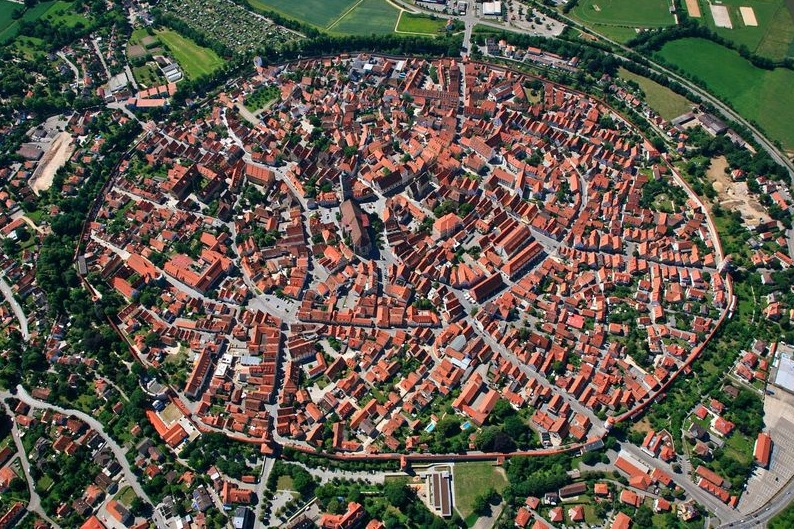
3.3 million BCE - An impact in Argentina precedes numerous extinctions and a global cooling trend.
1.3 million BCE - A space object impacts Earth creating modern-day Lake Bosumtwi Crater in Ghana.
768,000 BCE - An asteroid or comet impacts Earth in modern-day Indo-China.
300,000 BCE - An iron meteorite impacts modern-day Kimberley in north Western Australia (Wolfe Creek Crater).
48,000 BCE - A 50,000 ton iron meteorite hits Earth at modern-day Arizona, USA, leaving crater 1.2km wide, 180m deep, Earth's largest impact crater with associated meteorite fragments.
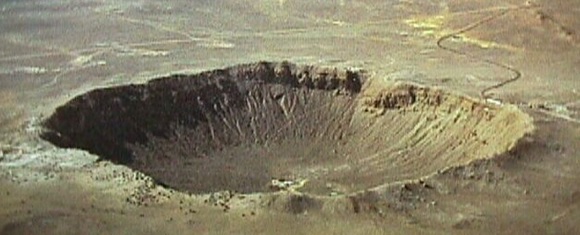
The smooth surface melted during its blazing entry into the atmosphere, while the pits formed on the Earth's surface. The Willamette Meteorite weighs about 32,000 pounds (15,000 kg). It is classified as a type III iron meteorite, being composed of over 91% iron and 7.62% nickel, with traces of cobalt and phosphorus. The meteorite is currently on display at the American Museum of Natural History in New York City, which acquired it in 1906.
Iron meteorites form when large enough asteroids have had molten interiors catastrophically collide with other asteroids. These huge collisions blast out material from the molten iron core of the asteroid on orbits that reach Earth after millions of years.
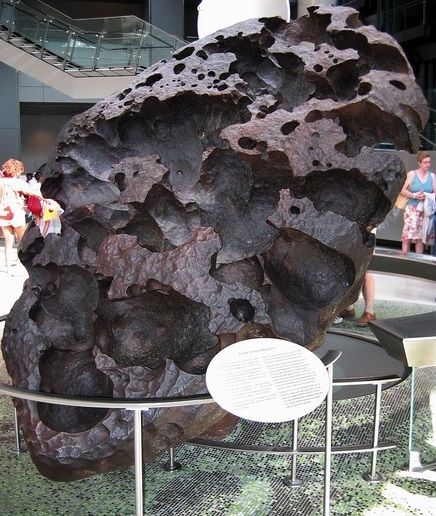
9000 BCE - Woolly mammoths cease to live on Earth.
7500 BCE - Ice age of Earth finally ends on all continents.
3195 BCE - Postulated date of bombardment of Earth by large meteoroids, fireballs, and resulting atmospheric dust-veil as evidenced of a cold period in narrow tree rings, and other world events at the time. Human fatalities unknown, but likely enormous.
3123 BCE - In the Otz Valley (modern-day Germany), a mile-long asteroid destroys city of Sodom, and thousands of deaths, among the devastation of over one million square kilometres (386,000 square miles), according to computer modeling and also interpretations of a 700 BCE clay tablet (the Planisphere) copy of a Sumerian astrologer's account. Although the asteroid strike / disintegration is not necessarily disputed, the account of Sodom's related destruction is questionable.
3000 BCE (approximate) - An iron meteorite creates craters in modern-day northern territory of Australia, possibly witnessed by Aborigines.
2345 BCE (approximate) - Suspected date of a fireball bombardment in Levant area of modern-day Tell Leilan in northern Syria, as evidenced by tree-ring chronologies and microscopic glass spherules.
2300 BCE (approximate) - In Southern Iraq, a meteor strikes leaving a 2-mile wide circular crater.
1628 BCE (approximate) - Mount Thera volcano erupts, possibly in connection with a meteoric impact with global disruptions of weather. The Minoan eruption of Thera, also referred to as the Thera eruption or Santorini eruption, was a major catastrophic volcanic eruption with a Volcanic Explosivity Index (VEI) of 6 or 7 and a dense-rock equivalent (DRE) of 60 km3 (14 cu mi). The eruption was one of the largest volcanic events on Earth in recorded history. It devastated the island of Thera (now called Santorini), including the Minoan settlement at Akrotiri and communities and agricultural areas on nearby islands and the coast of Crete with a related earthquake or tsunami.
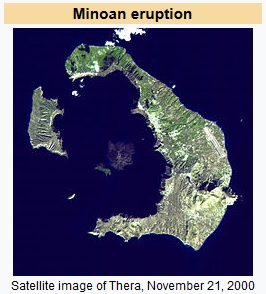
1159 BCE - A series of meteoric impacts of overhead explosions in the Eastern Mediterranean region may explain the collapse of the Shang and Mycenean cultures, the destruction of many major sites, and the transition from the Late Bronze Age to the Early Iron Age.
June 4, 780 BCE - First total solar eclipse reliably recorded by Chinese.
June 15, 763 BCE - Assyrians record total solar eclipse event on clay tablet.
March 19, 721 BCE - First recorded lunar eclipse, seen in Babylon.
April 22, 687 BCE - Chinese record a meteor shower in Lyra.
472 BCE - A great fall of black dust is reported in Constantinople, which may have been the result of a high-altitude meteor airburst.
207 BCE (approximate) - A 1.1km comet impacts southeastern Bavaria (modern day Germany), probably breaking up 70km above the Earth's surface, creating a field of meteorites and impact craters. At about the same time Roman authors write about showers of stones falling from the skies, terrifying the populace.
44 BCE (approximate) - A daylight comet passing close to the Earth creates a dust veil over Italy, possibly from large fragment impacts.
12 BCE - A daytime meteor shower, possibly Zeta Perseid observed in China.
79 CE - Mount Vesuvius erupts, burying the cities of Pompeii, Herculaneum and Stabiae in volcanic ash.
1490 - About 10,000 people die in the Chinese city of Chi1ing-yang when an asteroid breaks overhead.
1492 - Only three months after Columbus set foot in the New World, a visitor came unexpectedly to visit the French village of Ensisheim. It was a roughly 120-pound meteorite landing in a nearby field. The Ensisheim meteorite is the oldest preserved meteorite in the world. Though its impact was only witnessed by a single boy, the meteorite become an instant celebrity overnight.
1908 - An asteroid estimated at 50 meters diameter explodes above Tunguska, Siberia, blowing down trees across 2,000 square kilometers and killing a thousand reindeer. Because the stony object exploded in the atmosphere, there's no crater. Around 7:00 AM on the unassuming summer morning, windows shattered over 35 miles away, trees were blown on their side, and countless witnesses both saw light and felt heat from the blast as far away as Asia. The impact packed a punch as strong as 185 Hiroshima bombs.
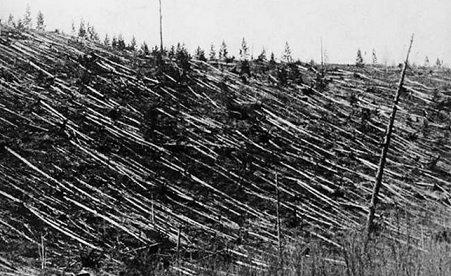
1994 - Comet Shoemaker-Levy 9 breaks apart, then smashes into Jupiter under the watchful eye of dozens of telescopes. The resulting zone of chaos is estimated to be as large as the Earth and lends urgency to the search for asteroids and comets. "Shoemaker-Levy was a turning point," says Benny Peiser, an anthropologist at Liverpool John Moore's University at the 2000 meeting of the American Association for the Advancement of Science in Washington, D.C.
In the course of presenting results of the computer simulation on asteroid impacts, Peiser adds, "If it can happen in front of your nose -- practically in your backyard -- it can also happen on Earth."
Other Comet and Meteor related stories: - listverse.com
The Black Stone - Every year, Muslims from all over the world make pilgrimages to the city of Mecca in modern-day Saudi Arabia. In this ancient city resides the Kaaba, the most holy site of the Islamic world. While no one knows quite how old this temple is (many Muslims believe it to have been built by Abraham), a stone that resides in one corner of the structure may hold the key to its ancient significance.
Encased in silver in the eastern corner of the Kaaba is what is only known as the Black Stone. Muslim tradition states that this stone fell from heaven to show Adam and Eve where to build their altar. Due to its significance, tests upon the stone are not possible, but this has not stopped scientists from proposing other sources for its origins. Geological evidence and nearby craters in the region lead many to believe the Black Stone may be an ancient meteorite. It is possible early settlers in the region did in fact witness the stone fall from the skies and believe it to be a message from Allah himself.
King Tut's Daggers - The boy pharaoh King Tut and his untouched burial site has drawn peoples attention and imagination since its discovery in 1922. Three years after his discovery, Tut still had a few secrets hidden up his sleeves. Scientists studying the mummy found two daggers within the young kings wraps. A gold dagger was found near his abdomen and an iron one near his hip. It was the latter that drew historians attention, as iron was extremely rare during the Bronze Age in which King Tut lived, died, and was mummified.
Further studies into the blades nickel, iron, and cobalt composition lead most scientists to agree that the blade is of extraterrestrial origin, being crafted from one of 11 meteorites discovered in the Egyptian Kingdom during the time of Tuts rule. The rarity and value of such a dagger meant that it would most likely have been used ceremonially rather than practically.
Sochi Olympics - In what may be the best documented and recorded meteor event in history, a 20-meter wide meteor exploded over Chelyabinsk, Russia, in February 2013. The blast was the equivalent of 500 kilotons of TNT, knocking people off their feet, collapsing roofs, and shattering windows over 30 miles away. Over 1,200 people were hospitalized due to the explosion, the majority due to injuries from broken glass. Around four to six tons of meteorite fragments landed in the region, the largest chunk landing in a nearby lake.
When the Russian government recovered the rock from the lakes depths for further study, they decided to take advantage of the meteors strike occurring so closely to the upcoming Winter Olympics they would be hosting. 10 of the gold medals given during the ceremony contained pieces of the Chelyabinsk meteorite in their center, giving the planets top athletes an award distinctly out of this world.
TOP OF SITE / Table of Contents
No history of human development would be complete without a discussion of the world's religions. Religion and spirituality have been an incredibly wonderful and influential part of the human story. Religious differences and prejudices have also lead to great conflict and mis-understandings and have been tied to many past and present wars. On the opposite side of religion is the belief that life was created randomly when the right chemicals combined to create life.
"Modern research has shown that, in many ways, what we believe affects the way our brain constructs the world we experience. Some of these beliefs are conscious. You know you have them. Yet many are implicit and you act on them, but don't even know you have them.
If you think life in general is a meaningless accident, your perceptions of the complex world around you will likely be biased toward seeing the meaningless and absurd. Seeing this will in turn reinforce your belief in the meaninglessness of things. If you believe in original sin and the great difficulties of finding salvation, your perceptions will likely be biased toward seeing your own and others' failures, again reinforcing your belief in a self-fulfilling prophecy. Our beliefs about who we are and what our world is like are not mere beliefs and they strongly control our perceptions. So we can gain more control by finding out what we believe and how those beliefs affect us.
Between the traditional religious and materialistic views of who you are, there are a variety of ideas that embrace elements of each which include rich possibilities for personal and social growth. The common element in these other views is that life and the universe do have some meaning and that each of us shares in some form of spiritual nature. Yet they also recognize that something has gone wrong somewhere. We have "temporarily" lost our way. We have forgotten the essential divine element within us and have become psychologically locked into a narrow, traditional, religious or materialist views." - Prof. Charles Tart
It is recommended that further research be conducted to learn more about the similarities and differences of the world religions and spiritual groups and therafter discuss in classrooms and social settings when appropriate. A word of caution, be careful and mindful when having these discussions. Remember the phrase, "never discuss religion or politics at the dinner table".
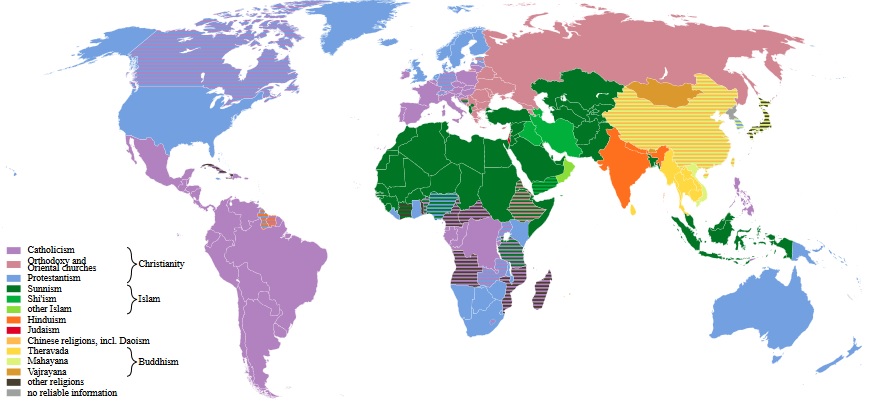 - World Religions map ru.svg
- World Religions map ru.svg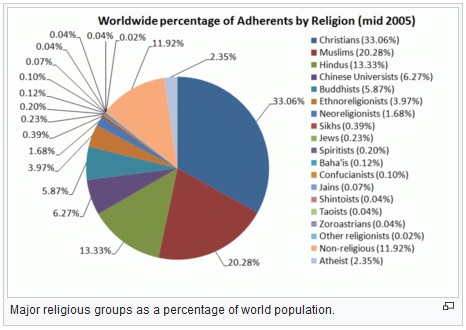
The Abrahamic religions, also referred to collectively as Abrahamism, are a group of Semitic-originated religious sects that claim descent from the practices of the ancient Israelites and the worship of the God of Abraham. The term derives from a figure from the Bible known as Abraham. Abrahamic religion was able to spread globally through Christianity being adopted by the Roman Empire in the 4th century and the Islamic Empire from the 7th century onward. As a consequence, today the Abrahamic religions are one of the major divisions in comparative religion (along with Indian, Iranian, and East Asian religions).
Judaism, Christianity, and Islam are the largest Abrahamic religions in terms of numbers of adherents.
The major Abrahamic religions in chronological order of founding are Judaism in the 7th century BCE, Christianity in the 1st century CE, and Islam in the 7th century CE.
Abrahamic religions with fewer adherents include the faiths descended from Yazdanism (the Yezidi, Yarsani and Alevi faiths), Samaritanism (sometimes classified as a branch of Judaism), the Druze faith (often classified as a branch of Isma'ili Shi'i Islam).
As of 2005, estimates classified 54% (3.6 billion people) of the world's population as adherents of an Abrahamic religion, about 32% as adherents of other religions, and 16% as adherents of no organized religion. Christianity claims 33% of the world's population, Islam has 21%, Judaism has 0.2%.
It has been suggested that the phrase, "Abrahamic religion", may simply mean that all these religions come from one spiritual source. Christians refer to Abraham as a "father in faith" [Rom. 4]. There is an Islamic religious term, Millat Ibrahim (faith of Ibrahim), indicating that Islam sees itself as having practices tied to the traditions of Abraham. Jewish tradition claims descent from Abraham, and adherents follow his practices and ideals as the first of the three spiritual "fathers" or biblical Patriarchs: Abraham, Isaac, and Jacob.
All the major Abrahamic religions claim a direct lineage to Abraham:
As for Me, behold, My covenant is with you, And you will be the father of a multitude of nations. No longer shall your name be called Abram, But your name shall be Abraham; For I will make you the father of a multitude of nations. I will make you exceedingly fruitful, and I will make nations of you, and kings will come forth from you.[Gen. 17:4-6]
Abraham is recorded in the Torah as the ancestor of the Israelites through his son Isaac, born to Sarah through a promise made in Genesis.[Gen. 17:16]
The sacred text of Christianity is the Christian Bible, the first part of which, the Old Testament, is derived from the Jewish Bible, leading to similar ancestry claims as above, although most Christians are gentiles who consider themselves as grafted into the family tree under the New Covenant.
It is the Islamic tradition that Muhammad, as an Arab, is descended from Abraham's son Ishmael. Jewish tradition also equates the descendants of Ishmael, Ishmaelites, with Arabs, as the descendants of Isaac by Jacob, who was also later known as Israel, are the Israelites.
- Wikipedia
TOP OF SITE / Table of Contents
 . .
. .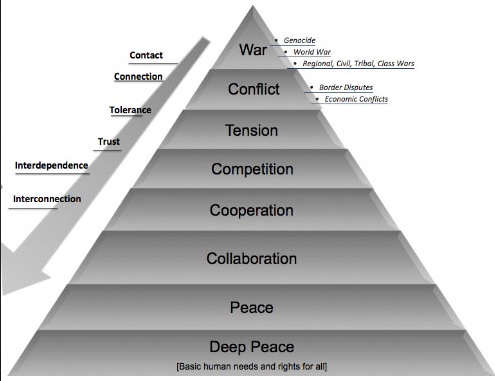 Peace 301:
Peace 301:
A) Peace Education & Facilitation Techniques.
Types of Peace Education:
1) Conflict Resolution / Transformation Peace Education (Micro and Macro)
2) Democratic Peace Education
3) Humans Rights Peace Education
4) Worldview Peace Education
5) Contemporary Peace Education: Critical Peace Education and Yogic Peace Education
. . . And introducing new techniques in this "Peace Education 101 web site:
6) History Based Peace Education
7) Art Based Peace Education
8) Unified Peace Curriculum Education: Peace 101, 201, 301, 401
B) Inner Peace, Enlightenment, Salvation and the End of Suffering.
C) Peace in countries & governments.
D) Peace organizations.
E) Peace awards.
F) Peace treaties thru 1700.
"Peace education is the process of acquiring the values, the knowledge and developing the attitudes, skills and behaviors to live in harmony with oneself and with others and with the natural environment." - Wikipedia
Types of Peace Education:
1) Conflict Resolution / Transformation Peace Education (Micro and Macro)
2) Democratic Peace Education
3) Humans Rights Peace Education
4) Worldview Peace Education
5) Contemporary Peace Education: Critical Peace Education and Yogic Peace Education
. . . And introducing new techniques in this Peace Education 101 web site:
6) History Based Peace Education
7) Art Based Peace Education
8) Unified Peace Curriculum Education: Peace 101, 201, 301, 401
a) their desire for peace,
b) nonviolent alternatives for managing conflict, and
c) skills for critical analysis of structural systems that produce and legitimize injustice and inequality.
James Page suggests peace education be thought of as "encouraging a commitment to peace as a settled disposition and enhancing the confidence of the individual as an individual agent of peace;
as informing the student on the consequences of war and social injustice;
as informing the student on the value of peaceful and just social structures and working to uphold or develop such social structures;
as encouraging the student to love the world and to imagine a peaceful future;
and as caring for the student and encouraging the student to care for others".
Often the theory or philosophy of peace education has been assumed and not articulated.
Johan Galtung suggested in 1975 that no theory for peace education existed and that there was clearly an urgent need for such theory.
More recently there have been attempts to establish such a theory.
Joachim James Calleja has suggested that a philosophical basis for peace education might be located in the Kantian notion of duty.
James Page has suggested that a rationale for peace education might be located in virtue ethics, consequentialist ethics, conservative political ethics, aesthetic ethics and the ethics of care.
Since the early decades of the 20th century, peace education programs around the world have represented a spectrum of focal themes, including anti-nuclear, international understanding, environmental responsibility, communication skills, nonviolence, conflict resolution techniques, democracy, human rights awareness, tolerance of diversity, coexistence and gender equality, among others.
Some have also addressed spiritual dimensions of inner harmony, or synthesized a number of the foregoing issues into programs on world citizenship. While academic discourse on the subject has increasingly recognized the need for a broader, more holistic approach to peace education, a review of field-based projects reveals that three variations of peace education are most common: conflict resolution training, democracy education, and human rights education.
New approaches are emerging and calling into question some of theoretical foundations of the models just mentioned. The most significant new approaches focuses on peace education as a process of Worldview Transformation, Critical Peace Education and Yogic Peace Education
1a. Conflict Resolution Training at the Micro-social level:
"Conflict resolution training at the micro-social level involves teaching people tools and strategies for effectively resolving a conflict within their personal lives. Students in conflict resolution training learn coping skills, anger management, taking responsibility, seeking compromise, improving communication and listening skills, articulating needs, and differentiating fact from emotion. The students benefit from learning that conflict is natural and strategies to work through that conflict can prevent interpersonal violence.
Because this focus of conflict resolution training is on an individual's experiences and means of managing conflict, this strategy is more micro-social by addressing interpersonal concerns, rather than macro-social by addressing larger, more global concerns. These micro social issues include interactions such as relationships with loved ones (friends and family), authority figures (teachers or employers), and other people they encounter in their daily lives." - Study.com
Participants are encouraged to take responsibility for their actions and to brainstorm together on compromises. In general, approaches of this type aim to alter perceptions, beliefs, attitudes, and behaviors from negative to positive attitudes toward conflict as a basis for preventing violence. As one peer mediation coordinator put it: �Conflict is very natural and normal, but you can�t go through your entire life beating everybody up. We have to learn different ways to resolve conflict�. In summary, the emphasis is on training individuals to resolve social and interpersonal disputes through techniques of self-awareness (mindfulness), anger management, dispute identification and analysis, communication, negotiation, (peer) mediation and creative problem solving. We must acknowledge that conflicts and disagreements are part of the human condition that can be looked at as an opportunity to transform emotions and actions before violence and war breaks out. Role playing with modern day examples of existing conflicts can be very helpful in getting participants to see both sides of conflicts and develop empathy for those involved.
1b. Conflict Resolution Training at the Macro-social Level:
I) Identification of Types of Conflicts & Injustices:
Critical analysis of problematic environments, climates and conditions that produce and legitimize injustice and inequality.
a) Protests, Demonstrations.
b) Threats, Confrontations.
c) Exploitation of resources with little regard for civilian population.
d) Denial of physiological needs (food, water, shelter, medical, religious needs, etc..).
e) Violence.
f) Terrorism.
g) Assassination.
h) Coups and Uprisings.
i) Genocide.
j) Tribal / Ethnic / Religious War.
k) Regional War.
l) Civil / National War.
m) World War.
II) Conflict Resolution / Transformation Peace Education Training :
Uses the identification from stage I above to begin the education and transformation process prior to negotiation.
a) Conflict analysis and early warning signs. Conflict analysis often focuses on the problems of culturally or religiously divided states, especially those with at least one side having weak democratic traditions, deep ethnic divisions, and histories of collective violence perpetrated by one or both groups against another or by past/current governments or military groups against civilian populations.
b) Reducing ignorance / non-awareness / non-admission of the situations causing the conflict.
c) Creating consciousness of inequity & injustice of issues, interests, needs and wants.
d) Conflict transformation.
* i) Conflict can be the transforming agent that causes the individual / region to change perception, attitude, behavior and actions.
* ii) Transforming destructive relationships into productive social changes.
* iii) Facilitate transformation / education into peaceful souls (especially on children & young adults).
* iv) Personal transformation (inner peace) related to grief (7 stages of grief) and trauma, dealing with family deaths, anger, bitterness and hatred.
III) The Peace Building Processes:
Options for creating peace between the conflicted parties.
a) Non-violent demonstrations, protests and media campaigns in an attempt to get the offending party to negotiate.
b) Negotiation - Getting all parties to talk face to face and resolve their differences by themselves.
c) Conciliation - A conciliator communicates with each side in individually.
d) Mediation / Facilitation - Promoting justice for all parties in the negotiation process by an impartial third party.
e) Advocacy - A third party promoting one side due to real/perceived injustice.
f) Arbitration / Adjudication - A third party makes a binding decision for both parties.
g) Threat of force - The threat of military action by a third party against the offending party.
h) Economic Sanctions - Third parties imposes economic sanctions against offending party.
i) International Law - Mutually agreed regulations / penalties are imposed on the offending party until negotiations are completed.
These peace-building processes generally fall into four categories (or a combination of them):
* Consensual (the parties reach a agreement by themselves).
* Adjudication (court ordered by third party).
* Legislative (judgments, laws or rule-making determined by a group, organization, ruler or legislative body).
* Informative (individuals / groups create public awareness and sympathy through the media or by demonstrations / marches).
Transformation peacemaking focuses on the means (process) used to reach the ends. By focusing on the process, instead of just the desired results, the mere fact of cooperating and working together to achieve mutually desired goals can be incredibly beneficial, especially considering that the methods used in the past and present are not working.
This approach stresses fairness, mercy, understanding, tolerance, respect, compassion and inclusiveness of all parties in order to create a commitment to building trust and increasing justice, equality, liberty, democracy, finding truths, and healing relationships.
Similar to micro-social conflict transformation training, participants / representatives in conflict resolution negotiations re-address coping skills, anger management, taking responsibility, seeking compromise, improving communication and listening skills, articulating needs and differentiating fact from emotion. The conflicted groups will benefit from agreeing that conflict and differences are natural and cooperating in strategies to solve the conflicts can prevent devastating violence and help develop better relations.
The end goal of these processes include some of the following:
a) Balancing power and social respect between the stronger and weaker parties (important that the advantages to each parties are understood).
* i) The weaker / wronged party gets restored justice and the attacking party hopefully apologizes for the offenses committed.
b) Conflict resolution:
* i) Working together to reach independent and/or mutually acceptable goals.
* ii) Improving relationships between the various parties.
* iii) Listening / understanding all sides without judging.
* iv) Develop / determine / promote solutions that lead to personal / regional social change and improvement.
* v) Attempt to create both individual empowerment along with mutual interdependence and community.
* vi) Reconciliation - quarrels and differences are settled so that violent opposition are eliminated and hopefully friendships are created.
* vii) Reparations - the offending party reimburses the offended party for the offenses committed.
Conflict resolution can be viewed as "Distributed" or as "Expanded":
* "Distributed" resolutions may be equated to "dividing the pie" or "splitting the difference".
* "Expanded" resolutions attempt to discover more solutions than first considered (value creation) prior to reaching agreements / dividing the pie, thereby creating a win-win situation for all parties involved, including their neighbors and the world as a whole.
IV) Sustainable Peace:
Reaching a "Harmony Stage" where conflicts are reduced and negotiations and compromise eliminate the need for war.
a) Early identification of hot spots through analysis.
a) Understanding and reducing inequalities and perceived injustice through education.
b) Creating compassion, kindness and fairness for all parties through communication, negotiations and improvement of social relations.
c) The desired outcome of peace and harmony can not solve the problem at the expense of justice and liberty. The fire will merely smolder and re-ignite later.
d) Creating understanding and comprehension of the benefits that come from creating and sustaining peace and prosperity.
e) Living with Peace, Security, Liberty, Happiness and Joy!
[Also known as Paradise, Utopia, Seventh Heaven, Golden Age, Shangri-La, Nirvona, Shambhala, Satya Yuga, Harmony, Ecstasy, Tranquility, etc].
2) Democracy Peace Education:
Democracy education is generally focused on the political process of conflict and operates on the assumption that increasing democratic opportunities can reduce conflict in non-democratic societies that typically resort to war and violence. Just like with conflict resolution training, democracy education tends to emphasize changing students perception of conflict as positive and a source for promoting growth.
Students are trained to hold their government accountable through the democratic process and engage in the cooperative and adversarial system of a multi-party democracy with mutual respect for the opinions of others. The failure of bombing others into democracy became glaringly apparent in Vietnam during that period when peace education gained much of its momentum as a direct result.
Peace education programs centered on democracy education typically focus on the political processes associated with conflict, and postulate that with an increase in democratic participation the likelihood of violence and war decreases.
At the same time, a democratic society needs the commitment of citizens who accept the inevitability of conflict as well as the necessity for tolerance (U.S. Department of State, The Culture of Democracy). Thus programs of this kind attempt to foster a conflict-positive orientation in the community by training students to view conflict as a platform for creativity and growth.
Approaches of this type train participants in the skills of critical thinking, debate and coalition-building, and promote the values of freedom of speech, individuality, tolerance of diversity, compromise and conscientious objection. Their aim is to produce responsible citizens who will hold their governments accountable to the standards of peace and universal human rights, which the U.S. Constitution is sworn to uphold. Activities are structured to have students assume the role of the citizen that chooses, makes decisions, takes positions, argues positions and respects the opinions of others: skills that a multi-party democracy are based upon. Based on the assumption that democracy decreases the likelihood of violence and war, it is assumed that these are the same skills necessary for creating a culture of peace.
3) Human Rights Peace Education:
Peace education programs centered on raising awareness of human rights typically focus at the level of policies that humanity ought to adopt in order to move closer to a peaceful global community. The aim is to engender a commitment among participants to a vision of structural peace in which all individual members of the human race can exercise their personal freedoms and be legally protected from violence, oppression and indignity.
Human rights education is focused on teaching students about the United Nations declarations on peace as well as how to recognize when a person or group is being treated in such a way that violates the Universal Declaration of Human Rights and promote tolerance and solidarity at the individual and group levels.
In areas where conflict is embedded in the community, human rights education can become difficult and actually lead to greater conflict. When severely oppressed groups learn that they have universal fundamental human rights that have been denied to them, they may lash out with violence. To prevent these outcomes, many such programs are now being combined with aspects of conflict resolution and democracy education schools of thought, along with training in nonviolent action.
United Nations Universal Declaration of Human Rights
United Nations International Covenant on Civil and Political Rights
4) Worldview Transformation Peace Education:
Some approaches to peace education start from insights gleaned from psychology which recognize the developmental nature of human psycho-social dispositions. Essentially, while conflict-promoting attitudes and behaviors are characteristic of earlier phases of human development, unity-promoting attitudes and behaviors emerge in later phases of healthy development.
H.B. Danesh proposes an "Integrative Theory of Peace" in which peace is understood as a psycho-social, political, moral and spiritual reality. Peace education, he says, must focus on the healthy development and maturation of human consciousness through assisting people to examine and transform their worldviews. Worldviews are defined as the subconscious lens (acquired through cultural, family, historical, religious and societal influences) through which people perceive four key issues: 1) the nature of reality, 2) human nature, 3) the purpose of existence, 4) the principles governing appropriate human relationships.
Surveying a mass of material, Danesh argues that the majority of people and societies in the world hold conflict-based worldviews, which express themselves in conflicted intrapersonal, interpersonal, intergroup, and international relationships. He subdivides conflict-based worldviews into two main categories which he correlates to phases of human development: the Survival-Based Worldview and the Identity-Based Worldview. It is through the acquisition of a more integrative, Unity-Based Worldview that human capacity to mitigate conflict, create unity in the context of diversity, and establish sustainable cultures of peace, is increased - be it in the home, at school, at work, or in the international community.
5) Contemporary Peace Education: Critical Peace Education and Yogic Peace Education:
Modern forms of peace education relate to new scholarly explorations and applications of techniques used in peace education internationally, in plural communities and with individuals. Critical Peace Education is a liberating pursuit that seeks to link education to the goals and focus of social justice disrupting inequality through critical teaching. Critical Peace Education addresses the critique that peace education is Imperial and imposing, mimicking the 'interventionism' of Western peace building by foregrounding local practices and narratives into peace education. The project of Critical Peace Education includes conceiving of education as a space of transformation where students and teachers become change agents that recognize past and present experiences of inequity and bias and where schools become strategic sites for fostering liberating change.
Where Critical Peace Education is emancipatory, seeking to foster full humanity in society for everyone, Yogic Peace Education is concerned with transforming personal (as opposed to interpersonal, structural or societal/cultural) violence. In Yogic Peace Education, techniques from Yogic Science are utilized to alter the physical, mental and spiritual instrument of humanity (the self) to address violence that comes from within. Contemporary peace educations (similar to all peace education) relate to specific forms of violence (and their transformation) and similar to teaching Human Rights and Conflict Resolution in schools Critical Peace Education and Yogic Peace Education are complementary curricula that seek to foster positive peace and decrease violence in society.
6) History Based Peace Education:
History Based Peace Education focuses on the history of human development and analysis of past and present conflicts. By reviewing wars and the categorizing the reasons for them we can begin to appreciate the need for better solutions to human disputes and disagreements. We also realize that with better and faster access to education, knowledge, and communication resources, we now have opportunities to identify and resolve conflicts in ways that never existed before the Information Age. Combine that with the ability to improve on others work and share these improvements freely and quickly, then it becomes clear that through knowledge, peace is not only possible, but most likely probable.
7) Art Based Peace Education:
Art Based Peace Education utilizes emotions and creativity to work along side of logic and discipline. By focusing on right brain activities such as drawing, painting, beading, singing and dancing in relation to addressing peaceful solutions to problems, participants discover a fun and enjoyable process in which they can express their inner feelings and creativity. After creating these works of art, it also provides a reminder to remain peaceful in periods of disputes and an example to others of what can be accomplished when creativity is combined with reading, writing and arithmetic.
8) Unified Peace Curriculum Education: Peace 101, 201, 301, 401
Unified Peace Curriculum is combing all current knowledge regarding peace education into a unified training program. After creating a basic curriculum we can then build upon this framework and improve it so that the world has a comprehensive program that leads us to peaceful co-existence with each other. Without such a educational program, obtaining world peace will be extremely difficult, as history has proven. With such a program, world peace will finally be within our grasp and can become part of our universal consciousness.
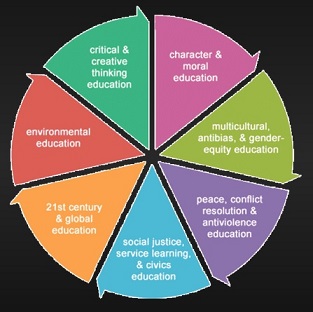
"The World Peace Game" - John Hunter
The World Peace Game is a hands-on political simulation that gives players the opportunity to explore the connectedness of the global community through the lens of the economic, social, and environmental crises and the imminent threat of war. The goal of the game is to extricate each country from dangerous circumstances and achieve global prosperity with the least amount of military intervention. As �nation teams,� students will gain greater understanding of the critical impact of information and how it is used.
United States Institute of Peace - USIPglobalcampus.org
United States Institute of Peace
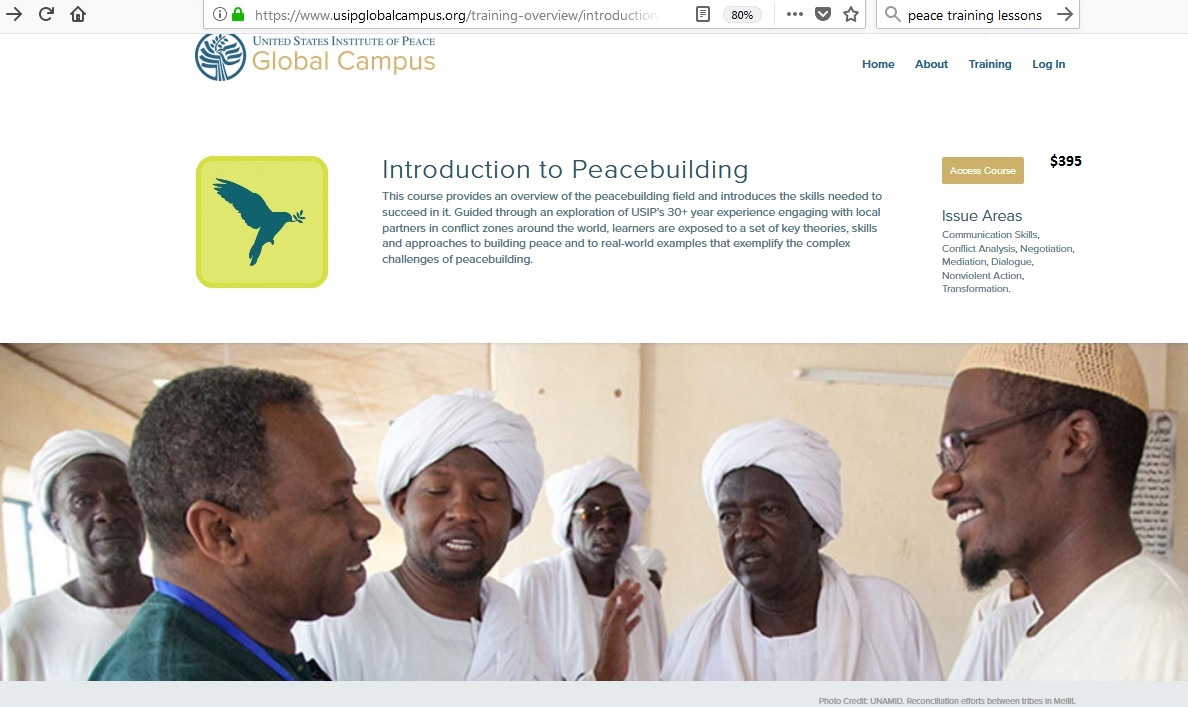
This online, self-paced training introduces learners to the key concepts and skills practiced in the field of international peacebuilding and conflict transformation. The training is designed around the 30+ year experience of the United States Institute of Peace's work(ing) with local partners in conflict zones around the world in places like Nigeria, Pakistan, Myanmar, Colombia, Afghanistan, Northern Ireland, Israel/Palestine, South Sudan, and Iraq.
The training provides learners with first-hand accounts of peacebuilders, describing the challenges and opportunities in their work, short presentations outlining key theories and concepts that guide that work, and opportunities to think about how these knowledge, skills and attitudes can be applied to real-life peacebuilding dilemmas.
This training is an opportunity for learners to get a survey of the peacebuilding field and gain access to more in-depth trainings covering the very topics and skills introduced in this training: conflict analysis, negotiation, mediation, dialogue, nonviolent action, and conflict transformation.
Participants in this training will be able to:
* Explore and define different conceptions of peace, conflict, and violence.
* List and identify key skills and fields of practice utilized in building peace.
* Trace the history and evolution of peacebuilding as both a practice and a field of study.
* Think about how peacebuilding skills can be applied to real-life dilemmas and challenges.
* Compare and contrast application of peacebuilding skills across different contexts.
United States Institute of Peace: Educator Toolkits for High School & Middle School Classrooms
This webpage has links to the pdf manuals in English, Spanish, French and Arabic. You can click on the two links below to go directly to the english version pdf manuals.
United States Institute of Peace: Peace Clubs, Contests and additional resources for Students
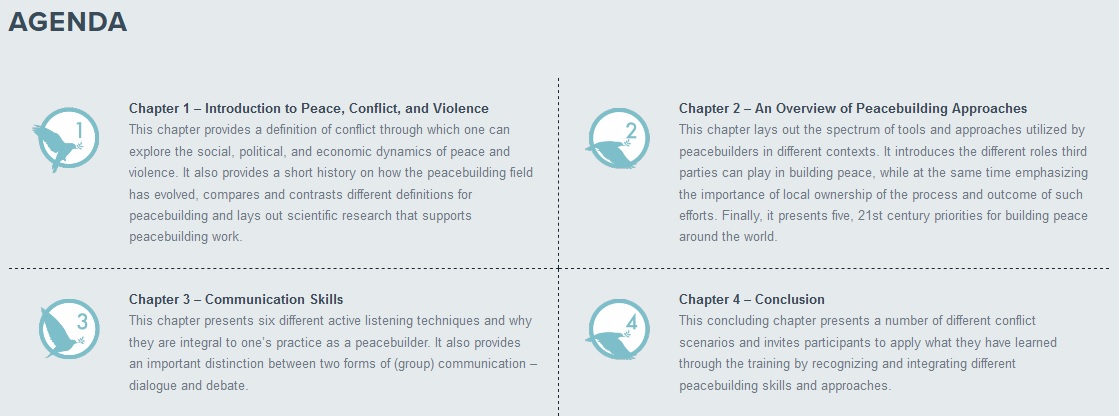
Cultivating Peace educational materials website - cultivatingpeace.ca
Cultivating Peace - Module 1 resource links
Cultivating Peace - Taking Action, 68 page pdf for High Scoool classrooms
United Nations Universal Declaration of Human Rights
United Nations International Covenant on Civil and Political Rights
Available in many languages, the UN homepage has news, the week in review, focus issues, statistics, photos, radio, video and more.
Peace Operations Training Institute
United Nations Universal Declaration of Human Rights
United Nations International Covenant on Civil and Political Rights
Peace Operations Training Institute Courses
This website offers courses online or with a textbook. Some are free and available in multiple languages. It is also interesting just to see the numerous courses offered in the various fields relating to peace keeping, humanitarian efforts and security operations. Each course has a 10-30 page pdf preview that you can view prior to purchasing.
Peace Operations Training Institute Security Training Manual
This 28 page pdf manual (Lesson 1) was developed for UN workers in the field but also has useful information for classroom education.
What is Mindfulness?
Jon Kabat-Zinn, a pioneer of mindfulness in the United States, and the teacher who brought it into the fields of health and medicine, describes it as follows:
"Mindfulness means to pay attention to the present moment, with intention, in a non-judgmental way. It is a practice of awareness and observation."
This simple practice gives us the ability to respond, rather than impulsively react to any event or circumstance in our lives. With a better understanding of the inner workings of our minds and bodies, we learn to make decisions from a place of strength, wisdom, and compassion. As these "mindful moments" add up, they allow us to feel a greater sense of peace in our daily lives and help us connect with ourselves and others in a more positive way.
Mindfulness creates space, changing impulsive reactions to thoughtful responses.
Why Mindfulness In Our Schools?
Social and emotional learning (SEL) has increasingly been recognized as a critical component of student success, both for its intrinsic value and for its relationship to student academic success. The Collaborative for Academic, Social and Emotional Learning (CASEL) lists the following five competencies social emotional learning competencies: Self-Awareness, Self-Management, Social Awareness, Relationship Skills and Responsible Decision-Making.

Thirty years of empirical research shows that a regular mindfulness practice increases focus and attention, executive functioning (the processing of information and learning), the ability to regulate emotion, reduce stress and increase empathy.
Curriculum for children
The Center has developed the Peace Curriculum that features supplemental A.R.T. lessons reflected in the acronym PEACE:
P - Parent Empowerment.
E - Empathy.
A - Anger Management.
C - Character Education.
E - Essential Social Skills.
In addition to The Peace Curriculum, we have additional curriculum in Model Guidance (k-12), student mentoring, conflict mediation, peer helping, Restorative Justice and school-wide character education.
The PEACE PROGRAM Training Services:
TIER ONE YOUTH: The PEACE Program has a standard Tier One Universal School-Wide Curriculum which includes Parent Empowerment, Empathy, Anger Control, and Character Education, and Essential Social Skill lessons. These lessons are divided up into books based on grade level. The curriculum is designed with a school calendar in mind and guided lesson plans. A classroom teacher can provide these lessons once a week. PEACE Lesson is based on the grade level and are fully designed with activities and handouts.
TIER TWO YOUTH: The PEACE Program has a Pull-Out curriculum, based on grade level. A Teacher, School Counselor, Teacher Aide, or other designated person has the option to meet individually with youth or deliver the Pull-Out lessons to a group of kids. The Peace Program's Pull-Out curriculum is taught once or twice a week for 40-60 minutes, providing targeted lessons designed to assist in changing behaviors to more desired outcomes. The lessons are in Empathy, Anger Control, Essential Social Skills, and Character Education. These lessons are more structured around targeted teaching and tell, show, do model with a repetition and practice sheets.
TIER THREE YOUTH: PEACE-ART. Due to the risk level of these youth; you approach learning as if they have never been taught Empathy, Anger Control, Essential Social Skills, and Character Education. Too often we assume the youth have the skills needed to behave pro- social, when in fact, they are deficient all together in the concepts. The PEACE-ART program is based on the Washington State Aggression Replacement Training program and the research results they have (33% reduction in recidivism). The PEACE-ART model includes a quality assurance component, with best practices around incentives, attendance, and adherence to the lesson plans. Without quality assurance the program was found to not be as effective. For the highest risk kids the material needs to be delivered very specifically and discreetly. This is a 10-week program, three times a week, for one hour. The PEACE-ART model has adapted the curriculum to mirror what research has shown works for the highest risk kids. Our trainers for PEACE-ART are Master trainers in Washington State, and are currently leading groups of youth. The PEACE-ART curriculum also includes an Empathy program by Dr. Sara Salmon, designed for this population. It can be added as an extra day to the original model or taught after the initial 10 weeks of Social skills, Anger Control, and Moral Reasoning has been completed.
Discipline System:
A highly-structured discipline system that includes rules, recognition, points and level system has been refined over time and is highly successful with oppositional students and creates an atmosphere that will help students master their social skills in order to achieve academic and social success.
Parent Component:
A Parent and Family Program has been developed that creates social bonding among families and within families while teaching the social skills within the family unit. This program establishes the long-term effectiveness with families.
Peace education-related activities in UNICEF are guided by the Millennium Development Goals and by human rights principles such as those from the Convention on the Rights of the Child, namely the best interests of the child, non-discrimination and the right of the child to participate and be listened to. These principles imply a commitment to peace building, to poverty reduction through investment in children, and to disparity reduction through emphasis on reaching the most vulnerable, the most marginalized and the most deprived children.
In UNICEF, peace education is defined as "the process of promoting the knowledge, skills, attitudes and values needed to bring about behaviour change that will enable children, youth and adults to prevent conflict and violence, both overt and structural; to resolve conflict peacefully; and to create the conditions conducive to peace, whether at an interpersonal, intergroup, national or international level".
This approach is in line with the Education for All (EFA) Dakar Framework of Action which calls for the promotion of an education that helps children and young people to acquire skills such as the prevention and peaceful resolution of conflict as well as social and ethical values.
UNICEF's peace education-related activities form an integral part of a comprehensive approach to fulfilling the right to quality education for all children.
These terms relate to our interpretation of a higher consciousness, a sense of well being, a spiritual being and harmony with a power, a energy greater than
ourselves.
Many great teachers have tried to educate us about this concept but yet it seems to elude the majority of us. The following is an attempt to summarize what it is that
perhaps they have been trying to teach us.
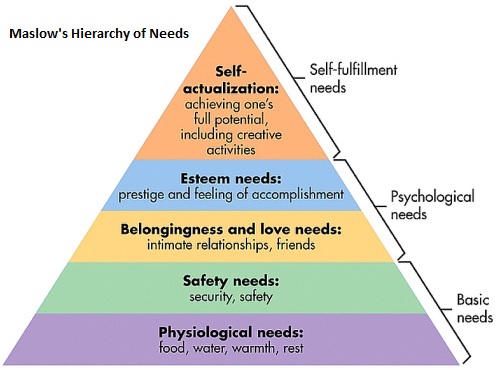 . .
. .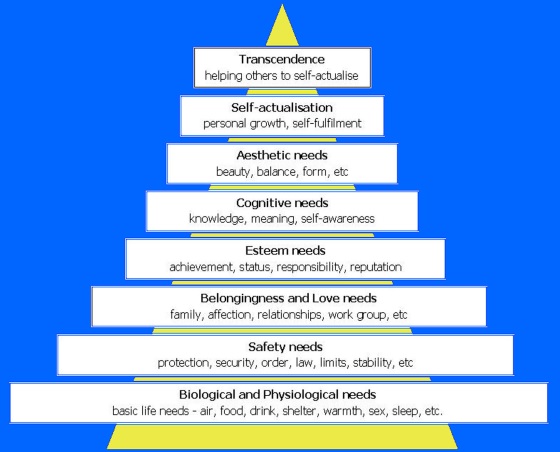
The point is to be aware that the mind and the ego are directly tied and the ego can be very damaging to your health and the health of others. The ego wants us to believe that the mind is all powerful and whatever it has been trained to believe is the absolute truth. We have all heard the term brain-washing, and most of us understand that term implies damage to someone's thoughts and patterns of habit. Thus it is important to keep an open mind and search for life's true meaning for all of us.
One attainable truth is that we as a human race can achieve a higher state of consciousness and that we can use our minds as a tool to help us get there. Just by considering this concept you have likely reached an awareness that you may not have had before. If you stopped reading this subject matter by now, then you have rejected this possibility as insane or nonsensical. But since you are still reading, try this awareness exercise. Think about how your mind reacted to being open and considered reaching new heights. Was your mind disturbed, amused, frightened or excited about this possible new truth? If you can understand this exercise then you just experienced "watching yourself, your mind, your emotions". You became aware that there is something else within our being that can connect us with ourselves and others that are also aware that we have this greater power that supersedes the ego, the mind, and allows us to find truth, joy and inner peace like we have never experienced before. You can practice watching your mind by catching yourself when angry or upset and wondering why you are so upset. What did someone do to you to make you so angry or anxious? Are your emotions justified or did someone push a "trigger" button that set you off? Perhaps you will begin to see that there is a higher presence, a higher awareness that can oversee your egoic mind and help you avoid becoming a victim to it. Once again, the point is that the mind is a tool. Without it you could not be educated to read or write. It is just a phase in our evolution, just like a computer has become a phase in our evolution. A computer is not you but it can help you improve your understanding of life and help you grow and become even more "human". Thus now that we understand our "internal computer" we can now understand that there is more to us that would not have been available until we reached this level of awareness.
This new awareness, new consciousness may be called our soul, our inner spirit (inspiration), our true being or something else. That is something we must discover together and perhaps it becomes our collective or universal consciousness? What we call it is not as important as the truth that we discover as we use it to spread peace around the globe and put an end to war and conflict. The mind can only take us so far. Our higher consciousness can lead us to world peace and prosperity.
The ego centered mind tends to be child like and wants what it wants, usually right now. Our higher self is patient, caring and tends to have a higher intelligence, both intellectually and emotionally. It is like the difference between a child throwing a temper tantrum and a wise person staying calm, cool and collected in the middle of a conflict or hostility. Which consciousness do you think will most likely find a peaceful resolution? The ego centered mind tends to believe that it is right and those that oppose them are wrong, thus they can justify criticizing, disrespecting, bullying, harming and even murdering others. The ego dominant mind does not stop to consider that perhaps it would be better to communicate, cooperate, try to understand their positions, or negotiate a truce or "peace treaty" rather than to just resort to threats and violence in order to get their way.
To reach this higher state of being, try experiencing and appreciating the beauty of nature, art, flowers and being grateful for a nice meal, fellowship with family and friends, and just being alive.
Modern schooling typically teaches students reading, writing and mathematics but does not usually teach peace, creativity, parenting, interpersonal communication techniques, marriage and enlightenment skills. Why is this? Perhaps it is because reading, writing and math are fairly easy to understand and can help people to make a living, but teaching peace, communication, relationship and enlightenment skills (creating a meaningful life) are much more difficult since our evolution in human development is still predominantly based around conflict and wars (our animal type survival instincts), which we understand quite well. It is time we stop merely surviving and start thriving. It is time we start living together in peace and prosperity. Perhaps the best way to achieve that is to transcend our current "fight or flight" mode of the ego centered mind and reach a higher, wiser level of consciousness that can provide us with that type of peace.
Ancient religion has given us insight to help us attain inner peace. Hinduism has the term "enlightenment", Christianity has the term "salvation" and Buddhism has the phrase "the end of suffering". There are likely many more terms describing ways to achieve peace in all religions. Perhaps we can use the knowledge from religious teachings, school and parental education and our own internal awareness to help us transcend our current level of consciousness and reach a higher, more peaceful level of consciousness. World peace will likely be the reward we receive from this transformation.
World Peace and Reality - an eassy on Peace
TOP OF SITE / Table of Contents
The Global Peace Index (GPI) is an attempt to measure the relative position of nations' and regions' peacefulness.
(The Institute for Economics and Peace (IEP) produces the Global Peace Index)
In assessing peacefulness, the GPI investigates the extent to which countries are involved in ongoing domestic and international
conflicts. It also seeks to evaluate the level of harmony or discord within a nation; ten indicators broadly assess what might be
described as a safety and security in society. The assertion is that low crime rates, minimal incidences of terrorist acts and violent
demonstrations, harmonious relations with neighboring countries, a stable political scene and a small proportion of the population being
internally displaced or refugees can be equated with peacefulness.
The GPI is composed of 22-23 qualitative and quantitative indicators, ranging from a nation's level of military expenditure to its
relations with neighboring countries and the level of respect for human rights.
All of the indicators are banded on a scale of 1-5 and qualitative indicators are scored by the Economist Intelligence Unit's extensive
team of country analysts. The indicators are divided into three key thematic categories:
- 5 measures of ongoing conflict such as number of conflicts fought and number of deaths from organized conflict.
- 10 measures of societal safety and security such as number of displaced people, potential for terrorist acts, number of homicides,
number of jailed population.
- 8 measures of militarization such as military expenditure, number of armed service personnel, ease of access to small arms and light
weapons.
The overall score is weighted 60% for internal peace and 40% for external peace.
The GPI is then tested against a range of potential drivers or determinants of peace encompassing standards of governance and efficiency;
the strength of formal and informal institutions and the political process; international openness; demographics; regional integration;
religion and culture; and education and material well-being.
The main findings of the Global Peace Index are:
Peace is correlated to indicators such as income, schooling and the level of regional integration.
Peaceful countries often shared high levels of transparency of government and low corruption.
Small, stable countries which are part of regional blocks are most likely to get a higher ranking.
On average, violence accounts for 37% of GDP in the ten least peaceful countries, compared to only 3% for the ten most peaceful.
Violence containment
spending is economic activity
related to the consequences
or prevention of violence
where the violence is directed
against people or property".
The global impact of violence containment in 2015 was $14.3 Trillion or about 13% of Gross World Product (GWP) or $5 per day per person
on the planet.
The economic losses from just conflict in 2015 were $742 billion.
EVERY $1 INVESTED IN PEACEBUILDING CAN LEAD TO A $16 DECLINE IN THE COST OF ARMED CONFLICT.
- The Institute for Economics and Peace
The world currently spends only around $10 billion per year on peace building.
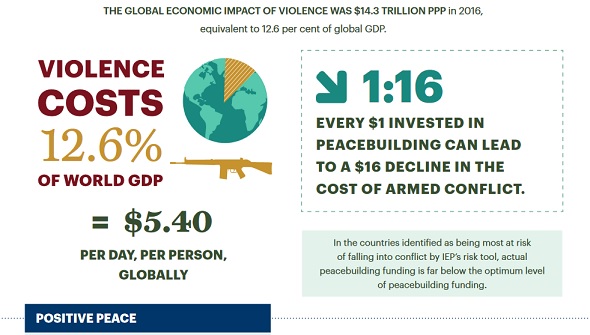
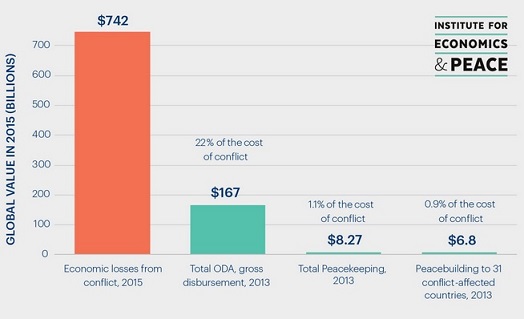
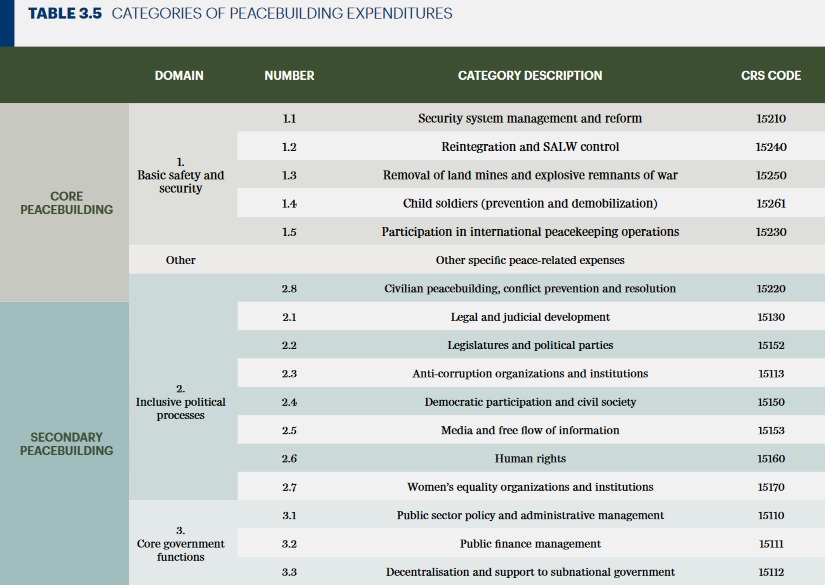
# - Indicator
1 - Number of external and internal conflicts fought.
2 - Number of deaths from organized conflict (external).
3 - Number of deaths from organized conflict (internal).
4 - Level of organized conflict (internal).
5 - Relations with neighboring countries.
6 - Level of perceived criminality in society.
7 - Number of refugees and displaced persons as percentage of population.
8 - Political instability.
9 - Terrorist activity.
10 - Political terror scale.
11 - Number of homicides per 100,000 people.
12 - Level of violent crime.
13 - Likelihood of violent demonstrations.
14 - Number of jailed persons per 100,000 people.
15 - Number of internal security officers and police per 100,000 people.
16 - Military expenditure as a percentage of GDP.
17 - Number of armed-services personnel.
18 - Volume of transfers of major conventional weapons as recipient (imports) per 100,000 people.
19 - Volume of transfers of major conventional weapons as supplier (exports) per 100,000 people.
20 - Financial contribution to UN peacekeeping missions.
21 - Nuclear and heavy weapons capability.
22 - Ease of access to small arms and light weapons.
The total score is based on a scale of 1-5, 1 being at a high peace level, 5 having less peace.
As an approximate guide, scores under 1.5 have very high levels of peace, 1.5 - 2.0 have high levels, 2.0 - 2.5 have moderate peace levels, 2.5 - 3.0 have low levels of peace, over 3.0 have very low levels of peace. They are the ones most in need of our help, the same as if we were in their position and needed the help of our fellow man.
2017 rank -- 2017 score -- Country
1 - 1.111 - Iceland.
2 - 1.241 - New Zealand.
3 - 1.258 - Portugal.
4 - 1.265 - Austria.
5 - 1.337 - Denmark.
6 - 1.360 - Czech Republic.
7 - 1.364 - Slovenia.
8 - 1.371 - Canada.
9 - 1.373 - Switzerland.
10 - 1.408 - Ireland.
10 - 1.408 - Japan.
12 - 1.425 - Australia.
13 - 1.474 - Bhutan.
14 - 1.486 - Norway.
15 - 1.494 - Hungary.
16 - 1.500 - Germany.
17 - 1.515 - Finland.
18 - 1.516 - Sweden.
19 - 1.525 - Belgium.
19 - 1.525 - Netherlands.
21 - 1.534 - Singapore.
22 - 1.547 - Mauritius.
23 - 1.568 - Spain.
24 - 1.595 - Chile.
25 - 1.600 - Romania.
26 - 1.611 - Slovakia.
27 - 1.622 - Botswana.
28 - 1.631 - Bulgaria.
29 - 1.637 - Malaysia.
30 - 1.664 - Qatar.
31 - 1.665 - Croatia.
32 - 1.670 - Latvia.
33 - 1.676 - Poland.
34 - 1.701 - Costa Rica.
35 - 1.709 - Uruguay.
36 - 1.712 - Estonia.
37 - 1.732 - Lithuania.
38 - 1.737 - Italy.
39 - 1.760 - Sierra Leone.
40 - 1.782 - Taiwan.
41 - 1.786 - United Kingdom.
41 - 1.786 - Zambia.
43 - 1.793 - Ghana.
44 - 1.797 - Madagascar.
45 - 1.800 - Laos.
46 - 1.801 - Mongolia.
47 - 1.823 - Korea Republic.
48 - 1.825 - Malawi.
49 - 1.835 - Panama.
50 - 1.838 - Namibia.
51 - 1.839 - France.
52 - 1.85 - Indonesia.
53 - 1.866 - Timor-Leste.
54 - 1.876 - Tanzania.
55 - 1.880 - Argentina.
56 - 1.888 - Serbia.
57 - 1.908 - Albania.
58 - 1.909 - Kuwait.
59 - 1.919 - Vietnam.
60 - 1.929 - Senegal.
61 - 1.930 - Equatorial Guinea.
62 - 1.938 - Moldova.
63 - 1.939 - Togo.
64 - 1.940 - Cyprus.
65 - 1.944 - United Arab Emirates.
66 - 1.948 - Ecuador.
67 - 1.950 - Montenegro.
68 - 1.961 - Paraguay.
69 - 1.977 - Tunisia.
70 - 1.983 - Oman.
71 - 1.986 - Peru.
72 - 1.992 - Kazakhstan.
73 - 1.998 - Greece.
74 - 2.002 - Nicaragua.
75 - 2.004 - Morocco.
76 - 2.007 - Kosovo.
77 - 2.010 - Swaziland.
78 - 2.013 - Mozambique.
79 - 2.014 - Benin.
80 - 2.019 - Sri Lanka.
81 - 2.021 - Guyana.
82 - 2.023 - Liberia.
83 - 2.026 - Haiti.
84 - 2.035 - Bangladesh.
84 - 2.035 - Bosnia and Herzegovina.
86 - 2.045 - Bolivia.
87 - 2.052 - Gabon.
88 - 2.056 - Cuba.
89 - 2.065 - Cambodia.
90 - 2.066 - Lesotho.
91 - 2.070 - Burkina Faso.
92 - 2.072 - Jamaica.
93 - 2.080 - Nepal.
94 - 2.084 - Georgia.
95 - 2.087 - Jordan.
96 - 2.089 - Guinea.
97 - 2.095 - Papua New Guinea.
97 - 2.095 - Trinidad and Tobago.
99 - 2.011 - Dominican Republic.
100 - 2.116 - Angola.
101 - 2.132 - Uzbekistan.
102 - 2.133 - Macedonia.
103 - 2.141 - Belarus.
104 - 2.179 - Myanmar.
105 - 2.182 - Uganda.
106 - 2.185 - Honduras.
107 - 2.196 - Djibouti.
108 - 2.199 - Brazil.
109 - 2.201 - Algeria.
110 - 2.211 - Gambia.
111 - 2.216 - Kyrgyzstan.
112 - 2.22 - Armenia.
113 - 2.227 - Rwanda.
114 - 2.232 - United States.
115 - 2.239 - El Salvador.
116 - 2.242- China.
117 - 2.245 - Guatemala.
118 - 2.263 - Tajikistan.
119 - 2.270 - Turkmenistan.
120 - 2.286 - Thailand.
121 - 2.307 - Ivory Coast.
122 - 2.309 - Guinea-Bissau.
123 - 2.324 - South Africa.
124 - 2.334 - Republic of the Congo.
125 - 2.336 - Kenya.
126 - 2.343 - Niger.
127 - 2.352 - Zimbabwe.
128 - 2.355 - Mauritania.
129 - 2.364 - Iran.
130 - 2.39 - Cameroon.
131 - 2.404 - Bahrain.
132 - 2.426 - Azerbaijan.
133 - 2.474 - Saudi Arabia.
134 - 2.477 - Ethiopia.
135 - 2.495 - Chad.
136 - 2.505 - Eritrea.
137 - 2.541 - India.
138 - 2.555 - Philippines.
139 - 2.583 - Egypt.
140 - 2.596 - Mali.
141 - 2.641 - Burundi.
142 - 2.646 - Mexico.
143 - 2.652 - Venezuela.
144 - 2.707 - Israel.
145 - 2.774 - Palestine.
146 - 2.777 - Colombia.
146 - 2.777 - Turkey.
148 - 2.782 - Lebanon.
149 - 2.849 - Nigeria.
150 - 2.967 - DPR Korea.
151 - 3.047 - Russia.
152 - 3.058 - Pakistan.
153 - 3.061 - DR Congo.
154 - 3.184 - Ukraine.
155 - 3.213 - Central African Republic.
155 - 3.213 - Sudan.
158 - 3.387 - Somalia.
159 - 3.412 - Yemen.
160 - 3.524 - South Sudan.
161 - 3.556 - Iraq.
162 - 3.567 - Afghanistan.
163 - 3.814 - Syria.
- The Institute for Economics and Peace
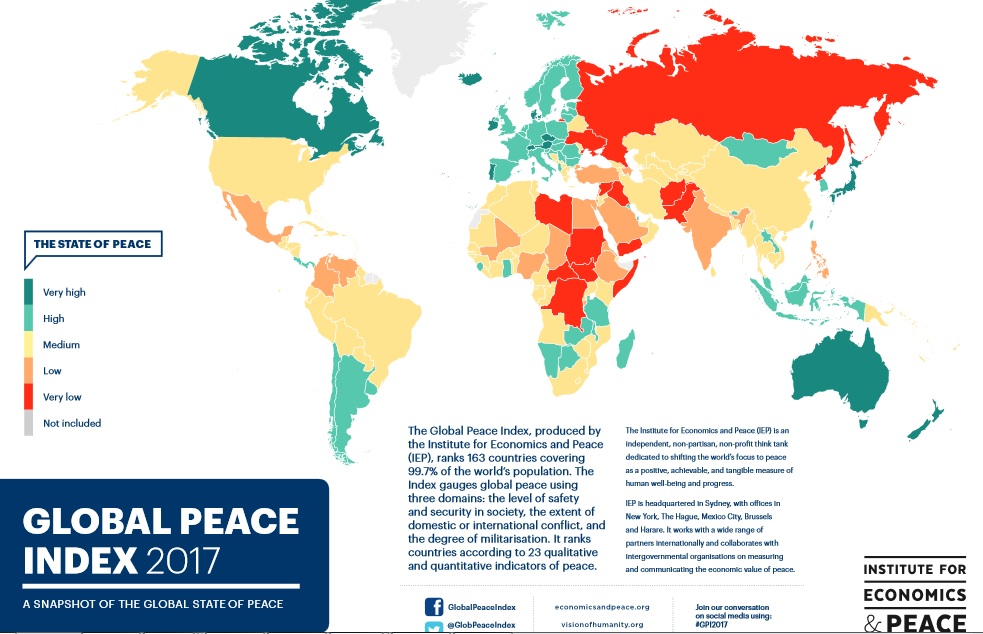
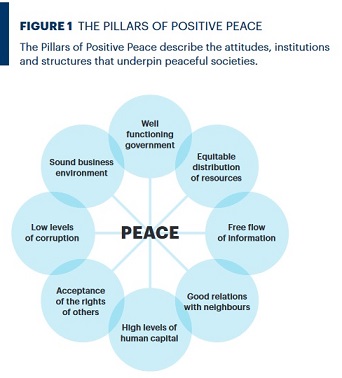
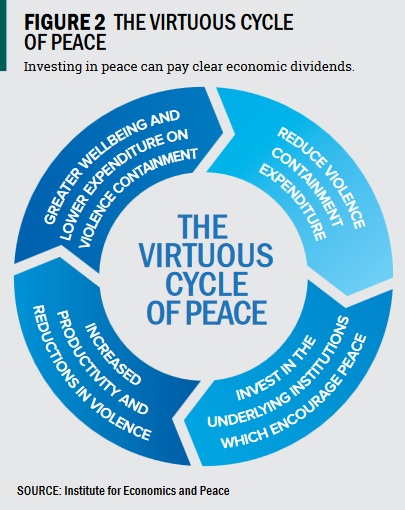

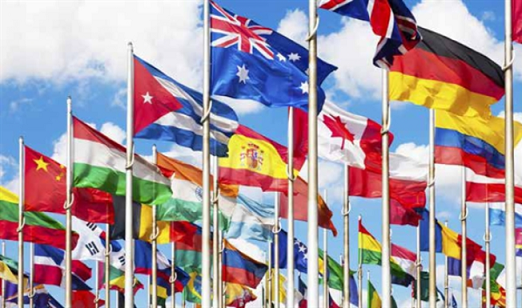 United Nations. (24 October 1945 - present)
United Nations. (24 October 1945 - present)Organizations grouped by categories from startguide.org:
Peace and U.S. Foreign Policy Organizations
2.1. Coalitions of Peace Groups.
2.2. General Peace Groups.
2.3. Veterans Peace Groups.
2.4. Women's Peace Groups.
2.5. Student Peace Groups.
2.6. Nuclear Weapons-Focused Groups.
2.7. Peace Building Groups.
2.8. Conscientious Objection to War Groups.
2.9. Religious Peace Groups.
2.10. Nonviolent Peacemaker Groups.
2.11. Nonviolent Action Policy Groups.
2.12. Other Specialized Peace Groups.
2.13. Peace Policy Institutes.
2.1. Coalitions of Peace Groups:
Win Without War (WWW).
A coalition of national organizations representing broad constituencies that aim to keep America safe by advocating that international cooperation and enforceable international law provide the greatest security for the United States and the world.
United for Peace and Justice (UPJ).
A coalition of more than 1300 local and national groups throughout the United States who have joined together to oppose the U.S. government's policy of permanent warfare and empire-building.
2.2. General Peace Groups:
Peace Action.
Through national and grassroots citizen action, works to redirect federal spending from military to human needs, abolish nuclear weapons, end the international arms trade, and foster the peaceful resolution of conflicts. Formerly Sane-Freeze.
CodePink Women for Peace.
A women-led grassroots organization working to end U.S. wars and militarism, support peace and human rights initiatives, and redirect our tax dollars into healthcare, education, green jobs and other life-affirming programs.
War Resisters League (WRL).
Uses peaceful means to try to create a society that is peaceful, democratic, and free of economic, racial, and sexual oppression - seeking not only to eliminate war, but the causes of war.
Council for a Livable World (CLW).
Provides U.S. Senators with technical and scientific information that helps them make intelligent decisions about nuclear arms control, strategic and conventional weapons, the military budget, and United Nations peacekeeping.
Just Foreign Policy.
An independent and non-partisan mass membership organization dedicated to achieving a U.S. foreign policy based on cooperation, law, and diplomacy.
2.3. Veterans Peace Groups:
Veterans for Peace (VFP).
Drawing on their personal experiences and perspectives gained as veterans, they work to raise public awareness of the true costs and consequences of militarism and war and to seek peaceful, effective alternatives.
Vietnam Veterans Against the War (VVAW).
Committed to the struggle for peace and for social and economic justice for all people.
Military Families Speak Out (MFSO).
An organization of people opposed to the war in Iraq who have relatives or loved ones in the military.
Iraq Veterans Against the War (IVAW).
Gives a voice to the large number of active duty service people and veterans who are against the Iraq war.
2.4. Women's Peace Groups:
Women's International League for Peace and Freedom (WILPF).
Works through peaceful means to achieve world disarmament, full rights for women, racial and economic justice, an end to all forms of violence, and to establish those political, social, and psychological conditions which can assure peace, freedom, and justice for all.
Women's Action for New Directions (WAND).
Works to empower women to act politically to reduce violence and militarism, and redirect excessive military resources toward unmet human and environmental needs.
2.5. Student Peace Groups:
Student Peace Action Network (SPAN).
Working in conjunction with Peace Action, seeks to forge a popular and diverse student peace and justice movement.
Student Pugwash USA (SPUSA).
Encourages young people to probe the reasons for scientific advancement and the implications of technology on citizens everyday lives including issues such as international conflict, environmental protection, genetics research, and civil rights.
2.6. Nuclear Weapons-Focused Groups:
Alliance for Nuclear Accountability (ANA).
A network of 34 local, regional, and national peace and environmental groups representing the concerns of communities in the shadows of the U.S. nuclear weapons sites and radioactive waste dumps working on health, cleaning up and shutting down polluting, obsolete, and unsafe facilities, and stopping construction of many new bomb production plants.
Nuclear Age Peace Foundation.
Initiates and supports worldwide efforts to abolish nuclear weapons, to strengthen international law and institutions, and to inspire and empower a new generation of peace leaders.
Nuclear Threat Initiative (NTI).
Works to reduce the global threats from nuclear, biological and chemical weapons and is co-chaired by Ted Turner and Sam Nunn.
Abolition 2000.
An international global network working for a treaty to eliminate nuclear weapons within a time-bound framework.
Center for Arms Control and Non-Proliferation.
Seeks the reduction and eventual elimination of nuclear weapons as a significant tool of U.S. national security policy.
Arms Control Association (ACA).
Provides policy-makers, the press, and the interested public with authoritative information, analysis, and commentary on arms control proposals, negotiations and agreements, and related national security issues through its public education and media programs and its magazine, Arms Control Today (ACT).
Lawyers Committee on Nuclear Policy (LCNP).
Uses national and international law to promote peace and disarmament, providing a vital link between policy makers, legal scholars, and activists.
Grandmothers for Peace International.
Works primarily for the passage of a global Comprehensive Test Ban and the abolition of nuclear weapons.
Institute For Science and International Security (ISIS).
Dedicated to informing the public about science and policy issues affecting international security and especially stopping the spread of nuclear weapons, bringing about greater transparency of nuclear activities worldwide, and achieving deep reductions in nuclear arsenals.
2.7. Peace Building Groups:
Peace and Justice Studies Association (PJSA).
Promotes the academic fields of peace and justice studies within universities, colleges, and K-12 grade levels.
Peaceful Tomorrows.
An organization founded by family members of those killed on September 11th who have united to turn their grief into action for peace by developing and advocating nonviolent options and actions in the pursuit of justice and thereby break the cycles of violence engendered by war and terrorism throughout the world.
The Peace Alliance.
Advocates for legislation that supports a culture of peace and works to create a United States Department of Peace.
Alliance for Peacebuilding.
A coalition of organizations that seek to use communication, negotiation, and mediation instead of belligerence and violence to resolve conflicts.
Citizens for Global Solutions.
Promotes closer American cooperation with and support for international institutions capable of responding to the threats and challenges of the 21st century; specifically works to promote the International Criminal Court and to reform United Nations peace operations. Formerly the World Federalist Association.
United Nations Association of the USA (UNA-USA).
Dedicated to educating, inspiring, and mobilizing Americans to support the principles and vital work of the United Nations, strengthening the United Nations system, promoting constructive United States leadership in that system, and achievement of the goals of the UN Charter.
Seeds of Peace.
Empowers young leaders from regions of conflict with the leadership skills required to advance reconciliation and coexistence.
Search for Common Ground.
Works to transform the way the world deals with conflict away from adversarial approaches and towards collaborative problem solving.
2.8. Conscientious Objection to War Groups:
Center on Conscience and War (CCW).
Works to defend and extend the rights of conscientious objectors to war and violence.
Committee Opposed to Militarism and the Draft (COMD).
Challenges militarism, the institution of the military, its effect on society, its budget, its role abroad and at home, and the racism, sexism, and homophobia that are inherent in the armed forces and Selective Service System.
National Campaign for a Peace Tax Fund (NCPTF).
Advocates for U.S. federal legislation enabling conscientious objectors to war to have their federal income taxes directed to a special fund which could be used for non-military purposes only.
National War Tax Resistance Coordinating Committee (NWTRCC).
A coalition of groups that provide information and support to people involved in or considering some form of war tax resistance (WTR).
2.9. Religious Peace Groups:
Religions for Peace USA.
Gathers representatives of religious communities in the U.S., promotes multi-religious cooperation for peace and justice, builds on the spiritual, human, and institutional resources of its communities, enhances mutual understanding, and acts for the common good.
Pax Christi USA.
Strives to create a world that reflects the Peace of Christ by exploring, articulating, and witnessing to the call of Christian nonviolence - rejecting war, preparations for war, and every form of violence and domination and advocating the primacy of conscience, economic and social justice, and respect for creation.
Pace e Bene Nonviolence Service.
Works to develop the spirituality and practice of active nonviolence as a way of living and being and as a process for cultural transformation.
2.10. Nonviolent Peacemaker Groups:
Nonviolent Peaceforce (NP).
A federation of over 90 Member Organizations from around the world who work unarmed in conflict areas to protect human rights, deter violence, and help create space for local peacemakers to carry out their work.
Peace Brigades International (PBI), USA.
A regional office of Peace Brigades International which provides nonviolent international peacekeeping in areas of violent conflict and repression, offering unarmed protective accompaniment to individuals, organizations, and communities threatened with political violence and human rights violations as they try to work for social justice and human rights.
Witness for Peace (WFP).
An organization of people committed to nonviolence and led by faith and conscience who work to support peace, justice, and sustainable economies in the Americas by changing U.S. policies and corporate practices which contribute to poverty and oppression in Latin America and the Caribbean.
Christian Peacemaker Teams (CPT).
At the invitation of local peace and human rights workers, places violence-reduction teams in crisis situations and militarized areas around the world who intervene in bold attempts to transform lethal conflict through the nonviolent power of God's truth and love.
2.11. Nonviolent Action Policy Groups:
Albert Einstein Institution (AEI).
Researches and promotes the defense of freedom, democracy, and the reduction of political violence through the use of strategic nonviolent action.
International Center on Nonviolent Conflict (ICNC).
Develops and encourages the study and use of civilian-based, nonmilitary strategies to establish and defend human rights, democracy and justice worldwide.
2.12. Other Specialized Peace Groups:
SOA Watch.
Seeks to close the U.S. Army School of the Americas (now called the Western Hemisphere Institute for Security Cooperation) a facility that trains Latin American officials guilty of human rights abuses through vigils and fasts, demonstrations and nonviolent protest, as well as media and legislative work.
Education for Peace in Iraq Center (EPIC).
Works to improve humanitarian conditions, defend human rights, and support democratic change in Iraq through education, research and policy work.
Americans for Peace Now (APN).
Works to help Israel and the Shalom Achshav movement in Israel to achieve a comprehensive political settlement of the Arab-Israeli conflict consistent with Israel's long-term security needs and its Jewish and democratic values.
US Labor Against the War (USLAW).
A coalition of labor unions that works to end the war and occupation of Iraq, redirect the resources of the nation to meet human needs, and reverse the erosion of our liberties and rights.
2.13. Peace Policy Institutes:
Center for International Policy (CIP).
Promotes a U.S. foreign policy based on peace, international cooperation, demilitarization, and respect for basic human rights.
Project on Defense Alternatives (PDA).
Seeks to adapt military policy to the circumstances and opportunities of the post-Cold War era by developing pragmatic, cost-effective defense policy options that support progress toward more cooperative means of attaining security.
Carnegie Endowment for International Peace.
Works to advance cooperation between nations and promote active international engagement by the United States.
World Policy Institute.
Promotes restraint in the international arms trade by researching the enduring Military Industrial Complex and how that relationship undermines security, democracy, and relationships with other nations.
Carter Center.
Created by former President Carter to engage with those at the highest levels of government and also to work side by side with poor and often forgotten people to wage peace, fight disease, and build hope.
With every news channel reporting the same sad news of violence, crime, wars and disaster, we've come close to believe the popular phrase "faith in humanity lost". Today, where there is unprecedented literacy, our systems still fail to foster peace and kindness, but only mental restlessness and discontent instead. While all this remains true, we often overlook the works of some astounding organizations that burn the candles at both ends to bring world peace. There are hundreds of organizations for world peace around the globe, each one of them working with a different approach and level to make this a better world. Let us have a look at 20 such World Organizations that strive to establish World Peace.
Control Arms Campaign:
Control Arms Campaign, active since 2003, is jointly run by a coalition of over a hundred organizations that work for the lack of controls on arms-trade as it effectively aggravates human rights violation, poverty and dissension. Now, you might think that a lot of laws do exist that binds arm-trade but perhaps none of them were fully international before the Arms Trade Treaty. Control Arms Campaign crusaded for an Arms Trade Treaty in more than hundred countries and it is a product of their massive effort that an international Arms Trade Treaty was agreed upon in the United Nations in 2013.
Code Pink:
Code Pink is a women led organisation that condemns and works to end wars and militarism in United States. It is widely popular for its stupendous effort to prevent the US war on Iraq. They continue to work against the US war in Afghanistan and some other repressive regimes. Although it is a women led group, it widely welcomes male members. They protest by directly challenging the government by civil resistance, street theatre, creative visuals and other non-violent activities.
Flame of Peace:
It is a non-profit organization that promotes world peace. With its headquarters in Austria, the organization encourages people to promote peace by rewarding peace activists, diplomats, politicians and any individual with outstanding effort in the area.
The Asia Foundation:
A non-profit organization, The Asia Foundation functions to improve the prospects of peace in a conflicted zone. It helps in facilitating dialogues, encouraging political reforms, proving rapid response in impending crises. It was founded in 1954 and also works with private and public partners for research purposes. It has helped develop a powerful set of research tools, facilitated people by helping reductions in local taxes etc.
Pathways to Peace:
An international peacebuilding, educational and consulting organization dedicated to making peace a reality, Pathways to Peace is incorporated as an official messenger of the United Nations. It works for United Nations center of human settlements, center for human rights, UNICEF, UNESCO and other such agencies. It works locally and globally to collaborate with other organizations that help spreading the culture of peace.
Global Partnership for the Prevention of Armed Conflict:
Formed in 2003, this member led network of civil society organizations that work for peacebuilding across the world. The committee's main purposes are raising awareness and enhancing methodologies for formal and informal education that fosters a peaceful handling of conflict. It has launched an online platform, called The Peace Portal, for learning and collaborating in the peacebuilding field.
Global Peace Foundation:
Global Peace Foundation is a non-profit organization whose stated mission is to promote an innovative, values-based approach to peacebuilding, guided by the vision of One Family under God. With its headquarters in Maryland, USA, it partners with the government to develop and execute programs that include character in education system and to abolish human trafficking. They organize a cultural peace festival and service projects in different countries around the world.
Food not Bombs:
Now this peacekeeping society works in an entirely different and creative approach to oppose violence. Their ideology says that governments are skewed to allow hunger to persists while insane amounts of money goes in wars. So, as a way of protesting against this, they serve free vegan food to hungry people. This food is the surplus food at grocery store that otherwise goes waste. The group is active through America, Europe, Africa, the Middle East, Asia and Australia. It has no formal leaders and strives to include everyone in its decision making process.
International Alert:
Based in London, this organization works to prevent and end violence around the world by directly working with people affected by violence. They also help in shaping international policies that affect peacebuilding. Founded in 1986, this foundation is active in over 20 countries.
The Elders:
The Elders are an independent group of world leaders working together for global peace and human rights. Founded by Nelson Mandela, the group is shared by honorary people like Desmond Tutu, Kofi Anan, Ela Bhatt and other influential personalities. They believe that it is important to listen to everyone, no matter how unpalatable this may be. They also stress the importance of every individual and how they are capable of making a difference.
Nonviolent Peaceforce:
It is another non-violent peacekeeping group with the goal to protect civilians and reduce violence in areas affected by war. It has been endorsed by 9 Nobel Peace Prize Laureates including Dalai Lama and Desmond Tutu. With the headquarters in Brussels and an office in Minneapolis, Nonviolent Peaceforce's teams are presently deployed in the Philippines, in South Sudan, Myanmar and the Middle East. They work by meeting the key players, officials and local police and civil society leaders and living within conflict zones alongside local people.
World Peace Prayer Society:
With the motto of "May peace prevail on Earth", this society has a Sanctuary that serves as home to annual events, including the World Peace Festival and Planet Peace Day for children etc. This is a Japan based organization with supporters from 191 countries across the word. They encourage creative ways to carry the message of peace to public view.
International Crisis Group:
The International Crisis Group is an independent, non-profit, non-governmental organisation committed to preventing and resolving deadly conflict. According to the seriousness of a situation, the group decides where to work next and reports to thousands of targeted recipients like governments, diplomats and other officials in key roles. Their aim is to maintain high level pressure on these recipients to work in favour of the conflicted areas and bring peace to them.
Peace Boat:
Since its founding in Tokyo, the organization has launched 25 international voyages of passenger ships. They are a floating university of sorts that provides humanitarian aids at their various stops and hold conferences related to global peacekeeping. It is granted a Special Consultative Status by the United Nations and hence submits reports and proposals to them regularly.
Nansen International Office for Refugees:
The committee was internationally in charge of refugees from war between 1930 and 1939. It is a pronounced group that has contributed abundantly for world peace. They are noted for developing a Nansen Passport with the help of which, refugees can travel between countries without an actual passport. The office was closed in 1939 but it is continued by a new office of High Commissioner for Refugees in London.
United Nations Organization:
Needless to say, UNO is one of the most active and widespread organisation for peace keeping in today�s world scenario. It not only works for peace building but for conflict prevention and peace enforcement. Its global partnership includes Member States, the UN Secretariat, host countries, regional organizations and UN partners. They have built up an impressive record of peacekeeping achievements for over more than 60 years of their existence, including winning the Nobel Peace Prize.
United Religions Initiative:
With a membership of more than 1 million people, United Religions Initiative envisions a world at peace, sustained by interconnected communities committed to build respect for diversity, nonviolent resolution of conflict and social and environmental justice. They work to bridge religious and cultural differences to bring peace in the world. URI is composed of more than 85 countries and people from different faiths and spiritual expressions.
Mayors for Peace:
An international organisation dedicated to the promotion of peace, it was an initiative of Hiroshima's Mayor in 1982 in response of the 140,000 deaths due to the atomic bombing of city. They work for the commencement towards the elimination of nuclear weapons by the year 2020. They have over 6800 members from 161 countries around the world.
Human Rights Watch:
Meghan Rhoad, women's rights researcher at Human Rights Watch speaks during a press conference on Parliament Hill in Ottawa on Feb. 13, 2013. The press conference was regarding the release of her report titled "Those Who Take Us Away: Abusive Policing and Failures in Protection of Indigenous Women and Girls in Northern British Columbia, Canada." THE CANADIAN PRESS/Sean Kilpatrick.
Human Rights Watch is one of the most popular organisations around the world that works for peacebuilding. It conducts research and advocacy on human rights. Earlier known by the name Helsinki Watch, it was founded as a private American NGO in 1978. They publicly name and shame governments, people or any institutions that abuse human rights. Each year, Human Rights Watch presents the Human Rights Defenders Award to people around the world for demonstrating leadership and courage in defending human rights.
International Peace Bureau:
The International Peace Bureau works on building a world without war. They believe that reducing the funding for military sector can help save significant amount of money that can be used for fulfilling real human needs. The organization has members from over 70 countries. It was awarded the Nobel Peace Prize in 1910 for their tremendous work in this field.
TOP OF SITE / Table of Contents
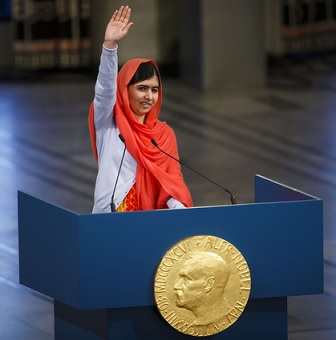
TOP OF SITE / Table of Contents
Wherever there are states, there are treaties. Since ancient times, treaties have been a crucial tool of statecraft and diplomacy. As treaties are agreements between various states, often concluded at the end of a conflict, they profoundly reshape boundaries, economies, alliances and international relations. The following are several of the most important treaties in history.
Egyptian - Hittite Peace Treaty (1259 BCE):
One of the oldest peace treaties known in history, the Egyptian-Hittite Peace Treaty was concluded in or around 1259 BCE. It was a peace treaty concluded between Egyptian Pharaoh Ramesses II and Hittite King Hattusili III.
This brought an end to a two-century war that was being fought between the Egyptian and the Hittite to gain power over the eastern Mediterranean lands. The losses that both the sides suffered over the two centuries were enormous, and the death-toll, beyond imaginable. This treaty is what shaped the Egyptian mythology, as we know of it today.
Magna Carta (1215):
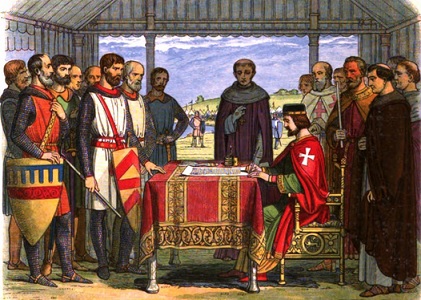
The Magna Carta marks one of the first times a medieval ruler is forced to accept limits on his power, and is now considered to be one of the first declarations of universal human rights.
The charter became part of English political life and was typically renewed by each monarch in turn, although as time went by and the fledgling English Parliament passed new laws, it lost some of its practical significance. At the end of the 16th century there was an upsurge in interest in Magna Carta. Lawyers and historians at the time believed that there was an ancient English constitution, going back to the days of the Anglo-Saxons, that protected individual English freedoms. They argued that the Norman invasion of 1066 had overthrown these rights, and that Magna Carta had been a popular attempt to restore them, making the charter an essential foundation for the contemporary powers of Parliament and legal principles such as habeas corpus. Although this historical account was badly flawed, jurists such as Sir Edward Coke used Magna Carta extensively in the early 17th century, arguing against the divine right of kings propounded by the Stuart monarchs.
The political myth of Magna Carta and its protection of ancient personal liberties persisted after the Glorious Revolution of 1688 until well into the 19th century. It influenced the early American colonists in the Thirteen Colonies and the formation of the American Constitution in 1787, which became the supreme law of the land in the new republic of the United States. Research by Victorian historians showed that the original 1215 charter had concerned the medieval relationship between the monarch and the barons, rather than the rights of ordinary people, but the charter remained a powerful, iconic document, even after almost all of its content was repealed from the statute books in the 19th and 20th centuries. Magna Carta still forms an important symbol of liberty today, often cited by politicians and campaigners, and is held in great respect by the British and American legal communities, Lord Denning described it as "the greatest constitutional document of all times - the foundation of the freedom of the individual against the arbitrary authority of the despot".
Treaty of Tordesillas (1494):
The Treaty of Tordesillas, between Portugal and Spain (technically its component Kingdom of Castile), was negotiated by the Papacy and divided newly discovered lands outside of Europe between the two countries along a line of longitude through what is now eastern Brazil.
As a result, Spanish exploration and colonization mostly focused on the Americas, leading to Spanish control over much of Central and South America; the still undiscovered Brazil fell to Portugal. Portugal was able to explore east, and under Vasco da Gama in 1498, it managed to establish that it was possible to sail from Europe to India.
Initially, the treaty was to Portugal's advantage, as it grew rich off of the trade route between Europe and Asia. However, in the long run, Portugal was edged out of this trade by England and Holland. In terms of controlling land, it was much more difficult for tiny Portugal to seize and hold territory where organized states existed in Asia. Spain, on the other hand, acquired a huge and populous empire in Latin America, and later discovered enormous mineral wealth there.
Ultimately, of course, other powers chose to ignore the treaty, which excluded them, including England, the Netherlands and France.
The Peace of Westphalia (1648):
The Peace of Westphalia consisted of two related treaties, the Treaty of Munster and the Treaty of Osnabruck, signed at the end of the Thirty Years War, which was generally between Catholic and Protestant states, although countries like France played both sides for cynical gain. Although the Peace of Westphalia only originally impacted Western and Central Europe, it eventually had global consequences.
This was because it established some of the most important principles of the international system. The key characteristics of the nation-state were laid out in the treaties signed at the Peace of Westphalia. The treaties established the idea of territorial sovereignty, with each state solely responsible for law and order, taxes and control over the populations in their territories. Additionally, the right of every state to order its own internal religious and political arrangements was recognized. These are now considered global norms.
The Great Peace of Montreal (1701):
The Great Peace of Montreal was a peace treaty between New France and 40 First Nations of North America. It was signed on August 4, 1701 by Louis-Hector de Calliore, governor of New France, and 1300 representatives of 40 aboriginal nations of the North East of North America.
The treaty was to end a 100 year war fought between the Iroquois, allied to the English, and the French, allied to the Hurens and the Algonquians. This was during the colonization era, and it saw the crude emergence of Canada's Quebec, as we know of it, today.
Treaty of Paris (1783):
The Treaty of Paris, signed on September 3, 1783, brought a close to the American Revolutionary War between Great Britain on one side and the United States of America and its allies, France and Spain on the other.
This treaty saw the end of British colonization in North America and proved to be a motivational move for the colonies to unite. The treaty was perhaps too generous to the Americans, as it gave them significant power over trade, territory, etc. As the French minister Vergennes later put it, "The English buy peace rather than make it."
The Treaty, which is the oldest treaty signed by the United States still in effect, ended the American Revolution and established the United States. For that reason alone, it is one of the most consequential treaties in world history. The Treaty of Paris didn't just establish the United States; it did so on highly favorable terms.
The American negotiating team, led by John Jay, Benjamin Franklin and John Adams played their hand astoundingly well. America's allies, France and Spain, did not want the United States to make a separate peace; however, as fighting continued to rage in the Caribbean and Gibraltar, this is exactly what the Americans sought, as they felt they would get a better deal by directly dealing with London. The French had hoped that America would be a small and weak state between the Atlantic and Appalachians, with the British keeping the lands north of the Ohio River and the Spanish controlling a buffer state to the south. Instead, the British decided that a strong and economically successful America was in their interests and against French interests and were convinced to give the new state all the land up to the Mississippi river as well as fishing rights in Canada. This enabled the United States to later expand westward and become a major continental power.
The Congress of Vienna (1814-15):
The Congress of Vienna occurred at the end of the Napoleonic Wars and dramatically reshaped Europe. Several treaties were signed at the Congress, the most important of which was the 1814 Treaty of Paris (there are a lot of Treaties of Paris).
The Congress of Vienna was especially noteworthy because of how successful it was. While some later historians have criticized it as being "reactionary", it prevented the outbreak of a major European war for a hundred years. How did it accomplish this?
First, all parties, including defeated France, were part of the negotiations. This was due to the informal format of the Congress, which allowed various parties, often led by brilliant diplomats such as Talleyrand (France) and Metternich (Austria) to sit down and hash out their positions, until a compromise was reached. While this did not make everyone happy, it ensured that nobody was totally unhappy and involved convoluted horse-trading. For example, Sweden lost Finland to Russia, but gained Norway from Denmark. Denmark, in turn, gained Swedish Pomerania and the Duchy of Lauenburg from Hanover; it gave the first to Prussia and kept the second. In compensation Hanover was given East Frisia from Prussia.
Second, the Congress and the resulting treaties limited the level of punitiveness imposed on the losing parties. France lost the territory acquired by Napoleon but kept its prewar boundaries; it was more often than not treated by the other powers as a fellow victim of Napoleon. Countries that sided with France, like Saxony were allowed to retain their independence, despite calls to the contrary. Unlike the aftermath of World War I, no attempts were made to abolish entire countries or change their internal political arrangements. All this contributed to enormous stability. The only unfortunate thing was that, because of all the "horse-trading" at the conference, an independent Poland was not re-established.
Triple Alliance Treaty (1882):
The treaty amongst the three nations that forged the Central Powers in World War I is known as the Triple Alliance Treaty. The Triple Alliance was the military alliance between Germany, Austria, Hungary, and Italy.
It was signed in 1882, and remained so until the end of World War I. Simply put, it was formed under the mutual hatred that the three nations shared for Britain, France and Russia. The enmity further deepened to the extent of a war breaking out, and the Allies emerged victorious.
Treaty of Versailles (1919):
World War I, or better known as 'The War to End All Wars' was fought from 1914 to 1918 between the Allies, namely, United Kingdom, France, Russia and the Central Powers: Germany, Austria-Hungary and Italy. The Allies emerged victorious and the Treaty of Versailles was created in 1919.
Unfortunately it did more damage than they could possibly fathom. The treaty belittled Germany and Italy, and the whole blame of the war was solely put on Germany alone. They were forced to pay heavy compensation in return, stripped off their military, and utterly disgraced at a global level. These were the reasons which saw Germany come back agitated and ready to seek revenge in World War II.
The Treaty was signed between the Western allies and Germany at the end of World War I. The manner in which it was handled stood in stark contrast with the inclusive way in which post-Napoleonic Europe was organized: terms were dictated, not negotiated. In addition to the Treaty of Versailles, Austria, Hungary, Bulgaria and the remnant of the Ottoman Empire also signed misconceived treaties.
Germany, of course, was given the short end of the stick, and was punished with the loss of territory and crippling reparations, largely at the urging of a vengeful France. While this was a bad idea, if the allies were going to go down this path, they should have gone ever further and broken up Germany, rather than let Europe's most populous nation fester in anger.
President Woodrow Wilson's Fourteen Points also lead to the creation of various new, small, weak nation-states which could hardly defend themselves in the long run against predatory powers like the Soviet Union and Germany. Interference in the internal political structures of defeated powers like Germany also created the conditions for trouble, and ultimately lead to World War II.
The related treaties of Sovres and Lausanne divvied up the Ottoman Empire, with unpleasant consequences for the Middle East: Armenians and Kurds lost out, and most of the Arabs found themselves under French and British colonial rule in artificial states like Syria and Iraq, the consequences of which are abundantly evident today.
The Balkan Pact (1934):
One of the most famous Pacts signed during World War II, the Balkan Pact was a treaty signed by Greece, Turkey, Romania and Yugoslavia on February 9, 1934 in Athens, aimed at maintaining the geopolitical status quo in the region following World War I.
This treaty was signed to ensure peace among the nations who were situated at strategic locations in Europe, and proved to be of a great value to whomsoever would conquer them.
The Paris Peace Treaties (1947):
These treaties were signed on 10 February 1947, as the outcome of the Paris Peace Conference, held from 29 July to 15 October 1946. The victorious wartime Allied powers (principally the United Kingdom, Soviet Union, United States, and France) negotiated the details of peace treaties with Italy and minor Axis powers, namely Romania, Hungary, Bulgaria, and Finland, following the end of World War II in 1945.
The treaties allowed Italy, Romania, Hungary, Bulgaria, and Finland to resume their responsibilities as sovereign states in international affairs and to qualify for membership in the United Nations. The settlement elaborated in the peace treaties included payment of war reparations, commitment to minority rights and territorial adjustments including the end of the Italian Colonial Empire in Africa, Greece, and Albania, as well as changes to the Italian-Yugoslav, Hungarian-Czechoslovak, Soviet-Romanian, Bulgarian-Romanian, Hungarian-Romanian, French-Italian and Soviet-Finnish borders.
Nuclear Disarmament Treaty (1968): One of the most historic movements for mankind, the Nuclear Disarmament Treaty was an act of reducing or eliminating nuclear weapons with the end goal of a nuclear-free world, in which nuclear weapons are completely eliminated.
The Treaty on the Non-Proliferation of Nuclear Weapons, commonly known as the Non-Proliferation Treaty or NPT, is an international treaty whose objective is to prevent the spread of nuclear weapons and weapons technology, to promote cooperation in the peaceful uses of nuclear energy, and to further the goal of achieving nuclear disarmament and general and complete disarmament.
Opened for signature in 1968, the treaty entered into force in 1970. As required by the text, after twenty-five years, NPT Parties met in May 1995 and agreed to extend the treaty indefinitely. More countries have adhered to the NPT than any other arms limitation and disarmament agreement, a testament to the treaty's significance. As of August 2016, 191 states have adhered to the treaty, although North Korea, which acceded in 1985 but never came into compliance, announced its withdrawal from the NPT in 2003 following detonation of nuclear devices in violation of core obligations. Four UN member states have never accepted the NPT, three of which are thought to possess nuclear weapons: India, Israel, and Pakistan. In addition, South Sudan, founded in 2011, has not joined.
TOP OF SITE / Table of Contents
2100 BCE Lagash and Umma Treaty Border agreement between the rulers of the city-states of Lagash and Umma in Mesopotamia, inscribed on a stone block, setting a prescribed boundary between their two states.
1283 BCE Egyptian-Hittite Peace Treaty Treaty between the Egyptian pharaoh Ramses II and the Hittite monarch Hattusili III after the Battle of Kadesh.
493 BCE Foedus Cassianum Ends the war between the Roman Republic and the Latin League.
450 BCE Peace of Callias Ends the Persian Wars.
445 BCE Thirty Years' Peace Ends the First Peloponnesian War between Athens and Sparta.
421 BCE Peace of Nicias Athens and Sparta end the first phase of the Peloponnesian War.
387 BCE Peace of Antalcidas Sets the boundaries of Greek and Persian territory.
241 BCE Treaty of Lutatius Ends the First Punic War.
226 BCE Ebro Treaty Establishes the Ebro River in Iberia as the boundary line between the Roman Republic and Carthage.
215 BCE Macedonian-Carthaginian Treaty Establishes an anti-Roman alliance between Philip V of Macedon and Hannibal of Carthage.
205 BCE Treaty of Phoenice Ends the First Macedonian War.
196 BCE Treaty of Tempe Ends the Second Macedonian War.
188 BCE Treaty of Apamea Between the Roman Republic and Antiochus III (the Great), ruler of the Seleucid Empire.
161 BCE Roman-Jewish Treaty Establishes friendship between Judas Maccabeus and the Roman Republic.
85 BCE Treaty of Dardanos Ends the First Mithridatic War.
387 CE Peace of Acilisene Between the Eastern Roman (Byzantine) Empire and the Sassanian Persian Empire.
532 The Eternal Peace Between the Eastern Roman (Byzantine) Empire and the Sassanian Persian Empire.
562 The Fifty-Year Peace Between the Eastern Roman (Byzantine) Empire and the Sassanian Persian Empire.
587 Treaty of Andelot Between Frankish rulers Guntram and Brunhilda; Guntram adopts Brunhilda's son Childebert II.
628 Treaty of Hudaybiyyah Between Muslims and the Quraish.
638 Ili River Treaty Between Eastern Turks and the Western Turks (Onok).
641 The Bakt Between Nubia and Egypt.
713 Treaty of Orihuela Establishes a dhimmi over the Christian inhabitants of Orihuela.
716 Byzantine-Bulgarian Treaty of 716
Officially ends the Battle of Anchialus and establishes the borders between Byzantium and the Bulgarian Empire.
783 Peace, Friendship and Border treaty between China and Tibet
Provided for Chinese territorial cessions to Tibet.
803 Pax Nicephori Peace between Charlemagne and the Byzantine Empire; recognizes Venice as Byzantine territory.
811 Treaty of Heiligen Sets the southern boundary of Denmark at the Eider River.
815 Byzantine-Bulgarian Treaty of 815
Ends prolonged series of conflicts between the Bulgarian Empire and the Byzantine Empire in Bulgarian favor.
822 Peace treaty between China and Tibet Ends a conflict between China and Tibet
836 Pactum Sicardi Peace between the Duchy of Naples and the Principality of Salerno under Sicard.
843 Treaty of Verdun Partitions the Carolingian Empire.
870 Treaty of Mersen Further partitions the Carolingian Empire.
878-890 Treaty of Alfred and Guthrum Between Alfred of Wessex and Guthrum, the Viking ruler of East Anglia.
907 Rus'-Byzantine Treaty Regulates the status of the colony of Rus' merchants in Constantinople.
911 Rus'-Byzantine Treaty Between the Byzantine Empire and Kievan Rus'.
Treaty of Saint-Clair-sur-Epte Charles the Simple grants Normandy to Rollo.
921 Treaty of Bonn West Francia and East Francia both recognize each other.
945 Rus'-Byzantine Treaty Between the Byzantine Empire and Kievan Rus'.
1004 Chanyuan Treaty Establishes relations between the Northern Song and Liao Dynasties.
1013 Peace of Merseburg Between Holy Roman Emperor Henry II and Duke Boleslaw I the Brave of Poland.
1018 Peace of Bautzen Between Holy Roman Emperor Henry II and Duke Boleslaw I the Brave of Poland.
1031 Peace of Bautzen Between Holy Roman Emperor Conrad II and Duke Mieszko II of Poland.
1033 Peace of Merseburg Between Holy Roman Emperor Conrad II and Duke Mieszko II of Poland.
1059 Treaty of Melfi Pope Nicholas II recognizes Norman influence in southern Italy.
1080 Treaty of Ceprano Pope Gregory VII establishes an alliance with Robert Guiscard and recognizes his conquests.
1082 Byzantine-Venetian Treaty of 1082 Byzantium grants trade concessions to Venice in return for military aid against the Normans.
1091 Treaty of Caen Ends rivalry between William II of England and Duke Robert Curthose of Normandy.
1101 Treaty of Alton Robert Curthose recognizes Henry I as King of England.
1108 Treaty of Devol The Principality of Antioch becomes a nominal vassal of the Byzantine Empire.
1122 Pactum Calixtinum Between Pope Callixtus II and Holy Roman Emperor Henry V, Holy Roman Emperor.
1123 Pactum Warmundi The crusader Kingdom of Jerusalem allies with Venice.
1139 Treaty of Mignano Roger II of Sicily recognised as king by the legitimate Pope Innocent II.
1141 Treaty of Shaoxing Ends conflicts between the Jin Dynasty and Southern Song Dynasty.
1143 Treaty of Zamora Recognises Portuguese independence from the Kingdom of Leon.
1151 Treaty of Tudilon Recognises the conquests of the Crown of Aragon south of the Jocar and recognises future conquests in Murcia.
1153 Treaty of Wallingford Officially ends The Anarchy between Empress Matilda and her cousin Stephen of England.
1155 Treaty of Constance Frederick I, Holy Roman Emperor, and Pope Eugene III agree to defend Italy against Manuel I Comnenus.
1156 Treaty of Benevento Peace between the Papacy and the Kingdom of Sicily.
1158 Treaty of Sahagon Between Sancho III of Castile and Ferdinand II of Leon.
1170 Treaty of Sahagon Between Alfonso VIII of Castile and Alfonso II of Aragon.
1175 Treaty of Windsor Between King Henry II of England and the last High King of Ireland, Rory O'Connor during Norman expansion in Ireland.
1177 Treaty of Venice Peace between the Papacy, the Lombard League, the Kingdom of Sicily, and the Holy Roman Emperor, Frederick Barbarossa.
1179 Treaty of Cazorla Defines the zones of conquest in Andalusia between Aragon and Castile.
1183 Peace of Constance Peace between the Lombard League and the Holy Roman Emperor, Frederick Barbarossa.
Reaffirms the Peace of Venice.
1192 Treaty of Jaffa Ends the Third Crusade.
1200 Treaty of Le Goulet John of England and Philip II of France make peace.
Marriage between Blanche of Castile and Louis VIII of France.
1204 Partitio terrarum imperii Romaniae
Agreement between the participants of the Fourth Crusade on the division of the Byzantine Empire.
Establishment of the Latin Empire
1209 Treaty of Speyer Otto IV renounces the Concordat of Worms.
1212 Golden Bull of Sicily Determines the rights and duties of the Bohemian monarchs.
1214 Treaty of Nymphaeum Establishes peace between the Nicaean Empire and the Latin Empire.
1215 Magna Carta Between King John of England and his barons.
1217 Treaty of Lambeth Between Louis VIII of France and Henry III of England.
1218 Golden Charter of Bern Establishes Bern as an independent state.
1219 Nicaean-Venetian Treaty of 1219
Grants Venetians freedom of trade and duty-free imports throughout the Nicaean Empire in exchange for non-support for the Latin Empire.
1220 Treaty with the Princes of the Church
Between Holy Roman Emperor Frederick II and German bishops.
1222 Golden Bull of 1222 Andrew II of Hungary grants Hungarian nobles the power to disobey the king when he acted contrary to the law.
1226 Treaty of Melun Forces the counts of Flanders to swear fealty to the French crown.
1227 Golden Bull of Rimini Resolves disputes over Chelmno Land.
1229 Treaty of Paris Officially ends the Albigensian Crusade.
1230 Treaty of San Germano Holy Roman Emperor Frederick II restores Sicily to Pope Gregory IX.
1230 Treaty of Ceprano Establishes lines of reconciliation between Pope Gregory IX and Holy Roman Emperor Frederick II.
1231 Treaty of Kruszwica Konrad I of Masovia grants Chelmno Land to the Prussians and the Order of Dobrzyn.
1234 Golden Bull of Rieti Recognizes Kulmerland (Chelmno Land) as subject to the Pope's authority and not as a fief belonging to anyone.
1236 Treaty of Kremmen The Margraviate of Brandenburg gains most of the territory and the right of succession for Pomerania-Demmin.
1237 Treaty of York A feudal agreement between Henry III of England and Alexander III of Scotland.
1244 Treaty of Almizra Establishes the borders of the Kingdom of Valencia.
1244 Treaty of Jotiva Permits the Moors of Spain to hold on to the Castle of Jotiva for two years before relinquishing it to King James I of Aragon.
1245 Al-Azraq Treaty Between the King James I of Aragon and the Muslim commander Mohammad Abu Abdallah Ben Hudzail al Sahuir.
1249 Treaty of Christburg Establishes peace between the pagan Prussian clans and the Teutonic Knights.
1249 Treaty of Lodose Prevents mutual hostility between the Kingdom of Sweden and the Kingdom of Norway from escalating into war.
1250 Treaty of Landin Succession of Pomerania-Demmin: The Margraviate of Brandenburg's rights are dropped in favour of Pomerania-Stettin
1258 Treaty of Corbeil Establishes a border between France and the Crown of Aragon.
1258 Provisions of Oxford Between King Henry III, of England and his Barons.
Established a permanent baronial council / Parliament.
1259 Treaty of Paris[16] Between Louis IX of France and Henry III of England.
1261 Treaty of Nymphaeum A trade and defense pact between the Nicaean Empire and the Republic of Genoa.
1262 Old Covenant Between the major chieftains of Iceland and Haakon IV of Norway.
The signing brought about the union of Iceland with Norway.
1265 Treaty of Pipton Established alliance between Prince Llywelyn ap Gruffudd of Wales and Simon de Montford during the Second Barons' War.
1266 Dictum of Kenilworth Ends hostilities between the supporters of Simon de Montfort, 6th Earl of Leicester and Henry III of England; comes into effect in 1267.
1266 Treaty of Perth Terms of sovereignty over the Western Isles, the Isle of Man, and the Northern Isles agreed between Norway and Scotland.
1267 Treaty of Badajoz King Alfonso X and King Afonso III agree to use the Guadiana River as the boundary line separating Castile and Portugal.
1268 Treaty of Montgomery Henry III of England acknowledges Llywelyn ap Gruffudd's title as the 'Prince of Wales'.
1269 Treaty of Viterbo Grants Charles I of Anjou claims to the defunct Latin Empire.
1271 Peace of Pressburg Ends war between Bohemia and Hungary.
1277 Treaty of Aberconwy Between King Edward I of England and Llewelyn the Last of Wales.
1278 Partage of Andorra Between the Count of Foix, Roger-Bernard III, and the Bishop of Urgell, Pere d'Urtx, establishing their joint-sovereignty over the territory of Andorra.
1281 Treaty of Orvieto Between Charles I of Sicily, the Republic of Venice, and Philip of Courtenay; attempts to recover the Latin Empire.
1283 Treaty of Rheinfelden Duke Rudolph II of Austria surrenders power to his older brother Albert I of Germany.
1285 Rostock Peace Treaty Between 8 Hanseatic towns in the Baltic region, the dukes of Saxony and Pomerania, the prince of Rogen, the lords of Schwerin and Dannenberg and the nobility of Rostock.
1289 Treaty of Birgham Attempts to end competing claims between the House of Balliol and the House of Bruce for the Scottish throne; never comes into effect.
1291 Treaty of Tarascon Ends the Aragonese Crusade.
1295 Auld Alliance Scotland and France forge the first treaty of mutual self-defense against England.
1296 Treaty of Anagni Reaffirms the Treaty of Tarascon, but fails to diplomatically settle the Sicilian question.
1302 Peace of Caltabellotta Ends the War of the Sicilian Vespers.
1303 Treaty of Paris Restores Gascony to England from France during the Hundred Years' War.
1304 Treaty of Torrellas Brought peace to Castile and Aragon and divided up the Kingdom of Murcia between them.
1305 Treaty of Athis-sur-Orge France acquires the cities of Lille, Douai, and Bothune and Flanders retains its independence.
1306 Treaty of Elche Modifies the Treaty of Torrellas and grants Cartagena to Castile.
1309 Treaty of Soldin The Teutonic Order purchases from Margrave Waldemar of Brandenburg-Stendal the rights to Pomerelia and Danzig.
1317 Treaty of Templin Ascanians surrender the territories of Schlawe-Stolp to the Pomeranians.
1323 Treaty of Noteborg Sets the boundary between Sweden and Novgorod Republic.
1325 Treaty of Paris Count Louis of Flanders relinquishes Flemish claims over Zeeland.
1326 Treaty of Corbeil Renews the Auld Alliance between France and Scotland.
1327 Treaty of Novgorod End decades of border skirmishes at the border of Norway and Novgorod Republic.
1328 Treaty of Edinburgh-Northampton Between Edward III of England and the Scots.
1329 Treaty of Pavia Between Louis IV, Holy Roman Emperor and his nephews.
1338 Declaration of Rhense German princes elect German kings without the consent of the Papacy.
1340 Truce of Esplochin Between the English and French crowns during the Hundred Years' War.
1343 Treaty of Kalisz Between King Casimir III the Great of Poland and the Teutonic Knights.
1354 Treaty of Stralsund Settles border disputes between the duchies of Mecklenburg and Pomerania.
1354 Treaty of Mantes First peace between Charles II of Navarre and John II of France.
1355 Treaty of Valognes Second peace between Charles II of Navarre and John II of France.
1355 Treaty of Paris Recognizes the annexation of the Barony of Gex by the county of Savoy.
1358 Treaty of Zadar The Republic of Venice loses influence over territories in Dalmatia.
1359 Treaty of London Cedes western France to England; repudiated by the Estates-General in Paris.
1360 Treaty of Brotigny Ends the first phase of the Hundred Years' War.
1370 Treaty of Stralsund Ends the war between the Hanseatic League and Denmark.
1371 Treaty of Vincennes-Edinburgh Renewal of the Auld Alliance between the Kingdoms of France and Scotland.
1373 Anglo-Portuguese Treaty Treaty of alliance between King Edward III of England and King Ferdinand I and Queen Eleanor of Portugal; it is the oldest treaty still in force.
1379 Treaty of Neuberg Divides Habsburg lands between Dukes Albert III and Leopold III.
1380 Treaty of Dovydiokes Jogaila signs a secret peace treaty with the Teutonic Knights against Kestutis.
1382 Treaty of Dubysa Jogaila promises to convert the Grand Duchy of Lithuania to Christianity, cede Samogitia, and establish a four-year alliance with the Teutonic Knights; never comes into effect.
1385 Union of Krewo Establishes a dynastic union between Poland and Lithuania.
1386 Treaty of Windsor Renews the Anglo-Portuguese Alliance.
1390 Treaty of Konigsberg Establishes alliance between Vytautas the Great and the Teutonic Order.
1397 Treaty of Kalmar Establishes the Kalmar Union; becomes null and void in 1523.
1398 Treaty of Salynas Vytautas the Great cedes Samogitia to the Teutonic Knights.
1401 Pact of Vilnius and Radom Reaffirms the Union of Krewo and grants autonomy to the Grand Duchy of Lithuania.
1411 First Peace of Thorn Ends the Polish-Lithuanian-Teutonic War.
1412 Treaty of Lubowla Between Wladyslaw II of Poland and Sigismund of Luxemburg, king of Hungary.
1412 Compromise of Caspe Between the crowns of Aragon and Castile, ensuring the access of the royal House of Trastomara to the Aragonese crown, thus eventually uniting Spain.
1412 Treaty of 1412 Signed by the Swiss Confederation and Frederick IV, Duke of Austria, broken after 2 years by the Swiss.
1413 Union of Horodlo Reaffirms the Union of Krewo and the Pact of Vilnius and Radom; permits Lithuania to have a separate Grand Duke and parliament.
1416 Ottoman-Venetian maritime treaty Maritime trade rights to Republic of Venice.
1420 Treaty of Troyes Attempt to pass the French throne to England.
1422 Treaty of Melno The Teutonic Knights relinquish Nieszawa to Poland and all claims to Samogitia and northern Lithuania to the Grand. Duchy of Lithuania; Poland renounces claims to Pomerelia, Culmerland, and the Michelauer Land east of Culmerland.
1424 Edict of Wielun Outlaws Hussitism in the Kingdom of Poland.
1428 Treaty of Delft Ends hostilities between England and Flanders.
1431 Treaty of Medina del Campo Peace between Portugal and Castile; ratified in Almeirim in 1432.
1432 Union of Grodno Reinforces the Polish-Lithuanian union.
1433 Truce of Leczyca Mitigates hostilities in the Polish-Teutonic War (1431-35) between the Kingdom of Poland and the Teutonic Order in Leczyca.
1435 Treaty of Arras Reconciles a longstanding feud between King Charles VII of France and Philip, Duke of Burgundy.
Peace of Brzesc Kujawski Ends the Polish-Teutonic War (1431-35).
1441 Treaty of Copenhagen Christopher of Bavaria crushed a great peasant rebellion in Northern Jutland; Baltic Sea is opened to Dutch traders.
1443 Treaty of Gyehae Between the Joseon dynasty and So Clan (lord of Tsushima Island); controls Japanese piracy and legitimizes trade between Tsushima Island and a Korean port.
1444 Peace of Szeged[28] Between the Kingdom of Hungary and the Ottoman Empire.
1454 Treaty of Lodi Peace between Milan, Florence and Venice.
Treaty of Colln State of the Teutonic Order pawns Neumark to Electorate of Brandenburg
Treaty of Constantinople between the Ottoman Empire and the Republic of Venice.
1455 Treaty of Mewe State of the Teutonic Order sells Neumark to Electorate of Brandenburg.
1456 Treaty of Yazhelbitsy Establishes peace between Vasili II and the people of Novgorod.
1460 Treaty of Ribe Defines status of Schleswig and Holstein.
1462 Treaty of Westminster Divides Scotland between King Edward IV of England and the Earl of Douglas.
1464 Treaty of York Aligns James III of Scotland with Yorkist England.
1465 Treaty of Conflans Officially ends the Guerre folle (Mad War).
1466 Second Peace of Thorn Ends the Thirteen Years' War between Poland and the Teutonic Knights.
Treaty of Soldin (1466) Duchy of Pomerania becomes a nominal fief of the Electorate of Brandenburg.
Implementation failed, war ensued.
1468 Treaty of Peronne Between Duke Charles I of Burgundy and King Louis XI of France.
1472 Treaty of Prenzlau Declares Albert III, Elector of Brandenburg, ruler of Pomerania-Stettin.
1474 Treaty of Utrecht Ends the Anglo-Hanseatic War between England and the Hanseatic League led by Lubeck and Danzig.
1475 Treaty of Picquigny Louis XI pays Edward IV to stay in England and not pursue his claim to the French throne.
1478 Treaty of Brno Divides Bohemian territories between Ladislaus II of Bohemia and Hungary and Matthias Corvinus.
1479 Peace of Olomouc Ratifies the Treaty of Brno (1478).
Treaty of Alcacovas Between the Kingdom of Castile and Portugal; ends the Castilian Civil War begun in 1474.
Treaty of Constantinople Officially ends the fifteen-year war between Venice and the Ottoman Empire.
1482 Treaty of Fotheringhay Edward IV of England undertook to place the Duke of Albany on his brother's throne of Scotland.
Treaty of Arras Between King Louis XI of France and the governments of the Low Countries.
Treaty of Monsingen Count Eberhard V reunites the divided county of Wurttemberg and declares it indivisible.
1484 Treaty of Bagnolo Ends the War of Ferrara (1482-1484) between Ercole d'Este I and Pope Sixtus IV along with his Venetian allies.
1485 Treaty of Leipzig Divides Saxony between Ernest, Elector of Saxony and Albert, Duke of Saxony.
1488 Treaty of Sable Duke Francis I of Brittany becomes a vassal of King Charles VIII of France.
1489 Treaty of Medina del Campo Primarily a marriage contract between Arthur Tudor and Catherine of Aragon.
Treaty of Frankfurt Between Maximilian of Austria and the envoys of King Charles VIII of France.
Treaty of Dordrecht Establishes an alliance between Holy Roman Emperor Maximilian I and King Henry VII of England.
Treaty of Redon Henry VII of England grants Lord Daubeney of Brittany 6000 English troops.
1490 Treaty of Woking (Okyng) Between King Henry VII of England, and Queen Isabella I of Castile and King Ferdinand II of Aragon, by Ambassador in London, Dr Rodrigo Gonzalez de la Puebla; for the marriage of Catherine of Aragon to Arthur, Prince of Wales.
1491 Peace of Pressburg Defines the future succession of the Austrian and Hungarian kingdoms.
Treaty of Granada Relinquishes the sovereignty of the Moorish Kingdom of Granada to Spain.
1492 Treaty of Bourges (fr) some provinces were to be given to Henry IV of England
Peace of Etaples Ends war between England and France.
1493 Treaty of Barcelona France cedes Roussillon and Cerdagne to Spain in return for Spanish neutrality during its war with Italy.
Treaty of Senlis France cedes the Duchy of Burgundy, the County of Artois, Picardy and the Low Countries to the House of Habsburg.
Treaty of Pyritz Preliminary end to the Brandenburg-Pomeranian conflict.
1494 Treaty of Tordesillas Divides the world between Spain and Portugal.
1496 Intercursus Magnus Resolves some trade wars between England and the Netherlands.
1497 Treaty of Ayton Seven year peace between England and Scotland under the arbitration of Ferdinand and Isabella of Spain.
1499 Treaty of Basel Concludes the Swabian War fought between the Swabian League and the Old Swiss Confederacy.
1500 Treaty of Granada King Ferdinand II of Aragon agrees to support French claims over the Kingdom of Naples.
1501 Treaty of Trente Austria recognises all French conquests in northern Italy.
1502 Treaty of Perpetual Peace Ends hostilities between England and Scotland; void in 1513.
1504 Treaty of Blois Temporarily halts the Italian Wars.
Treaty of Lyons Louis XII of France cedes Naples to Ferdinand II of Aragon.
1511 Treaty of Westminster Treaty of alliance between Henry VIII of England and Ferdinand II of Aragon against France.
1516 Peace of Noyon Divides Italy between France and Spain.
1517 Treaty of Rouen Attempts to renew the Auld Alliance.
1518 Treaty of London Establishes a non-aggression pact between France, England, Holy Roman Empire, the Papacy, Spain, Burgundy and the Netherlands.
1521 Treaty of Bruges Treaty between England and the Holy Roman Empire during the Italian War of 1521-1526.
1522 Treaty of Windsor Between Charles V, Holy Roman Emperor, and Henry VIII of England; its main clause was the invasion of France.
1524 Treaty of Malmo Ends the Swedish War of Liberation.
1526 Treaty of Hampton Court Establishes peace between France and England.
Treaty of Madrid France relinquishes the Duchy of Burgundy and the Charolais; temporarily ends French interests in Italy.
Alliance treaty between Geneva, Berne and Fribourg Ending effective Savoy dynasty rule over Geneva. Geneva became part of the Swiss confederation The treaty was concluded on February 20 and ratified on March 12, 1526.
Treaty of Berwick Three year peace agreement between Scotland and England.
1527 Treaty of Westminster Treaty of alliance between King Henry VIII of England and King Francis I of France against King Charles V of Spain.
1528 Treaty of Gorinchem Between Charles V, Holy Roman Emperor, and Duke Charles of Guelders.
1529 Treaty of Barcelona Francis I, returns the Franche-Comte and promises to return the Duchy of Burgundy.
Treaty of Cambrai Also known as the Paix des Dames (Ladies' Peace).
Treaty of Saragossa Specifies the anti-meridian line of demarcation between Spanish and Portuguese imperial territories.
Treaty of Grimnitz House of Hohenzollern and House of Pomerania agree on legal status and succession in the Duchy of Pomerania.
1533 Treaty of Constantinople Ends hostilities between the Ottoman Empire and the Archduchy of Austria.
1534 Treaty of Bassein Sultan Bahadur of Gujarat cedes the Mumbai Islands and other territories to the Portuguese Empire.
1537 Treaty of Novgorod Russo-Swedish truce
1538 Treaty of Nagyvorad Recognizes John Zopolya as the king of Hungary while Ferdinand I, Holy Roman Emperor retains the western parts of the Hungarian Kingdom.
1541 First Treaty of Bromsebro Between Denmark-Norway and Sweden.
1543 Treaty of Greenwich Contains two agreements that attempts to unite the Kingdom of England with the Kingdom of Scotland.
Treaty of Venlo Duke Wilhelm of Jolich-Cleves-Berg cedes the territory of Guelders and the county of Zutphen to Holy Roman Emperor Charles V.
1544 Treaty of Speyer Establishes peace between Denmark and the Holy Roman Empire.
Treaty of Cropy Holy Roman Emperor Charles V relinquishes his claim to the Duchy of Burgundy and Francis I of France surrenders his claim to the Kingdom of Naples.
1551 Treaty of Weissenburg Declares Archduke Ferdinand of Austria king of Hungary and Transylvania.
1552 Peace of Passau Holy Roman Emperor Charles V guarantees Lutheran religious freedoms to Protestants.
Treaty of Chambord Maurice of Saxony cedes Toul, Verdun, and Metz to Henry II of France.
1555 Peace of Augsburg Between Charles V, Holy Roman Emperor, and the forces of the Schmalkaldic League.
Treaty of Amasya Ends the war between Ottoman Turkey and Safavid Persia.
1556 Treaty of Vaucelles King Henry II of France cedes Franche-Comte to King Philip II of Spain.
1557 Treaty of Novgorod Russia and Sweden, ended the Russo-Swedish War (1554-1557)
Treaty of Pozvol Livonia and Poland-Lithuania, triggered the Livonian War
1559 Peace of Cateau Cambrosis Ends the Italian Wars.
Treaty of Vilna Livonian War: Livonian-Polish-Lithuanian alliance.
1560 Treaty of Edinburgh England, Scotland, France: concludes Siege of Leith, attempts to end Auld Alliance.
1561 Treaty of Vilna Livonian War: Livonian Order subordinated to Poland-Lithuania.
1562 Edict of Saint-Germain Recognizes the existence of French Protestants and guarantees them freedom of conscience and private worship.
Treaty of Hampton Court Establishes military and economic ties between Queen Elizabeth I of England and Huguenot leader Louis I de Bourbon.
1562 Treaty of Mozhaysk Livonian War, Russo-Danish mutual assurance of their claims in Livonia
1563 Edict of Amboise Ends the first phase of the French Wars of Religion.
1564 Treaty of Dorpat Livonian War, Russo-Swedish mutual assurance of their claims in Livonia
1568 Peace of Longjumeau Ends the second phase of the French Wars of Religion; confirms the Edict of Amboise; expires in August 1568.
Treaty of Roskilde (1568) peace between Lubeck, Denmark-Norway and Sweden during the Northern Seven Years' War, not ratified
1569 Union of Lublin Unites the Kingdom of Poland and the Grand Duchy of Lithuania into a single state, the Polish-Lithuanian Commonwealth.
1570 Treaty of Stettin Ends the Northern Seven Years' War.
Peace of Saint-Germain-en-Laye Ends the third phase of the French Wars of Religion.
1572 Treaty of Blois Queen Elizabeth I of England and Catherine de' Medici of France establish an alliance against Spain.
1573 Edict of Boulogne Ends the fourth phase of the French Wars of Religion; gives Huguenots the right to worship in La Rochelle, Montauban, and Nomes.
1576 Edict of Beaulieu Ends the fifth phase of the French Wars of Religion; Henry III of France gives the Huguenots the right of public worship.
Pacification of Ghent Alliance of the provinces of the Netherlands against the Spanish.
1577 Treaty of Bergerac Ends the sixth phase of the French Wars of Religion; Huguenots can practice their faith only in the suburbs of one town in each judicial district.
Edict of 1577 Provides for the removal of Spanish troops from the Netherlands; upholds Pacification of Ghent.
1579 Union of Atrecht The southern states of the Spanish Netherlands express loyalty to the King of Spain.
Union of Utrecht Unifies the northern states of the Netherlands.
1580 Treaty of Fleix Ends the seventh phase of the French Wars of Religion; recognizes previous treaties granting religious privileges to the Huguenots.
Treaty of Plessis-les-Tours Francois, Duke of Anjou becomes sovereign of the Dutch Republic.
1582 Peace of Jam Zapolski Ends the Livonian War between Poland and Muscovy.
1583 Treaty of Plussa A truce between Russia and Sweden; ends the Livonian War (1558-1583).
1584 Treaty of Joinville Forms a Catholic alliance between the French Catholic League and Habsburg Spain against Protestant forces such as Elizabeth I of England.
1585 Treaty of Nemours Revokes previous concessions made to the Huguenots; instigates the War of the Three Henries.
Treaty of Nonsuch England assists Dutch in the Eighty Years' War.
1586 Treaty of Berwick Agreement of amity between Queen Elizabeth I of England and King James VI of Scotland.
1590 Treaty of Ferhat Pasa Ends the war between Ottoman Turkey and Safavid Persia.
Turkish control on Caucasus region.
1595 Treaty of Teusina Ends the Russo-Swedish War (1590-1595).
1598 Peace of Vervins The Spanish withdraw from French territory.
Edict of Nantes Henry IV of France grants French Protestants (or Huguenots) substantial rights in a nation still considered essentially Catholic.
1600 Treaty of Paris Between Henry IV of France and Charles Emmanuel I, Duke of Savoy.
1601 Treaty of Lyon Henry IV of France acquires Bugey, Valromey, Gex, and Bresse.
1604 Treaty of London Ends hostilities between England and Spain.
1606 Treaty of Sitvatorok Ends the Long War between the Ottoman Turkey and the Habsburg Monarchy.
Treaty of Vienna Restores all constitutional and religious rights/privileges to the Hungarians in both Transylvania and Royal Hungary.
1608 Treaty of Lieben Holy Roman Emperor Rudolf II surrenders Hungary, Austrian territories near the Danube River, and Moravia to his brother Matthias.
1609 Treaty of Antwerp Spain and the Netherlands agree to a 12-year truce.
1610 Treaty of Brussol Establishes a military alliance between Charles Emmanuel I and Henry IV of France against the Spanish in Italy.
1612 Treaty of Nasuh Pasha Treaty between Ottoman Turkey and Safavid Persia Revision of 1590 treaty.
Persia regained some of its loses in 1590.
1613 Treaty of Knored Ends the Kalmar War between Denmark and Sweden.
Two Row Wampum Treaty[50] Treaty between the Iroquois and representatives of the Dutch government.
1614 Treaty of Xanten Ends the War of the Jolich Succession.
1615 Peace of Asti Duke Charles Emmanuel I of Savoy relinquishes claims on Monferrato.
Peace of Tyrnau Recognizes Gobor Bethlen as the Prince of Transylvania.
Treaty of Serav Ratifies the treaty of 1612 between Ottoman Turkey and Safavid Persia
1616 Treaty of Loudun Ends hostilities between Queen Marie de' Medici and rebellious French princes led by Henry II, the third Prince of Condo.
1617 Treaty of Pavia Savoy cedes Monferrato to Mantua.
Treaty of Stolbovo Ends the Ingrian War between Sweden and Muscovy.
Peace of Busza Peace between Ottoman Turkey and Polish-Lithuanian Commonwealth
1618 Truce of Deulino Ends the Polish-Muscovite War (1605-18); expires in 1632.
1619 Treaty of Angoulome Ends civil war in France between supporters of Queen Marie de' Medici and her son, King Louis XIII of France.
Treaty of Munich Duke Maximilian of Bavaria allows Holy Roman Emperor Ferdinand II to use his forces in exchange for territories in the Electorate of the Palatinate.
1620 Treaty of Ulm The Protestant Union ceases its support of Frederick V of Bohemia.
1621 Peace of Nikolsburg Ends the war between Prince Gabriel Bethlen of Transylvania and Emperor Ferdinand II of the Holy Roman Empire.
Treaty of Madrid Restores Valtelline to the Grisons and grants Protestants in the region religious freedoms.
Treaty of Khotyn Between Ottoman Turkey and Polish-Lithuanian Commonwealth.
Treaty of the Hague A failed treaty of alliance between Denmark and the Dutch Republic
Treaty of Bremen A failed treaty of commerce between Denmark and the Dutch Republic
1622 Treaty of Montpellier Between King Louis XIII of France and Duke Henry II of Rohan; confirms the Edict of Nantes.
1623 Treaty of Paris France, Savoy, and Venice agree to have Spanish forces leave Valtelline.
1625 Treaty of The Hague England and the Netherlands agree to economically support Christian IV of Denmark during the Thirty Years' War.
1626 Peace of Pressburg Ends the revolt against the Habsburgs.
Treaty of Monzon France and Spain share equal rights in their control of Valtelline.
1627 Capitulation of Franzburg Duchy of Pomerania occupied by Albrecht von Wallenstein's imperial army
1628 Treaty of Munich Recognizes Duke Maximilian of Bavaria as a prince-elector; grants Maximilian control of the Upper Palatinate and the right bank of the Rhine River for thirty years.
1629 Edict of Restitution Holy Roman Emperor Ferdinand II attempts to reinforce the territorial and religious settlements made after the Peace of Augsburg.
Treaty of Lobeck Denmark withdraws from the Thirty Years' War.
Truce of Altmark Ends hostilities between Sweden and the Polish-Lithuanian Commonwealth.
Peace of Alais Between the Huguenots and King Louis XIII of France; confirms the basic principles of the Edict of Nantes with additional clauses.
Treaty of Suza 2 treaties between France, Savoy, England and Scotland
1630 Peace of Regensburg Temporarily halts the War of the Mantuan Succession.
Treaty of Stettin The Duchy of Pomerania allies with and is occupied by the Swedish Empire
Treaty of Madrid Ends English involvement in the Dutch Revolt.
1631 Treaty of Borwalde France and Sweden establish an alliance against the Holy Roman Empire.
Treaty of Cherasco Ends the War of the Mantuan Succession.
Treaty of Munich France and Bavaria establish a secret "Catholic" alliance.
1632 Treaty of Saint-Germain-en-Laye England returns New France (Quebec) to France.
Treaty of Ahmet Pasha Short lived peace treaty, ends hostalities between the Ottoman Turkey and the Safavid Persia
1634 Treaty of Polyanovka Ends the Smolensk War between Poland and Muscovy.
1635 Peace of Prague Between the Holy Roman Emperor, Ferdinand II, and most of the Protestant states of the Holy Roman Empire.
Treaty of Sztumska Wies The Swedish Empire concedes territories to the Polish�Lithuanian Commonwealth.
1636 Treaty of Wismar Establishes alliance between Sweden and France against the Habsburgs.
1638 Treaty of Hamburg Confirms Treaty of Wismar; France pays Sweden 1,000,000 livres.
Treaty of Hartford Cedes Pequot Indian lands to Connecticut River towns and outlaws Pequot settlement and the use of the Pequot language.
1639 Treaty of Berwick Ends the First Bishops' War between Charles I of England and the Scots.
Treaty of Zuhab[60] Ends the war between Safavid Persia and the Ottoman Turkey.
The borderline drawn by the treaty is still effective today.
Treaty of Asurar Ali Establishes the boundary between the Mughals and the Ahom kingdom.
1640 Treaty of Ripon Between Charles I of England and the Scots in the aftermath of the Second Bishops' War.
1642 Treaty of Axim Regulates the jurisdiction of the Netherlands and the Dutch West India Company in the town and polity of Axim.
1643 Solemn League and Covenant Between the Scottish Covenanters and the leaders of the English Parliamentarians.
1645 Second Treaty of Bromsebro Ends the Torstenson War between Sweden and Denmark-Norway.
1647 Truce of Ulm Forces Duke Maximilian of Bavaria to renounce his alliance with Holy Roman Emperor Ferdinand II.
1648 Peace of Westphalia Ends the Thirty Years' War and the Eighty Years' War, and establishes the principle of the sovereignty of nations in use today.
Treaty of Concordia Divides the island of Saint Martin between France and the Netherlands.
1649 Peace of Rueil Ends the opening episodes of the Fronde, France's civil war.
Treaty of Zboriv Places three provinces of Ukraine under the control of the Cossacks.
1650 Treaty of Breda Between Charles II of England and the Scottish Covenanters during the Wars of the Three Kingdoms.
Treaty of Hartford Establishes boundary lines between New Amsterdam and English settlers in Connecticut.
1651 Treaty of Bila Tserkva Establishes peace between the Polish-Lithuanian Commonwealth and the Ukrainian Cossacks after the Battle of Berestechko.
1653 Treaty of Stettin The Swedish Empire and Brandenburg partition Pomerania.
1654 Treaty of Pereyaslav Between Muscovy and Cossack Hetmanate.
Treaty of Westminster Ends the First Anglo-Dutch War.
1655 Treaty of Kedainiai Second Northern War - Grand Duchy of Lithuania becomes Swedish protectorate
Union of Kedainiai Second Northern War - Lithuanian-Swedish union
Treaty of Rinsk Second Northern War - anti-Swedish alliance of Brandenburg-Prussia and Royal Prussian estates
1656 Treaty of Konigsberg (1656) Second Northern War - Duchy of Prussia and Ermland become Swedish fiefs.
Treaty of Marienburg Second Northern War - alliance between Brandenburg-Prussia and Sweden
Treaty of Elbing Second Northern War - Dutch-Swedish settlement of conflicts over Danzig (Gdansk)
Treaty of Labiau Second Northern War - Hohenzollerns become full souvereigns in Prussia and Ermland.
Truce of Vilna Second Northern War / Russo-Polish War Russo-Polish truce and alliance against Sweden
Treaty of Vienna Second Northern War: 1st Habsburg-Polish alliance against Sweden
Treaty of Radnot It envisaged a partition of the Polish-Lithuanian Commonwealth; Transylvania enters the Second Northern War on the Swedish side
Treaty of Butre Between the Gold Coast (West Africa) state of Ahanta and the States General and the Dutch West India Company, establishing a Dutch protectorate over Butre and Upper Ahanta.
1657 Treaty of Vienna Second Northern War: 2nd Habsburg-Polish alliance against Sweden
Treaty of Wehlau Second Northern War: Poland accepts Hohenzollerns as full souvereigns in Prussia, anti-Swedish alliance.
Treaty of Bromberg (Bydgoszcz) Second Northern War - Wehlau confirmed and amended
Treaty of Paris Establishes military alliance between England and France against Spain.
Treaty of Raalte Willem II no longer is viceroy of Overijssel.
1658 Treaty of Hadiach Between Poland and Cossack Hetmanate.
Treaty of Taastrup An accord that preceded the Treaty of Roskilde between Charles X Gustav of Sweden and King Frederick III of Denmark.
Treaty of Roskilde Second Northern War: Denmark-Norway cedes territory ("Skoneland") to Sweden.
Treaty of Valiesar Second Northern War: Sweden temporarily cedes territory to Russia, cession of hostilities.
1659 Treaty of the Pyrenees Ends war between France and Spain.
1659 Concert of The Hague Second Northern War - Anglo-Franco-Dutch agreement regarding peace between Denmark and Swede
1660 Treaty of Copenhagen Second Northern War - peace between Denmark and Sweden, restores Trondheim to Norway and Bornholm to Denmark.
Treaty of Oliva[66] Second Northern War - peace between Sweden, Brandenburg-Prussia and Poland.
1661 Treaty of Cardis[67] Second Northern War - peace between Sweden and Russia.
Treaty of Den Haag The Dutch Empire recognizes Portuguese imperial sovereignty over Recife in Brazil.
1662 Treaty of Montmartre Duke Charles IV gives to Louis XIV the throne to the Duchy of Lorraine.
1663 Treaty of Ghilajharighat Between the Ahoms and the Mughal forces.
1664 Peace of Vasvor Between the Austrian Habsburg Monarchy and the Ottoman Turkey after the Battle of Saint Gotthard; lasted until 1683.
1665 Treaty of Purandar Between Rajput Jai Singh and Shivaji Maharaj.
1666 Treaty of Habenhausen Peace negotiations after the Second Swedish war on Bermen between Sweden and the city of Bremen.
1667 Treaty of Breda Ends the Second Anglo-Dutch War.
Treaty of Andrusovo Ends the war between Muscovy and Poland-Lithuania.
Treaty of Bongaja Sultan Hasanuddin of Makassar recognizes the influence of the Dutch East India Company (VOC) in Indonesian territories.
1668 First Triple Alliance Alliance between England, the United Provinces and Sweden.
Treaty of Aix-la-Chapelle (1668) Ends the War of Devolution between Louis XIV of France and Habsburg Spain.
Treaty of Lisbon (1668) Spain recognizes Portuguese sovereignty after the Portuguese Restoration War; Portugal cedes Ceuta to Spain.
1670 Secret Treaty of Dover France helps England to rejoin the Roman Catholic Church and England assists France militarily against the Dutch Republic.
Treaty of Madrid (1670) Between England and Spain.
Treaty of Copenhagen (1670) An alliance and commercial treaty between Britain and Denmark-Norway, establishing terms of contraband and permitting Danish settlement of the Virgin Islands
1672 Treaty of Buczacz Between the Polish-Lithuanian Commonwealth and Ottoman Turkey.
Podolia under Turkish control.
1674 Treaty of Westminster Ends the Third Anglo-Dutch War.
1675 Strasbourg Agreement First international agreement banning the use of chemical weapons (i.e. poisoned bullets); signed between France and the Holy Roman Empire.
1676 Treaty of Zurawno Between Ottoman Turkey and Polish-Lithuanian Commonwealth Ratifies 1672 treaty.
1677 Treaty of 1677[69] Native American tribes in Virginia swear fealty to the British Empire.
1678 Treaties of Nijmegen Ends the Franco-Dutch War.
Treaty of Casco (1678) Ends war between the eastern Native Americans and the English settlers of Massachusetts Bay Colony.
1679 Treaty of Saint-Germain-en-Laye Swedish Pomerania and Bremen-Verden restored to Sweden after the Scanian War
1681 Treaty of Bakhchisarai Concludes the Russo-Turkish War (1676-1681); establishes a 20-year truce whereby the Dnieper River would separate the Ottoman Empire from Russian territories.
1684 Truce of Ratisbon Ends War of Reunions between France and Spain
1686 Eternal Peace Treaty of 1686 Ends war between Muscovy and Poland.
1689 Treaty of Nerchinsk Ends war between the Russian Empire and the Qing Dynasty of China.
1691 Treaty of Limerick Ends the Williamite War in Ireland.
1697 Treaty of Ryswick Ends the War of the Grand Alliance.
1698 Treaty of Den Haag Attempts to resolve the issue of who would inherit the Spanish throne.
1699 Treaty of Karlowitz Ends the war between the alliance consisting of Austria, Venice and Polish-Lithuanian Commonwealth on one side and the Ottoman Turkey on the other side.
Treaty of Preobrazhenskoye Denmark, Russia, Saxony, and the Polish-Lithuanian Commonwealth divide Swedish territories.
TOP OF SITE / Table of Contents

Possible post graduation thesis papers
Development of realistic peace programs for:
Inner peace.
Local peace.
Regional peace.
National peace.
World peace.
Should there be international law and a international justice system? If so, how will it be run and what type of "army" will enforce it?
Preparing for peace occupations:
Conducting Peace seminars, inspire others.
Peace training for educators, peace promoters, scholarships.
Teaching peace in school, church.
Starting peace organizations.
Fund raising for peace.
Developing Peace laws.
Developing peace requirements/regulations for governments.
Developing peace in art and entertainment: Film, TV, Photography, Paintings.
Using social media to promote and educate for peace.
Websites for peace.
Newsletters for peace.
Writing books for peace.
Working with/for Peace organizations.
Peace and War News collection, observation, dissemination, advise, recommendations to governments/peace organizations, measuring results.
Peace rallies, leading to action.
Peace Research and Development grants, applications for grants.
Development of hypothetical Peace Start-up business plan:
Business description: service or product offerings.
Mission Statement.
Goals.
Non profit?
Capital and resource requirements.
Funding ideas: grants, loans, fund raisers, fundme.com, internet grant websites, ...
Personnel requirements, hiring, training, management, oganization chart, feedback, rewards.
Revenue development strategies.
Target markets, geographies, market analysis.
Potential partners and competitors, current organizations in this industry.
Promotion and getting the word out.
Timelines for each stage of the start-up to be completed.
Benchmarks and measuring tools for success.
Next phases after completing initial goals.
Peace resources:
Wikipedia
Little Book of Inner Peace - Dalai Lama
The Art of Peace - Morihei Ueshiba
The Power of Now - Eckhart Tolle
Zen Mind, Beginner's Mind - Shunryu Suzuki
The Quran
Tao Te Ching
The Bible
Chop wood, Carry water
World Peace Newsletter.com
Peace Education 101.com
World Peace and Reality - an eassy on Peace
Facebook Peace pages


Add a BOOKMARK to find Peace Education 101 again . . Table of Contents
LIVE THE DREAM - ACTUALIZE WORLD PEACE!

You have the power to change the world. You just have to decide that you want to!
If you help "one" person find peace, you will have improved the world.
It may be that the "one" person you inspired by promoting peace, will be the one that actually makes world peace a reality.
Have a Peaceful, Joyful and Uplifting Day!
Love the World, Love your Neighbor, Love yourself, Love Life. Happiness will be your Reward!
Facebook Page @ Facebook.com/Education4Peace - Click Here 
Facebook Page @ Facebook.com/WorldPeaceNewsletter - Click Here 
[Sign Our Guestbook / Announce World Peace Events & Organizations]
[View Our Guestbook]
Please keep "Events & Organizations" announcements short and sweet .)
You may also send private feedback.
Thank you for visiting PeaceEducation101 created in July & August 2017 & World Peace Newsletter. 1996-2017 WPE
Visitor map created on December 3, 2017. Map shows last 30 days history. Click on map for more details. You can change the dates to get more history.
Since much of the data in this peace education curriculum comes from Wikipedia, this text is available under the Creative Commons Attribution-ShareAlike License; additional terms may apply. By using this site, you agree to the Terms of Use and Privacy Policy. Wikipedia is a registered trademark of the Wikimedia Foundation, Inc., a non-profit organization. For additional information and references visit Wikipedia. For more information visit: creativecommons.org/licenses/by-sa/3.0
[Sign Our Guestbook / Announce World Peace Events & Organizations]
You may also send private feedback.
Latest revision: September 8, 2020
Thanks for visiting PeaceEducation101.com 2017-2020. Developed by World Peace Newsletter 1996-2020 WPE